All books

7 Powers
The Foundations of Business Strategy
Hamilton Helmer
In 7 Powers, Hamilton Helmer argues that enduring business success depends on achieving and maintaining one or more of seven types of strategic Power—conditions that create persistent differential returns. Without Power, a business lacks a viable strategy. The book is divided into two main parts. Part I, 'Strategy Statics', introduces and explains the seven types of Power that create durable competitive advantage. Each chapter in this section focuses on one Power. Part II, 'Strategy Dynamics', explores how companies can attain Power over time, including the path to Power and how strategic priorities evolve. The book begins with a foreword by Reed Hastings and an introduction that defines key concepts and lays the theoretical foundation. 7 Powers is relevant today as businesses face increasing competition and rapid technological change. Helmer's framework provides a clear guide for leaders, investors, and entrepreneurs to identify and build sustainable competitive advantages. By understanding the roots of lasting value, decision-makers can navigate complex market dynamics and make informed strategic choices.

A History of the Muslim World
From its Origins to the Dawn of Modernity
Michael Cook
In A History of the Muslim World, Michael Cook argues that the historical development of the Muslim world from its inception to the 18th century reveals the formation, expansion, and transformation of Muslim societies, states, and cultures. The book provides a comprehensive overview of the rise of Islam, the establishment of the Caliphate, and the subsequent fragmentation of Muslim rule, all while highlighting the interactions between Muslim societies and external forces. The book is structured into three parts. Part I covers the emergence of the Muslim world, including the rise of Islam, the Caliphate, and early Islamic civilization. Part II examines the Muslim world from the 11th to the 18th century, focusing on regional developments, including the rise of the Turks, Mongols, and the Ottoman Empire. Part III serves as an epilogue, discussing the Muslim world's interactions with the West and the transformations leading to modernity. This book is relevant today as it provides critical insights into the historical context of the Muslim world, which continues to shape global politics, culture, and identity. Understanding the evolution of Muslim societies helps readers grasp the complexities of contemporary issues, such as governance, law, and intercultural relations. Cook's work invites reflection on the historical forces that inform current dynamics between the Muslim world and the West.

A Theory of Goal Setting and Task Performance
Edwin A. Locke and Gary P. Latham
In A Theory of Goal Setting and Task Performance, Edwin A. Locke and Gary P. Latham argue that conscious, specific, and challenging goals are the chief regulators of human action. When people commit to such goals and receive feedback, task performance rises through four mechanisms—direction, effort, persistence, and strategy use—moderated by ability, self-efficacy, task complexity, situational constraints, and other factors. This theory is backed by nearly 500 studies, making it a robust framework for understanding how goals influence performance. The book is structured into three parts. After a foreword by Albert Bandura and a preface tracing the evolution of motivation theory, Part I (Chapters 1–11) builds the theory. It introduces goal concepts, summarizes core empirical findings, compares goal theory with expectancy and attribution theories, and integrates them into a High-Performance Cycle. Part II (Chapter 12) shows how goal setting informs human-resource practices such as job analysis, selection interviews, appraisal, training, labor relations, and leadership. Part III (Chapters 13–14) extends the theory to complex tasks and macro-level organizational goals, calling for convergence of micro and macro research. Seven appendices compile supporting studies, methodological guidelines, questionnaires, leading researchers, and open research questions. This book is relevant today as organizations strive to enhance performance in an increasingly competitive landscape. It distills twenty-five years of empirical research into a comprehensive statement of goal-setting theory. By explaining how setting difficult, specific goals—and ensuring feedback and commitment—boosts individual, group, and organizational performance, Locke and Latham provide valuable insights for practitioners. Their work not only clarifies the causal chain from goals to action but also addresses complex tasks and macro-level goals, making it essential reading for managers and organizational psychologists aiming to optimize outcomes.

Age of Ambition
Chasing Fortune, Truth, and Faith in the New China
Evan Osnos
In Age of Ambition, Evan Osnos argues that China's economic opening unleashed a fever of personal aspiration—people now chase money, information, and spiritual meaning with unprecedented freedom—and that surge of individual ambition is colliding with the Communist Party's need to control politics and ideas. The book unfolds in three thematic parts: Fortune, Truth, and Faith. Part I follows early economic strivers who ride the boom from poverty to prosperity. Part II tracks citizens who push against propaganda and censorship in search of reliable information. Part III explores the moral and spiritual vacuum that emerges and the hunt for new beliefs, culminating in an Epilogue that ties the threads together. Age of Ambition is narrative reportage on twenty-first-century China. Through eight years of interviews and immersion, Osnos profiles entrepreneurs, activists, artists, and believers who try to vault from village to boardroom, pierce the Great Firewall, or fill a spiritual void. Their quests for money, truth, and faith reveal a society sprinting ahead of the authoritarian system that once bound it. The book argues that this mismatch between soaring personal ambition and tight political control is now the central drama shaping China’s future. This exploration is especially relevant today as the balance between individual freedom and state control continues to evolve in a rapidly changing global landscape.

Age of Extremes
The Short Twentieth Century 1914–1991
Eric Hobsbawm
In Age of Extremes, Eric Hobsbawm argues that the twentieth century, from 1914 to 1991, was a distinct and turbulent historical period marked by extreme violence, ideological conflict, economic transformation, and social upheaval. It can be divided into three phases: an Age of Catastrophe (1914–1945), a Golden Age of growth and stability (1945–1973), and a final period of crisis and fragmentation (1973–1991), ending with the collapse of the Soviet Union and the unraveling of the structures that had defined the century. The book is divided into three parts. Part One, 'The Age of Catastrophe' (Chapters 1–7), covers the period from 1914 to 1945, focusing on the two world wars, the Great Depression, the rise of fascism, and the collapse of liberalism. Part Two, 'The Golden Age' (Chapters 8–13), examines the post-WWII economic boom, the Cold War, social and cultural revolutions, and the emergence of the Third World. Part Three, 'The Landslide' (Chapters 14–19), explores the global crises of the 1970s–1990s, the decline of socialism, cultural shifts, and the uncertain transition into the post-Cold War world. The book begins with a preface and a chapter titled 'The Century: A Bird's Eye View' that sets the stage for the narrative. Age of Extremes is relevant today as it offers insights into the ideological and economic conflicts that continue to shape our world. Hobsbawm's analysis of the rise and fall of ideologies, the impact of technology, and the transformation of everyday life resonates in today's climate of political fragmentation and social change. The book serves as both a scholarly analysis and a personal reflection on a century of extremes, reminding us of the lessons learned and the challenges that lie ahead.

America at the Crossroads
Democracy, Power, and the Neoconservative Legacy
Francis Fukuyama
In America at the Crossroads, Francis Fukuyama argues that the Bush administration’s foreign policy, particularly its reliance on preventive war and military intervention, reflects a troubling evolution of neoconservatism. He critiques this ideology, which he can no longer support, and proposes an alternative approach that balances neoconservative ideals with a more pragmatic, institution-focused strategy. The book begins with a preface where Fukuyama explains his personal journey from neoconservatism to a more critical stance. The first chapter introduces the key themes of the book. The second chapter traces the intellectual history of neoconservatism. The third chapter critiques the Bush administration’s emphasis on preventive war, while the fourth examines how the U.S. justifies its global role. The fifth chapter discusses the challenges of nation-building, and the sixth proposes institutional reforms for global governance. The final chapter outlines Fukuyama’s alternative vision for American foreign policy. This book remains relevant today as the world grapples with the consequences of military interventions and the complexities of nation-building. Fukuyama’s insights challenge policymakers to rethink their strategies in a global landscape marked by uncertainty and shifting power dynamics. His call for a more balanced and pragmatic foreign policy resonates as nations seek to navigate the challenges of the 21st century.

American Genesis
A Century of Invention and Technological Enthusiasm 1870-1970
Thomas P. Hughes
In American Genesis, Thomas P. Hughes argues that from 1870 to 1970, the United States was defined by its technological creativity, which shaped its culture, economy, and global influence. This era of 'technological enthusiasm' saw inventors, engineers, and system builders create large-scale systems that transformed society, embedding values of order, system, and control into modern culture. The book is divided into three main sections: the invention of systems, the spread of large systems, and the emergence of a technological culture and counterculture. It begins with the rise of independent inventors and industrial research labs, moves to the development of large-scale systems like Fordism and Taylorism, and concludes with the role of government in technological projects and the counterculture's critique of these systems. This book remains relevant today as it explores the complexities of technological progress and its societal impact. Understanding the historical context of technological innovation helps us navigate current challenges, including the ethical implications of new technologies and the balance between innovation and societal values.

Antifragile
Things That Gain from Disorder
Nassim Nicholas Taleb
In Antifragile, Nassim Nicholas Taleb argues that antifragility is a property of systems that thrive and grow stronger when exposed to volatility, randomness, disorder, and stressors. It is the opposite of fragility and surpasses resilience or robustness. Taleb posits that understanding and leveraging antifragility can help us navigate uncertainty, make better decisions, and design systems that benefit from chaos rather than suffer from it. The book is structured into seven sections, each exploring different aspects of antifragility. The first section introduces the concept and distinguishes it from fragility and robustness. The second critiques modernity and its tendency to suppress antifragility through over-intervention and centralization. The third presents a nonpredictive approach to understanding the world, emphasizing asymmetry and optionality. The fourth explores the role of optionality, trial and error, and tinkering in innovation. The fifth delves into technical aspects of fragility and antifragility through convexity and nonlinearity. The sixth highlights the power of subtraction in decision-making and risk management, while the seventh discusses the ethical implications of antifragility, focusing on 'skin in the game' and the transfer of fragility. Antifragile is particularly relevant today as we face increasing uncertainty and complexity in various domains, from economics to technology. Taleb's insights encourage individuals and organizations to embrace volatility and adapt to change rather than fear it. By advocating for decentralized, bottom-up approaches, he provides practical strategies for decision-making, innovation, and ethics that resonate in our rapidly evolving world.

Average Is Over
Powering America Beyond the Age of the Great Stagnation
Tyler Cowen
In Average Is Over, Tyler Cowen argues that the American economy is dividing into two distinct groups: those who can work effectively with intelligent machines and those who cannot. The middle class is shrinking, and the future belongs to individuals who can adapt to a hyper-meritocratic, technology-driven world. This shift highlights the growing importance of skills that complement advanced technology. The book is structured into three parts. Part I, 'Welcome to the Hyper-Meritocracy,' introduces the economic divide and the changes in the labor market. Part II, 'What Games Are Teaching Us,' draws parallels between competitive environments like chess and the evolving job landscape. Part III, 'The New World of Work,' examines the implications for geography, education, science, and social contracts in this new economy where mediocrity is no longer acceptable. Average Is Over is particularly relevant today as technological advancements, especially in artificial intelligence and data analytics, reshape the labor market. Cowen's insights shed light on the economic and social consequences of these changes, offering a roadmap for individuals and policymakers. As the middle class continues to erode and new job opportunities often come with low wages, understanding this new landscape becomes crucial for success.
Blood, Sweat, and Pixels
The Triumphant, Turbulent Stories Behind How Video Games Are Made
Jason Schreier
In Blood, Sweat, and Pixels, Jason Schreier argues that every video game is made under abnormal, chaotic conditions. Game development is a grueling, unpredictable process that combines art and technology, and despite decades of experience, it remains a high-risk, high-stress endeavor filled with crunch, compromise, and uncertainty. Schreier highlights the human stories behind the development process, revealing the passion and struggles of the developers who create these games. The book is structured as a series of ten narrative case studies, each focused on the development of a specific video game. It begins with an introduction that outlines the challenges of game development, followed by a reporting note explaining the author's methodology. Each chapter dives into the behind-the-scenes story of a different game, highlighting the unique struggles and decisions faced by the developers. The book ends with an epilogue that reflects on the broader themes and lessons from these stories. Blood, Sweat, and Pixels is relevant today as the gaming industry continues to grow and evolve. With the rise of indie games and the increasing complexity of AAA titles, understanding the development process is crucial for both gamers and industry professionals. Schreier's work sheds light on the often unseen hardships of game development, emphasizing the dedication and creativity that drive developers to overcome challenges and deliver engaging experiences.

Boom
Byrne Hobart and Tobias Huber
In Boom, Byrne Hobart and Tobias Huber argue that financial bubbles, often dismissed as destructive, are actually key drivers of technological progress. They contend that stagnation in technological and economic advancement stems from excessive risk aversion and a lack of vision. Speculative bubbles, by mobilizing capital and enthusiasm, accelerate innovation and help societies escape stagnation. The book is structured into three parts. Part I (Stagnation) diagnoses the causes of technological and economic stagnation, including cultural and institutional risk aversion. Part II (Acceleration) presents case studies of historical technological breakthroughs, such as the Manhattan Project, the Apollo Program, and Bitcoin. Part III (Escape) explores the philosophical and strategic arguments for reigniting progress, emphasizing the role of speculative bubbles in driving innovation. Boom is relevant today as many sectors face stagnation and a lack of bold innovation. The authors challenge conventional economic wisdom by proposing that financial bubbles, rather than being purely destructive, serve as catalysts for technological leaps. In an era where risk aversion often stifles creativity and progress, their insights encourage leaders to embrace risk-taking and visionary thinking to drive future advancements.

Building IBM
Shaping an Industry and Its Technology
Emerson W. Pugh
In Building IBM, Emerson W. Pugh argues that IBM’s dominance in the computer industry was the result of a long-term evolution that began with punched-card systems in the 19th century. Through strategic integration of research, engineering, manufacturing, and business practices, IBM shaped the computing industry and maintained leadership through decades of technological change. The book is divided into 21 chapters, framed by a foreword, preface, and introduction. It follows a chronological structure, beginning with Herman Hollerith’s invention of punched-card systems and the early roots of IBM. It then covers IBM’s growth under Thomas J. Watson Sr. and Jr., its wartime contributions, postwar transition to electronics, the development of System/360, and the company’s later challenges. Each chapter focuses on a specific period or theme, such as R&D, competition, government contracts, or product innovation. The final chapters provide a retrospective on IBM’s trajectory through the 1980s. This book tells the story of IBM’s rise to dominance in the computing industry, beginning with its roots in 19th-century punched-card technology. It explores how IBM evolved through strategic leadership, technological innovation, and organizational discipline. The book challenges myths about the origins of the computer industry, showing how IBM’s early systems laid the groundwork for modern computing. It also examines the company’s internal culture, its responses to external pressures, and the long-term consequences of decisions made decades earlier. Written by a former IBM executive with deep access to company archives, the book offers a detailed, insider-informed history of one of the most influential technology companies of the 20th century.
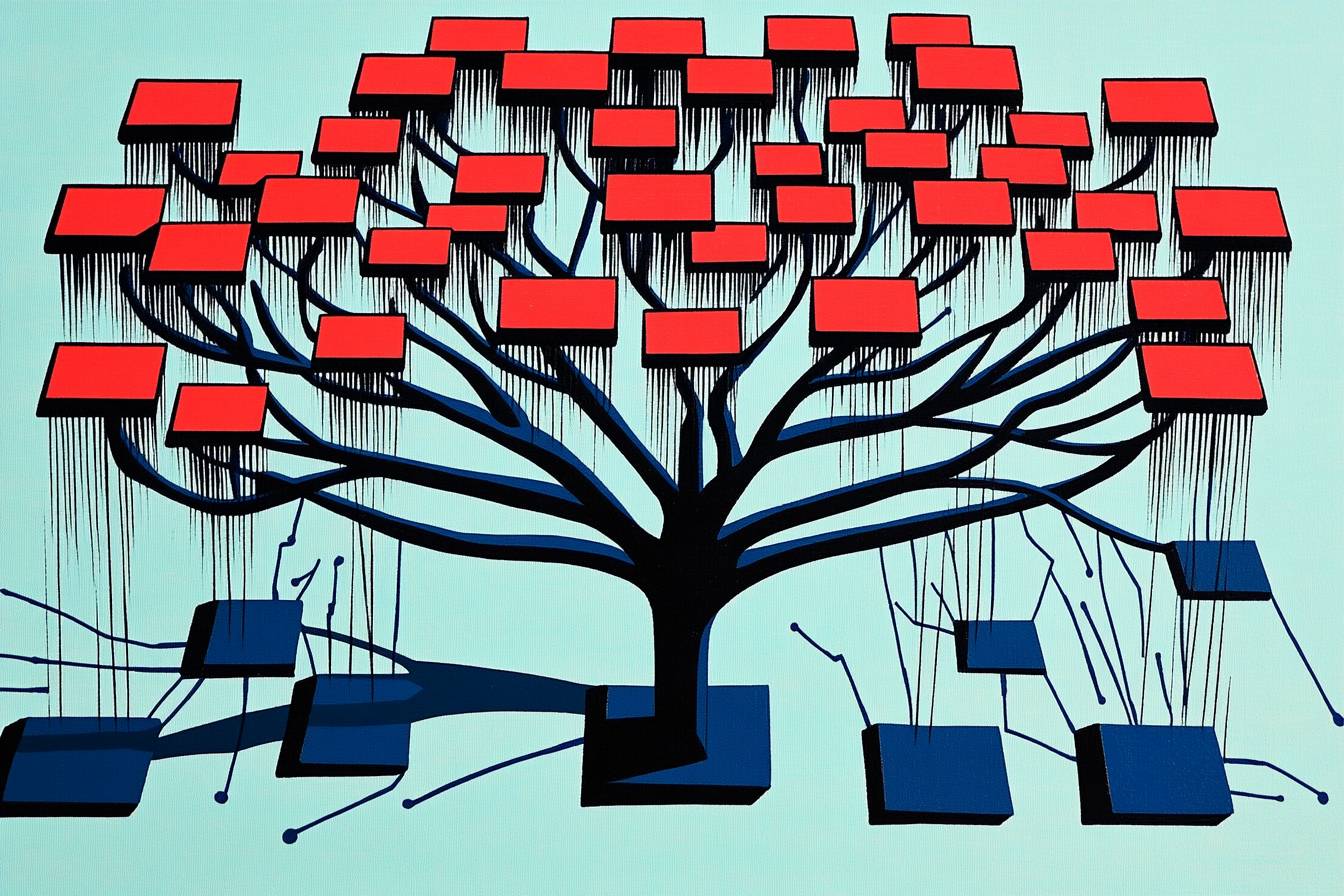
Building Ontologies with Basic Formal Ontology
Robert Arp, Barry Smith, Andrew D. Spear
In Building Ontologies with Basic Formal Ontology, Robert Arp, Barry Smith, and Andrew D. Spear argue that ontology, as a structured framework for organizing data, is essential for addressing challenges in data interoperability, accessibility, and reusability in scientific and clinical research. The book introduces Basic Formal Ontology (BFO) as a foundational tool for creating consistent, logical, and interoperable ontologies. The book begins with a preface and introduction that outline the challenges of data management and the role of ontology. It is divided into eight chapters: the first two define ontology and its types, the next two provide best practices for ontology design, chapters five and six introduce the core concepts of Basic Formal Ontology (continuants and occurrents), chapter seven focuses on modeling relationships, and chapter eight demonstrates practical applications of BFO. The book concludes with appendices, a glossary, and references for further reading. This book is relevant today as it addresses the pressing need for effective data management in an era of information overload. As scientific fields increasingly rely on large-scale data integration, the principles outlined in this guide help researchers create ontologies that are logical, interoperable, and adaptable to evolving scientific needs. It bridges philosophical principles with practical applications, making it a vital resource for data-driven fields like biomedicine.

Burning the Ships
Intellectual Property and the Transformation of Microsoft
Marshall Phelps and David Kline
In Burning the Ships, Marshall Phelps and David Kline argue that Microsoft transformed from a defensive, monopolistic company into a collaborative, open innovation-driven enterprise by using intellectual property as a strategic tool to build partnerships, resolve legal challenges, and unlock new business value. This shift enabled Microsoft to reinvent itself and adapt to a changing market landscape. The book is structured into six chapters, each focusing on a different aspect of Microsoft's transformation. Chapter 1 introduces the need for collaboration and the internal resistance to change. Chapter 2 explores the cultural shift and the creation of a licensing operation. Chapter 3 discusses how collaboration created value beyond financial returns. Chapter 4 reveals a secretive mission to build partnerships, even with open source players. Chapter 5 emphasizes the importance of leadership in driving change. Chapter 6 looks ahead at the implications of open innovation and IP strategy for the future. Burning the Ships is relevant today as many companies face similar challenges in adapting to rapid technological changes and shifting market dynamics. The book serves as a case study on how organizations can leverage intellectual property not just to protect their assets but to foster collaboration, drive growth, and remain competitive in an increasingly interconnected world.

China’s Economy
What Everyone Needs to Know
Arthur R. Kroeber
In China’s Economy, Arthur R. Kroeber argues that China’s growth cannot be understood through simple slogans; it results from a distinctive set of political bargains and evolving institutions. By tracing how those institutions formed, how they now function, and how they must adapt, the book asserts that grasping this logic is essential to predict China’s next phase and its consequences for the world. The book unfolds in thirteen tight chapters. Chapter 1 sketches the overall political–economic framework. Chapters 2-4 tackle the real-economy sectors—agriculture, industry, and urban construction—that fueled growth from 1980 to 2010. Chapters 5-8 dissect the economy’s “nervous system”: the enterprise, fiscal, financial, and energy-environmental systems. Chapters 9-11 shift to the human dimension, examining demographics, consumers, inequality, and corruption. Chapter 12 analyzes the thorny shift from resource-driven to efficiency-driven growth, and Chapter 13 looks outward to assess what China’s rise means for global politics and markets. An appendix weighs the reliability of official statistics, followed by a reading list, notes, and an index. This book is relevant today as it provides a clear, compact tour of how the People’s Republic of China transformed from a poor agrarian state into the world’s second-largest economy. It explains the political compromises behind each major sector and system, showing how those compromises shape everything from rural land markets to the country’s role in global finance. Understanding this evolution helps readers judge where China’s economy might go next and how that journey will affect business, policy, and everyday life outside China.

Competitive Strategy
Techniques for Analyzing Industries and Competitors
Michael E. Porter
In Competitive Strategy, Michael E. Porter argues that competitive strategy revolves around understanding industry structure, analyzing competitors, and positioning a firm to achieve sustainable competitive advantage. He introduces frameworks like the 'Five Forces' and 'Generic Strategies' to guide businesses in navigating competition and formulating effective strategies. The book is structured into three parts. Part I introduces general analytical techniques, including the Five Forces framework, competitor analysis, and strategic group mapping. Part II applies these frameworks to specific industry contexts, such as fragmented, emerging, mature, declining, and global industries. Part III focuses on key strategic decisions, such as vertical integration, capacity expansion, and market entry. The book also includes appendices with practical guidance on conducting industry and competitor analyses. Competitive Strategy remains relevant today as businesses face rapid changes in technology and market dynamics. Understanding industry structures and competitor behavior is crucial for firms aiming to maintain a competitive edge. Porter's insights provide a timeless framework that helps managers adapt their strategies to evolving market conditions.

Computer
A History of the Information Machine
Martin Campbell-Kelly, William Aspray, Nathan Ensmenger, Jeffrey R. Yost
In Computer, Martin Campbell-Kelly, William Aspray, Nathan Ensmenger, and Jeffrey R. Yost argue that the computer evolved not just as a scientific or military tool, but as a broader information machine shaped by business, government, and social needs. Its history is deeply tied to the evolution of information processing, from manual methods to digital networks. The book is divided into four parts. Part One (Chapters 1–3) covers the pre-electronic era of computing, including manual and mechanical methods. Part Two (Chapters 4–6) details the invention of the computer and its transformation into a business machine, culminating in IBM's dominance. Part Three (Chapters 7–9) explores key innovations such as real-time computing, software development, and new computing paradigms. Part Four (Chapters 10–12) focuses on the rise of personal computing and the Internet. The book ends with notes, a bibliography, and an index. This book is relevant today as it provides a comprehensive history of computing that highlights the interplay between technology and society. It shows how the demands of businesses and individuals shaped the development of computers, making it a valuable resource for understanding the current landscape of technology. The third edition includes updated material on mobile computing, social networking, and the IT industry, ensuring its accessibility for students, professionals, and general readers.

Conjectures and Refutations
The Growth of Scientific Knowledge
Karl R. Popper
In Conjectures and Refutations, Karl R. Popper argues that knowledge grows through a process of conjectures and refutations. We propose hypotheses (conjectures), test them critically, and discard or refine them based on refutations. There are no ultimate sources of knowledge—only a continuous process of error correction. The book is structured into two main parts: 'Conjectures' and 'Refutations.' The first part explores the philosophy of science, the nature of knowledge, and historical perspectives on rationalism and empiricism. The second part examines the demarcation between science and metaphysics, critiques dialectical reasoning, and discusses the role of prediction in social sciences. The book concludes with an addenda containing technical notes on probability, verisimilitude, and empirical content. Popper's insights remain relevant today as they challenge the reliance on authoritative sources and emphasize critical thinking. In an era of information overload and rapid technological change, the ability to propose, test, and refine ideas is crucial. His advocacy for falsifiability as a cornerstone of scientific inquiry encourages a culture of skepticism and continuous improvement, vital for progress in science, philosophy, and beyond.

Countdown to Zero Day
Stuxnet and the Launch of the World's First Digital Weapon
Kim Zetter
In Countdown to Zero Day, Kim Zetter argues that Stuxnet was the first true digital weapon, designed to sabotage Iran’s nuclear program, and its discovery marked the beginning of a new era in cyberwarfare, raising urgent questions about the future of digital conflict and global security. The book opens with a prologue that introduces the mystery of the damaged centrifuges at Iran’s Natanz nuclear facility. It then unfolds over 19 chapters, tracing the discovery and analysis of the Stuxnet malware, the geopolitical and technical context of its creation, and the broader implications for cybersecurity, espionage, and warfare. The chapters move from the initial warning signs and technical deconstruction of the malware to the geopolitical strategy behind its deployment and the emergence of cyberweapons as a new domain of warfare. Countdown to Zero Day tells the story of Stuxnet, a groundbreaking piece of malware that was secretly deployed to sabotage Iran’s nuclear enrichment program. Written by investigative journalist Kim Zetter, the book follows the digital breadcrumbs that led security researchers to uncover the malware’s purpose and origin. It explores how Stuxnet was engineered, how it was discovered, and what it means for the future of warfare. The book reveals how this digital weapon, likely created by the U.S. and Israel, marked the dawn of a new era in which code can cause physical destruction, and where cyberweapons can be deployed with stealth and precision. It’s a gripping account of espionage, technology, and the shifting nature of global conflict.

Crossing the Chasm
Marketing and Selling High-Tech Products to Mainstream Customers
Geoffrey A. Moore
In Crossing the Chasm, Geoffrey A. Moore argues that there is a critical gap—a 'chasm'—between early adopters of disruptive technology and the mainstream market. Many high-tech companies fail to cross this chasm, and doing so requires a deliberate, strategic shift in marketing and operations. He emphasizes that understanding this gap is essential for achieving mainstream success in the tech industry. The book is divided into two parts. Part I, 'Discovering the Chasm,' introduces the concept of the chasm and explores why high-tech marketing often fails. Part II, 'Crossing the Chasm,' provides a strategic framework for successfully transitioning from early adopters to the mainstream market. The book includes an introduction, seven chapters, and a conclusion, along with a preface, foreword, and acknowledgments. Crossing the Chasm remains relevant today as technology continues to evolve rapidly. Entrepreneurs and executives in the tech industry must navigate the complex landscape of customer adoption. Moore's insights into market segmentation, targeting, and positioning offer practical guidance for companies striving to capture the mainstream market and avoid the pitfalls that many have faced in the past.

Culture and the Practice of Business History
Kenneth Lipartito
In Culture and the Practice of Business History, Kenneth Lipartito argues that culture—defined as a system of values, ideas, and beliefs—plays a critical role in shaping business practices and outcomes. Traditional business history often reduces business behavior to profit, growth, and stability, neglecting the cultural influences that drive divergent strategies and innovations within the same market. The book appears to be structured as an essay or series of essays that explore the role of culture in business history. It uses case studies, such as the comparison of American and Japanese automotive innovations, to illustrate its arguments. The structure likely combines theoretical analysis with practical examples, providing a rich context for understanding the interplay between culture and business. This book is relevant today as businesses operate in increasingly diverse and global environments. Understanding how cultural factors influence management and innovation can help leaders navigate complex markets and foster competitive advantages. Lipartito's critique of traditional business history encourages a broader perspective, essential for entrepreneurs and strategists in a rapidly changing world.

Cyberboss
The Rise of Algorithmic Management and the New Struggle for Control at Work
Craig Gent
In Cyberboss, Craig Gent argues that algorithmic management is transforming the workplace by embedding control into software systems, shifting power away from workers and toward opaque, data-driven processes. This shift creates new forms of labor struggle and resistance. The book is structured into seven chapters and an epilogue. It begins by setting the stakes of the issue, then explores the nature of algorithmic work and traditional management. It moves into the politics of technology, then focuses on the rise of algorithmic management itself. The penultimate chapter discusses how workers respond to these changes, and the epilogue offers concluding thoughts. The book also includes acknowledgements, notes, and an index. Cyberboss examines how algorithms are increasingly used to manage workers, replacing or augmenting traditional human management. Craig Gent explores the implications of this shift for power, control, and resistance in the workplace. Drawing on political theory, labor studies, and real-world examples, the book argues that algorithmic management is not just a technical innovation but a political development that reshapes the struggle between labor and capital. It highlights how workers are adapting, resisting, and finding new ways to assert agency in a world where the boss is a piece of code.

DEC Is Dead, Long Live DEC
The Lasting Legacy of Digital Equipment Corporation
Edgar H. Schein
In DEC Is Dead, Long Live DEC, Edgar H. Schein argues that the rise, success, and decline of Digital Equipment Corporation (DEC) illustrate how a company's culture, leadership, and innovation can shape its trajectory and leave a lasting impact on the tech industry. The book delves into the factors that contributed to DEC's prominence and the challenges that ultimately led to its downfall. The book is structured in three parts. Part One focuses on the creation of DEC's culture of innovation, highlighting the role of founder Ken Olsen and the company's early success. Part Two examines the divergence of DEC's developmental streams, which led to organizational challenges and its eventual decline. Part Three reflects on the lessons and legacies of DEC, offering insights into leadership, culture, and organizational evolution. This book remains relevant today as it provides valuable lessons for entrepreneurs and leaders navigating the complexities of innovation and growth. By studying DEC's journey, readers can gain insights into the dynamics of organizational success and failure, as well as the importance of adapting to changing market conditions.

Dance to the Tune of Life
Biological Relativity
Denis Noble
In Dance to the Tune of Life, Denis Noble argues that living organisms are open systems whose functions emerge from interactions across multiple levels of organization. He rejects the gene-centric view of biology and introduces the concept of 'Biological Relativity,' which posits that there is no privileged level of causation in biology. This perspective challenges traditional notions of how biological processes operate, emphasizing the complexity and interdependence of various biological factors. The book begins by introducing the principle of relativity in physics and its application to biology (Chapter 1). It provides foundational biological knowledge, covering scales of life, networks, and cellular processes (Chapters 2-4). Chapter 5 critiques the Neo-Darwinian framework, while Chapter 6 introduces the theory of Biological Relativity. Chapters 7-8 explore experimental findings on genetic and epigenetic mechanisms, proposing a relativistic theory of evolution. Chapter 9 discusses the relativity of knowledge and epistemology, and Chapter 10 serves as a brief summary of the book's arguments. This book is relevant today as it challenges the reductionist, gene-centric view of biology and evolution, advocating for a systems biology approach that integrates molecular, cellular, and organismal levels. In an era where interdisciplinary approaches are gaining traction, Noble's insights encourage a reevaluation of how we understand life and evolution, considering the interactions between genetic, epigenetic, and environmental factors. His work also prompts philosophical discussions about the nature of knowledge and meaning in the biological sciences.

Days of Rage
America's Radical Underground, the FBI, and the Forgotten Age of Revolutionary Violence
Bryan Burrough
In Days of Rage, Bryan Burrough argues that the 1970s witnessed a unique and largely forgotten era of domestic radicalism in the U.S., where underground groups like the Weather Underground, Black Liberation Army, and others used bombings, robberies, and assassinations in pursuit of revolutionary goals. These groups, though ultimately unsuccessful, left a lasting impact on American society and law enforcement. The book is divided into four parts, each focusing on different groups or phases of the underground movement. It begins with a prologue that sets the stage, followed by 23 chapters that detail the origins, operations, and decline of these groups. The epilogue reflects on the legacy of this era. The chapters are organized chronologically and thematically, covering key events, individuals, and the broader political context. Days of Rage is relevant today as it sheds light on the roots of radicalism and the complexities of social movements. Understanding this turbulent period in American history helps contextualize contemporary issues around political violence, activism, and the relationship between citizens and law enforcement. The book invites readers to reflect on the motivations behind radical actions and the societal conditions that foster such movements.

Definition in Greek Philosophy
Edited by David Charles
In Definition in Greek Philosophy, David Charles argues that definition was a central concern in Greek philosophy, with Socrates, Plato, and Aristotle each offering distinct approaches to the topic. Later thinkers, such as the Stoics, Galen, and Plotinus, modified or challenged these views, leading to a rich and evolving discourse on the nature and role of definition. The book is divided into three parts: Part I focuses on Plato's views on definition, including his methods of division and the explanatory role of Forms. Part II examines Aristotle's approach, particularly his connection between definitions and causal explanations. Part III explores post-Aristotelian developments, including Stoic, Galenic, and Neoplatonic perspectives on definition. Each part contains essays by different contributors, addressing specific philosophical issues. This book is relevant today as it rekindles interest in the philosophical study of definition, an area that underpins many contemporary debates in philosophy, science, and linguistics. Understanding how ancient thinkers approached definition can illuminate modern discussions about meaning, classification, and the nature of knowledge.

Designated Drivers
How China Plans to Dominate the Global Auto Industry
G. E. Anderson
In Designated Drivers, G. E. Anderson argues that China’s explosive auto-industry growth stems less from internal corporate reforms and more from a policy-driven industry structure in which central and local governments orchestrate joint ventures, subsidies, and consolidation to forge globally competitive "national champion" automakers. Understanding this political-economic system, rather than simple market forces, is key to predicting whether China can achieve global dominance in cars. The book is structured with front material that includes maps and a glossary, followed by eight core chapters. It begins with a historical overview of state-backed national champions, explains the regulatory and ownership systems, dissects Beijing's industrial policies, profiles foreign-Chinese joint ventures, examines the rise of independent carmakers, reviews state-directed mergers aimed at building scale, and assesses regional impacts and overseas acquisitions. The concluding chapter evaluates future prospects for China’s auto industry. Two appendices provide joint venture lists and supplemental data, followed by a bibliography, author bio, and index. Designated Drivers is relevant today as it sheds light on how China built the world’s fastest-growing automobile industry and what that means for global competition. Drawing on extensive research, including policy documents and interviews, Anderson illustrates how government actions shape the auto sector. The book demystifies the political economy of China through the lens of the car business and offers insights for executives, investors, and policymakers navigating a market where state influence remains strong.

Destructive Creation
American Business and the Winning of World War II
Mark R. Wilson
In Destructive Creation, Mark R. Wilson argues that the U.S. military-industrial mobilization during World War II was not solely a triumph of private enterprise but heavily relied on public investment, government management, and regulation. This collaboration between state and private sectors shaped the war effort and influenced postwar political and economic dynamics. The book begins with an introduction that sets the stage for its central argument. It is divided into six chapters, each addressing a specific aspect of the wartime economy: historical context, industrial capacity building, government-business relations, labor issues, and the postwar transition. The conclusion reflects on the long-term implications of wartime mobilization. Additional sections include a list of abbreviations, notes, an index, and acknowledgments. Destructive Creation is relevant today as it challenges the prevailing narrative that glorifies unregulated capitalism. It sheds light on the necessity of government intervention in times of crisis, a topic that resonates with current discussions on economic policy, regulation, and the role of the state in shaping markets.

Difficult Conversations
How to Discuss What Matters Most
Douglas Stone, Bruce Patton, Sheila Heen
In Difficult Conversations, Douglas Stone, Bruce Patton, and Sheila Heen argue that difficult conversations are inevitable and often mishandled. By shifting from a stance of blame and message delivery to one of learning and curiosity, we can navigate these conversations more effectively, reduce anxiety, and improve relationships and outcomes. The authors provide a structured approach that encourages understanding rather than defensiveness. The book begins with a preface and foreword that explain its origins and evolution. The main content is divided into thematic sections: first, it defines the problem of difficult conversations; then it introduces the concept of the 'three conversations' (What Happened?, Feelings, and Identity); next, it offers a framework for shifting to a learning conversation, with chapters on listening, expression, and problem-solving. The book concludes with a Q&A section addressing common reader concerns. Each chapter builds on the last, combining theory with practical tools and examples. Difficult Conversations is especially relevant today as many people face high-stakes discussions in both personal and professional settings. The ability to communicate effectively during these tense moments can lead to better outcomes and stronger relationships. With insights drawn from decades of research at the Harvard Negotiation Project, this book serves as a practical toolkit for anyone looking to improve their communication skills and manage conflict more constructively.

Discourse on the Method of Rightly Conducting the Reason and Seeking Truth in the Field of Science
René Descartes
In Discourse on the Method of Rightly Conducting the Reason and Seeking Truth in the Field of Science, René Descartes argues that a systematic method of reasoning is essential for establishing knowledge that is clear, distinct, and devoid of doubt. He applies this method across science, philosophy, and morality, marking a pivotal transition from medieval to modern thought. The book is structured into six parts. The first part reflects on Descartes' disillusionment with formal education and the sciences. The second part introduces his four rules of reasoning. The third part outlines a provisional moral code to guide his life during intellectual reconstruction. The fourth part summarizes his Meditations, including the famous assertion 'I think, therefore I am' and proofs of God's existence. The fifth part provides a mechanistic account of the physical world and human anatomy, emphasizing the distinction between humans and animals. The sixth part explains his reasons for delaying publication and his commitment to ongoing scientific inquiry. This work remains relevant today as it lays the groundwork for modern scientific and philosophical inquiry. Descartes' emphasis on doubt and questioning serves as a foundation for critical thinking and empirical research. In an era of rapid technological advancement and complex moral dilemmas, his method encourages individuals to seek clarity and truth amidst uncertainty.

Discourses on the First Decade of Titus Livius
Discourses on the First Decade of Titus Livius
Niccolò Machiavelli
In Discourses on the First Decade of Titus Livius, Niccolò Machiavelli argues that the study of history, particularly the Roman Republic as described by Livy, provides timeless lessons on governance, power, and the dynamics of political institutions. By examining Rome's successes and failures, Machiavelli highlights the principles that can guide effective leadership and stable governance. The book is divided into three main sections, each containing a preface and multiple chapters. Book I focuses on the internal dynamics of republics, such as the balance of power between the people and the elites. Book II examines external factors like war and alliances that contribute to the expansion and defense of states. Book III discusses the renewal and preservation of political institutions over time. Each chapter addresses specific themes or historical examples, offering insights into the nature of power and governance. Machiavelli's work remains relevant today as political leaders grapple with complex governance challenges. His analysis of the Roman Republic offers a framework for understanding modern political dynamics and the importance of balancing power among different groups. In an era of rapid change and uncertainty, the lessons drawn from history can inform contemporary leaders on how to build resilient political systems and maintain liberty.

Economy, Polity, and Society
British Intellectual History 1750–1950
Edited by Stefan Collini, Richard Whatmore, Brian Young
In Economy, Polity, and Society, the editors argue that this book explores how British intellectuals from 1750 to 1950 understood and responded to the rise of commercial society, the evolving relationship between economic and political thought, and the moral tensions embedded in economic reasoning. It also honors the contributions of Donald Winch and John Burrow to the field of intellectual history. The book is divided into three parts. Part I focuses on 18th-century attempts to understand commercial society, especially through the work of Adam Smith and the Scottish Enlightenment. Part II examines 19th-century adaptations and critiques of Enlightenment ideas, focusing on figures like Bentham, Paine, Edgeworth, and Whately. Part III explores the tension between economic thought and moral or cultural values in the 19th and 20th centuries, including discussions of Ruskin, British universities, and the legacy of political economy. Each chapter is a standalone essay by a different scholar. This collection is relevant today as it sheds light on how historical thinkers grappled with the complexities of economic and moral values, a conversation that remains vital in contemporary debates about capitalism, ethics, and the role of government. By reflecting on the intellectual lineage from the Enlightenment to the modern era, the book encourages readers to consider the implications of economic thought on society and politics, making it a significant contribution to both historical scholarship and current discourse.

Employee Training and Development
None
Raymond A. Noe
In Employee Training and Development, Raymond A. Noe argues that training and development are critical for organizations to adapt to changing business environments, enhance employee skills, and align with strategic goals. The book emphasizes the importance of designing effective training programs, leveraging technology, and addressing workforce diversity and career challenges. The book is divided into four parts: (1) Context for Training and Development, which introduces the importance of training and its strategic alignment; (2) Designing Training, which covers needs assessment, learning theories, program design, and evaluation; (3) Training and Development Methods, which discusses traditional and technology-based methods; and (4) Social Responsibility and the Future, which focuses on employee development, diversity, legal issues, and future trends. Each chapter includes objectives, real-life examples, discussion questions, and cases. This book is relevant in today's fast-paced workplace, where organizations must continuously evolve to meet new challenges. As businesses face increasing competition and a diverse workforce, effective training becomes essential for fostering talent, driving innovation, and ensuring compliance with legal standards. Noe's insights provide a roadmap for organizations seeking to enhance their training strategies and prepare for the future.

Energy: A Beginner's Guide
Vaclav Smil
In Energy: A Beginner's Guide, Vaclav Smil argues that energy is the fundamental driver of all natural and human processes. Understanding its forms, transformations, and impacts is essential for grasping the workings of the biosphere, human history, modern civilization, and future challenges. The book is structured into six chapters. Chapter 1 introduces the concepts and measures of energy. Chapter 2 explores energy in natural systems, including solar radiation, photosynthesis, and ecosystems. Chapter 3 examines energy's role in human history, from early societies to the industrial revolution. Chapter 4 focuses on the modern world's reliance on fossil fuels and the environmental consequences. Chapter 5 discusses energy in daily life, such as food, transportation, and goods. Chapter 6 looks at future energy trends, renewable sources, and uncertainties. This book is relevant today as the world grapples with energy challenges, including climate change and the transition to sustainable energy sources. Smil's comprehensive introduction equips readers with the knowledge needed to understand energy's central role in shaping our future.

Enquiry Concerning Human Understanding
David Hume
In Enquiry Concerning Human Understanding, David Hume argues that human understanding is grounded in experience and habit rather than reason or innate ideas. He critiques metaphysical speculation and emphasizes the limits of knowledge, particularly in relation to causation, free will, and religious belief. The book is divided into 12 chapters. It begins with an exploration of different types of philosophy, followed by discussions on the origins and associations of ideas. Hume then examines skepticism about human understanding, probability, causation, and free will. He also addresses the reasoning of animals, the credibility of miracles, and the implications of divine providence. The book concludes with a reflection on the value of skeptical philosophy. This work remains relevant today as it challenges readers to question the foundations of their beliefs and the reliability of reason. In an age marked by rapid information exchange and complex decision-making, Hume's emphasis on empirical inquiry and skepticism provides a valuable framework for navigating uncertainty and understanding the nature of knowledge.

Expectations Investing
Reading Stock Prices for Better Returns
Alfred Rappaport and Michael J. Mauboussin
In Expectations Investing, Alfred Rappaport and Michael J. Mauboussin argue that stock prices reflect market expectations about a company's future performance. By understanding and analyzing these expectations, investors can identify opportunities for superior returns. The book introduces a systematic process called 'expectations investing,' which focuses on estimating market expectations embedded in stock prices and anticipating revisions to those expectations. The book is divided into three parts. Part I, 'Gathering the Tools,' introduces foundational concepts like how the market values stocks, the expectations infrastructure, and competitive strategy frameworks. Part II, 'Implementing the Process,' explains the three-step expectations investing process, including estimating price-implied expectations, identifying opportunities, and making buy/sell/hold decisions. It also covers advanced topics like real options and business categorization. Part III, 'Reading Corporate Signals,' examines how corporate actions like mergers, share buybacks, and incentive compensation provide insights into market expectations. The book also includes appendices, notes, and an index. This book is relevant today as investors seek more effective ways to navigate volatile markets. Traditional investment analysis often emphasizes short-term metrics, which can mislead decision-making. Rappaport and Mauboussin advocate for a shift toward a strategic, expectations-based approach that prioritizes understanding cash flows and long-term value creation. This framework empowers investors to make informed decisions and potentially achieve better returns.

First Principles
Herbert Spencer
In First Principles, Herbert Spencer argues that religion and science can be reconciled through their shared belief in an Absolute. He posits that universal principles can be discerned in the natural laws discovered by science, bridging the gap between faith and empirical knowledge. This synthesis aims to reveal a deeper understanding of the universe that transcends human limitations. The book is structured into two main parts. Part I, 'The Unknowable,' explores the limits of human knowledge, critiques traditional religious and scientific ideas, and suggests faith as a bridge to ultimate truth. Part II, 'Laws of the Knowable,' outlines universal principles, such as the law of evolution, and applies them to natural phenomena. Each part is divided into chapters that systematically build Spencer's argument, culminating in a comprehensive synthesis of universal laws. First Principles remains relevant today as it addresses the ongoing dialogue between science and religion. In an era where both fields continue to influence human thought and culture, Spencer's insights encourage a collaborative approach to understanding complex issues. His work lays the groundwork for applying philosophical principles to various disciplines, including biology, psychology, sociology, and morality, highlighting the interconnectedness of knowledge across different domains.

Fleet Tactics and Naval Operations
Third Edition
CAPT Wayne P. Hughes Jr., USN (Ret.) and RADM Robert P. Girrier, USN (Ret.)
In Fleet Tactics and Naval Operations, CAPT Wayne P. Hughes Jr. and RADM Robert P. Girrier argue that naval tactics evolve with technology and geopolitical context, but remain grounded in enduring principles. To maintain maritime superiority, navies must integrate new domains like cyber and information warfare into their tactical thinking, while learning from historical experience and operational constants. The book opens with an introduction to the third edition's focus on cyber and robotics. Chapter 1 lays out six foundational cornerstones of naval tactics. Chapters 2 through 5 trace the historical development of tactics from the age of sail through World War II. Chapter 6 discusses post-WWII naval operations. Chapter 7 explores the missile age and littoral warfare. Chapters 8 to 11 analyze tactical trends, constants, technological impacts, and variables. Chapter 12 focuses on information warfare. Chapter 13 synthesizes modern tactics and operational models. Chapter 14 summarizes key lessons. Chapter 15 presents a fictional scenario, 'The Battle of the Aegean,' to apply the book’s concepts. Appendices provide terminology and principles of war. Fleet Tactics and Naval Operations is a foundational text on how navies fight. It blends historical case studies, tactical theory, and modern operational insights to explain how naval forces can achieve combat effectiveness. The third edition updates the classic work for the information age, addressing cyberwarfare, unmanned systems, and the return of great power competition. It emphasizes the importance of scouting, command and control, and the need to 'attack effectively first.' The book is a guide for naval professionals, strategists, and anyone interested in how maritime power is applied in war.

From Airline Reservations to Sonic the Hedgehog
A History of the Software Industry
Martin Campbell-Kelly
In From Airline Reservations to Sonic the Hedgehog, Martin Campbell-Kelly argues that the software industry evolved from a niche service in the 1950s into a global economic force by the 1990s, driven by a mix of government contracts, corporate demand, and consumer markets. This book traces that evolution through the firms and technologies that shaped it. The book is structured into ten chapters, organized chronologically and thematically. It begins with an overview of the software industry, then explores the rise of software contractors in the 1950s, programming services in the 1960s, and the emergence of software products in the late 1960s and 1970s. It then covers the maturation of both corporate and personal computer software industries through the 1980s and early 1990s, including recreational software. The final chapter reflects on why the U.S. software industry succeeded. This book is a detailed history of the software industry from its origins in the 1950s to its maturity in the mid-1990s. It examines how software evolved from custom-built code for mainframes into a massive commercial industry spanning corporate systems, personal computing, and entertainment. The author focuses on the firms that built the industry—both famous and obscure—and explains how market forces, technological change, and user needs shaped the software landscape. It’s a story of innovation, competition, and the growing centrality of software in modern life.

From Mainframes to Smartphones
A History of the International Computer Industry
Martin Campbell-Kelly and Daniel D. Garcia-Swartz
In From Mainframes to Smartphones, Martin Campbell-Kelly and Daniel D. Garcia-Swartz argue that the global computer industry underwent significant transformations from 1950 to 2010, shaped by key technological advancements and market dynamics. The authors provide a concise, business- and economics-focused history, highlighting the mainframe era, the IBM System/360 standard, the rise of personal computers, and the Internet era. The book is structured into four chronological parts, each covering a 15-year period. Part I (1950–1965) discusses the early development of the computer industry and IBM’s rise. Part II (1965–1980) focuses on the impact of IBM’s System/360 and the emergence of minicomputers and software services. Part III (1980–1995) explores the rise of the personal computer and the shift to open systems. Part IV (1995–2010) examines the Internet era, software and services dominance, and globalization, with each part containing three chapters analyzing market trends and business strategies. This book is relevant today as it offers insights into the evolution of the technology landscape, providing context for current trends in computing. Understanding the historical shifts in the computer industry helps readers grasp the implications of ongoing changes in technology, business models, and global competition. The themes of miniaturization, proprietary versus open standards, and the persistence of dominant firms remain crucial for navigating today’s tech-driven world.

Genesis
Henry A. Kissinger, Craig Mundie, and Eric Schmidt
In Genesis, Henry A. Kissinger, Craig Mundie, and Eric Schmidt argue that artificial intelligence has ushered in a new epoch that could either amplify human welfare or endanger human survival. Its inhuman pace and opaque reasoning threaten existing political, economic, security, and scientific orders. To avert catastrophe and unlock benefit, humanity must invent technical safeguards, craft new diplomatic compacts, and redefine what it means to be human in a future of human–AI coevolution. The book opens with a Foreword and memorial note, followed by an Introduction that sets the stakes. It unfolds in three parts. Part I, "In the Beginning" (Chapters 1–3), traces the discovery of AI, explains how brains and machines process information, and shows how AI reshapes our sense of reality. Part II, "The Four Branches" (Chapters 4–7), examines AI’s impact on politics, security, prosperity, and science. Part III, "The Tree of Life" (Chapter 8), synthesizes the lessons into a grand strategy for safe coexistence with advanced AI. A final Conclusion issues a call to urgent collective action, with back-matter including acknowledgments, notes, and author bios. Genesis is relevant today as it addresses the profound changes AI brings to our world, akin to the advent of nuclear weapons or the Enlightenment. Drawing on Kissinger’s statecraft and the technological expertise of Mundie and Schmidt, the authors explore how AI will alter politics, defense, economies, and science. They warn of an existential AI arms race if nations fail to cooperate and propose technical ‘alignment’ mechanisms and new diplomatic frameworks so people and machines can thrive together rather than collide.

Genome
The Autobiography of a Species in 23 Chapters
Matt Ridley
In Genome, Matt Ridley argues that the human genome is a narrative of our species' history, evolution, and biology, told through the lens of its 23 chromosomes. Each chromosome reveals a unique aspect of human nature, biology, or history, offering insights into who we are and how we came to be. The book is structured into 23 chapters, each corresponding to one of the 23 human chromosomes. Each chapter focuses on a specific gene or theme related to that chromosome, exploring its significance in human biology, evolution, or behavior. The chapters cover diverse topics, including life, species, intelligence, disease, personality, sex, memory, death, politics, and free will, organized thematically to provide a coherent exploration of the genome. In today's world, understanding the human genome is more relevant than ever. The insights gained from the Human Genome Project have profound implications for medicine, psychology, and anthropology. Ridley's exploration serves as both a celebration of scientific breakthroughs and a reflection on the complex questions surrounding human nature and our future.

Get the Truth
Former CIA Officers Teach You How to Persuade Anyone to Tell All
Philip Houston, Michael Floyd, Susan Carnicero, and Peter Romary
In Get the Truth, Philip Houston, Michael Floyd, Susan Carnicero, and Peter Romary argue that the most effective way to get someone to tell the truth is not through confrontation or coercion, but through influence, rapport, and psychological insight—a method developed and refined by former CIA officers and applicable in everyday life. This approach challenges traditional views of interrogation, emphasizing that building trust and understanding can lead to more honest communication. The book builds on the authors' previous work in 'Spy the Lie' and focuses on a methodology for eliciting truthful information. It opens with a preface that sets the stakes and context—interrogation in high-stakes intelligence settings—and introduces the authors' backgrounds. The book likely proceeds to explain their methodology step-by-step, using real-life examples from their CIA careers. While the frontmatter does not include a chapter list, the structure is likely instructional, with each chapter covering a component of the truth-elicitation process. In today's world, where misinformation and deception are rampant, understanding how to effectively elicit the truth is more crucial than ever. Whether in business negotiations, personal relationships, or parenting, the ability to foster open dialogue can lead to better outcomes. The authors' insights, grounded in years of experience in counterterrorism and espionage, offer valuable lessons for anyone looking to navigate complex conversations and uncover the truth.

Guns, Germs, and Steel
A Short History of Everybody for the Last 13,000 Years
Jared Diamond
In Guns, Germs, and Steel, Jared Diamond argues that geography and environment, rather than biological differences, shaped the divergent development of human societies. He posits that societies that first domesticated plants and animals gained significant advantages in technology, governance, and immunity, which ultimately led to their dominance over others. This perspective challenges traditional narratives that attribute success to inherent racial or cultural superiority. The book begins with a prologue that introduces 'Yali's Question,' the central inquiry of why history unfolded differently across continents. It is structured into 19 chapters that delve into various themes, such as the origins of food production, domestication, technology, writing, and the impact of germs on societies. Regional histories, including those of Polynesia, China, and Africa, are examined to illustrate these themes. The epilogue reflects on the future of human history as a scientific discipline, emphasizing the importance of understanding these patterns. Guns, Germs, and Steel remains relevant today as it provides a framework for understanding global inequalities and historical trajectories. In an era marked by debates over cultural differences and economic disparities, Diamond's work encourages readers to consider the broader environmental and geographical contexts that have shaped human development. By emphasizing ultimate causes over proximate factors, the book offers insights that can inform discussions on development, policy, and global relations.

Hard Drive
Bill Gates and the Making of the Microsoft Empire
James Wallace and Jim Erickson
In Hard Drive, James Wallace and Jim Erickson argue that Bill Gates' vision, drive, and controversial business practices were instrumental in building Microsoft into a software empire, but his methods also created enemies and sparked antitrust scrutiny. The book is structured with a prologue and six chapters, beginning with a pivotal moment in 1991 that highlights Gates' success and the challenges he faced. The chapters chronologically explore Gates' early life, the founding of Microsoft, its partnership with IBM, its rise to dominance, and the controversies and challenges along the way. This biography is relevant today as it provides insights into the complexities of leadership, the impact of innovation on competition, and the ongoing debates around regulation in the tech industry.

High Output Management
Andrew S. Grove
In High Output Management, Andrew S. Grove argues that effective management is about increasing the output of teams and individuals by applying principles of production, leveraging managerial impact, and providing task-relevant feedback. Grove emphasizes that managers can drive results by understanding how to maximize productivity in their teams, making decisions that enhance performance, and creating a culture of continuous improvement. The book is structured into four parts. Part I introduces the basics of production and management, using a breakfast factory as a metaphor. Part II focuses on managerial leverage, decision-making, and planning. Part III explores organizational structures, including hybrid organizations and modes of control. Part IV examines individual performance, appraisals, and compensation, with a focus on motivating teams and individuals. High Output Management remains relevant today as it offers practical tools for middle managers, a group often overlooked in management literature. In an era where efficiency and productivity are paramount, Grove's insights into leveraging team dynamics and effective feedback are crucial for driving performance in any organization. By applying manufacturing principles to management practices, this book provides a framework for navigating the complexities of modern workplaces.

Hillbilly Elegy
A Memoir of a Family and Culture in Crisis
J.D. Vance
In Hillbilly Elegy, J.D. Vance argues that cultural and social factors, such as a lack of agency, social isolation, and cultural decay, are as critical as economic challenges in explaining the struggles of working-class white Americans, particularly those of Scots-Irish descent in Appalachia and the Rust Belt. He highlights how these factors contribute to cycles of poverty and despair that persist in these communities. The book is structured as a personal memoir interwoven with sociological commentary. It begins with an introduction that outlines the author's background and the purpose of the book. It then proceeds through 15 chapters that detail the author's life, family history, and observations about the cultural and social dynamics of his community. The book concludes with reflections on the broader implications of his story. Hillbilly Elegy remains relevant today as it sheds light on the cultural and social issues that continue to affect many working-class Americans. Vance's insights into the struggles of his community resonate in a time when discussions around class, culture, and mobility are increasingly critical in understanding the fabric of American society.
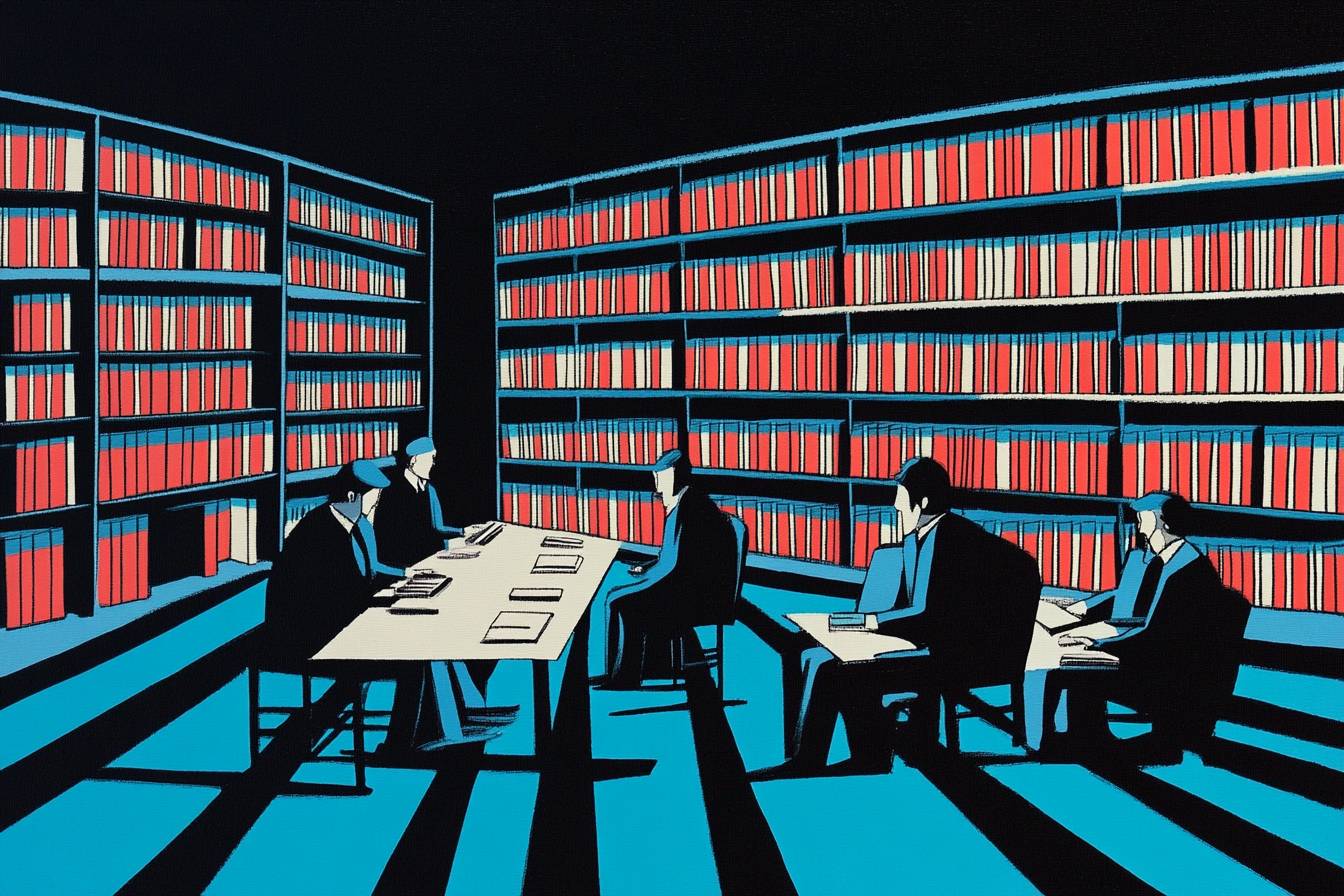
History, Religion, and Culture
British Intellectual History 1750–1950
Edited by Stefan Collini, Richard Whatmore, Brian Young
In History, Religion, and Culture, the editors argue that this book examines how historical writing, religious thought, and cultural identity shaped and reflected British intellectual life from 1750 to 1950. It highlights the evolving relationship between religion and politics, the development of historiography, and the influence of scientific and national ideas on British thought. The volume also honors the scholarly legacy of John Burrow and Donald Winch, key figures in the 'Sussex School' of intellectual history. The book is divided into three thematic parts. Part I focuses on 18th-century historiography, especially Edward Gibbon’s treatment of religion and historical distance. Part II explores the role of religion in 19th-century British cultural and political life, including views on India, Cromwell, and religious periodicals. Part III examines how scientific ideas about change and development influenced conceptions of national identity from the 19th to mid-20th century. Each chapter is a standalone essay by a different scholar, and the book includes a general introduction and a specific presentation of the volume’s themes. This volume brings together leading scholars to explore the intersections of history, religion, and culture in British intellectual life from 1750 to 1950. It covers topics such as Enlightenment historiography, Victorian religious debates, the reception of Gibbon, the role of religion in imperial and domestic politics, and the influence of scientific and national ideas on British identity. The book is both a scholarly contribution to the field and a tribute to the intellectual historians John Burrow and Donald Winch, whose work helped shape the study of British intellectual history.

How Zoologists Organize Things
The Art of Classification
David Bainbridge
In How Zoologists Organize Things, David Bainbridge argues that the classification of animals has always intertwined art, culture, and philosophy with science. He traces the history of classification, showing how our methods reflect broader cultural and scientific shifts. From ancient bestiaries to modern genomics, the way we organize animal life reveals our evolving understanding of nature and ourselves. The book is structured into four main chapters, each representing a historical phase in the development of zoological classification. It begins with ancient and medieval religious and mythological systems, moves through Enlightenment-era naturalist cataloguing, then to the evolutionary trees of the 19th century, and finally to the complex, data-rich systems of the modern era. Each chapter combines scientific history with visual and artistic representations of classification. This book is relevant today as it highlights the importance of classification in understanding biodiversity and the natural world. In an era where data drives many scientific endeavors, Bainbridge's exploration of historical classification systems reminds us that our frameworks for understanding life are deeply rooted in our cultural and philosophical contexts. As we face environmental challenges, reflecting on how we classify and relate to the living world becomes increasingly vital.

How to Avoid a Climate Disaster
The Solutions We Have and the Breakthroughs We Need
Bill Gates
In How to Avoid a Climate Disaster, Bill Gates argues that to prevent catastrophic climate change, the world must cut greenhouse gas emissions from 51 billion tons per year to zero. Achieving this goal requires rapidly deploying existing technologies and inventing new solutions to decarbonize every sector of the economy. The book opens with an introduction that frames the climate challenge in terms of two numbers: 51 billion tons of greenhouse gases emitted annually, and the goal of reducing that to zero. It then proceeds through 12 chapters. Chapter 1 explains why zero emissions is the only viable target. Chapter 2 outlines the difficulty of the task. Chapter 3 offers a framework of five questions to evaluate climate solutions. Chapters 4 through 9 analyze emissions by sector—electricity, manufacturing, agriculture, transportation, buildings, and adaptation—and explore current solutions and needed innovations. Chapter 10 discusses the role of government policy. Chapter 11 presents a plan for coordinated action. Chapter 12 focuses on what individuals can do. An afterword reflects on the intersection of climate change and the COVID-19 pandemic. This book is timely as climate change poses a growing threat to our planet. Gates combines scientific insight, economic reasoning, and policy recommendations to provide a roadmap for governments, businesses, and individuals. His practical guide emphasizes the urgency of the climate crisis and encourages collective action to avert a disaster.
IBM
The Rise and Fall and Reinvention of a Global Icon
James W. Cortada
In IBM, James W. Cortada argues that IBM’s century-long journey illustrates how corporate culture, strategic management, and customer-centric practices enabled it to become a global icon, survive near-collapse, and reinvent itself in a rapidly changing technological and geopolitical landscape. Its story offers deep lessons for understanding the dynamics of large enterprises and the ecosystems they shape. The book is divided into four parts. Part I ('From Birth to Identity') covers IBM’s origins from the 1880s to 1945, focusing on its early formation, leadership under Thomas Watson Sr., and its role in WWII. Part II ('IBM the Computer Behemoth') spans 1945 to 1985, detailing IBM’s dominance in computing, the System/360, global expansion, and the rise of the PC. Part III ('A Time of Crisis') covers 1985 to 1994, when IBM faced existential threats and was rescued under Louis Gerstner. Part IV ('IBM in the New Century') explores IBM’s transformation into a services and AI company, its global operations, and its current challenges. The book ends with a discussion of IBM’s legacy and implications for other firms. This book is relevant today as it provides insights into how large enterprises operate as ecosystems and how they can adapt—or fail—in the face of technological and market shifts. IBM's experience serves as a case study for business professionals and students of corporate strategy, illustrating the importance of culture, flexibility, and innovation in achieving long-term success.

Identity
The Demand for Dignity and the Politics of Resentment
Francis Fukuyama
In Identity, Francis Fukuyama argues that the demand for recognition of identity—whether individual or group-based—is a central driver of modern political developments, including the rise of populism, nationalism, and authoritarianism. He asserts that liberal democracies must return to a universal understanding of human dignity to counteract these forces. The book builds on themes introduced in Fukuyama’s earlier works, particularly 'The End of History and the Last Man'. It explores the philosophical roots of identity (thymos, isothymia, megalothymia), the historical development of liberal democracy, and the recent rise of identity-based politics. It draws on lectures and essays Fukuyama has delivered over the years, and likely includes case studies and theoretical analysis. The frontmatter does not include a detailed table of contents or chapter list. This book explores how the universal human desire for dignity and recognition has shaped modern politics. Fukuyama argues that identity—rooted in the ancient concept of thymos—has become the central issue in global political conflict. From populist nationalism to religious fundamentalism to campus identity politics, the demand for recognition drives much of today’s unrest. He traces how liberal democracies, once thought to be the endpoint of political development, are now threatened from within by forces they helped unleash. He calls for a renewed commitment to universal human dignity as the only way to restore democratic legitimacy and social cohesion.

Impro
Improvisation and the Theatre
Keith Johnstone
In Impro, Keith Johnstone argues that creativity and spontaneity can be unlocked by bypassing the conscious intellect and engaging the unconscious mind. Through specific techniques and exercises, individuals can rediscover the imaginative freedom of childhood and apply it to theatre and beyond. The book is divided into four sections: 'Status', which explores the dynamics of status in human interactions and its role in performance; 'Spontaneity', which focuses on techniques to foster spontaneity and overcome creative blocks; 'Narrative Skills', which examines the elements of storytelling and how to construct compelling narratives; and 'Masks and Trance', which delves into the use of masks and altered states to unlock deeper levels of creativity. Johnstone's insights remain relevant today as they encourage individuals to embrace spontaneity in an increasingly structured world. The techniques outlined in the book not only enhance performance in theatre but also enrich everyday life and creative endeavors, making it a valuable resource for anyone seeking to unlock their creative potential.

Increasing Returns and Path Dependence in the Economy
W. Brian Arthur
In Increasing Returns and Path Dependence in the Economy, W. Brian Arthur argues that increasing returns and path dependence are fundamental to understanding economic systems. Positive feedback mechanisms and historical small events can lead to multiple equilibria, lock-in, and inefficiencies, challenging traditional economic assumptions of unique and optimal outcomes. The book is a collection of 10 essays written between 1982 and 1992. Each chapter explores a specific aspect of increasing returns and path dependence, ranging from technology adoption to industry location and learning. The chapters are arranged roughly in the order they were written, with some exceptions for clarity. The book includes a foreword by Kenneth J. Arrow, a preface by the author, and acknowledgments. This book remains relevant today as it provides insights into how economic systems operate in a complex and often unpredictable manner. In a world increasingly influenced by technology and historical context, understanding the dynamics of increasing returns and path dependence can help entrepreneurs and policymakers navigate challenges and seize opportunities in their respective fields.

Inside IBM
Lessons of a Corporate Culture in Action
James W. Cortada
In Inside IBM, James W. Cortada argues that IBM’s long-term success was built on a deliberately constructed corporate culture that aligned with its business strategy and stakeholder commitments. This culture, shaped from the top down and embraced by employees, offers enduring lessons for today’s corporations navigating stakeholder capitalism, globalization, and internal transformation. The book is divided into three parts, each composed of case studies. Part I explores IBM’s corporate culture from a broad organizational perspective, including ethics, image, management development, union avoidance, benefits, and community. Part II examines IBM’s material culture—how physical artifacts like mugs, postcards, and internal documents reflect and reinforce corporate values. Part III discusses how IBM’s culture scaled globally and endured over time. The book begins with a long introduction that connects IBM’s history to current corporate challenges and ends with strategic lessons for modern management. This book is a deep dive into IBM’s corporate culture, showing how it was intentionally designed and managed to support the company’s long-term success. Drawing on the author’s decades of experience at IBM and extensive historical research, it presents case studies that reveal how values, rituals, and even physical objects shaped employee behavior and stakeholder relationships. The book argues that IBM’s culture was a key driver of its global dominance and resilience, and that its successes and failures offer valuable lessons for today’s business leaders seeking to build sustainable, stakeholder-oriented companies.

Intelligence: Its Structure, Growth and Action
Raymond B. Cattell
In Intelligence: Its Structure, Growth and Action, Raymond B. Cattell argues that intelligence is a structured, multi-dimensional construct that develops over time through the interaction of genetic and environmental factors. He emphasizes the importance of empirical behavioral analysis and distinguishes between fluid and crystallized intelligence, proposing a triadic theory of abilities to better understand this complex subject. The book is divided into 14 chapters, starting with foundational psychometric concepts and the classification of abilities. It explores various models of intelligence, including the fluid-crystallized distinction and their development across the lifespan. Later chapters delve into the biological basis of intelligence, the influence of heredity and environment, and theoretical models like the triadic theory. The final chapters discuss the implications of intelligence for education, creativity, culture, and society. Cattell's work remains relevant today as it integrates findings from psychometrics, biology, and social science to provide a unified view of intelligence. As discussions around intelligence and its impact on education and social policy continue, this book serves as a crucial resource for understanding the complexities of human abilities and their implications for personal and societal development.

Interviewing Users
How to Uncover Compelling Insights
Steve Portigal
In Interviewing Users, Steve Portigal argues that interviewing users is a critical skill for anyone involved in designing, building, or marketing products. Effective user interviews uncover deep insights that can drive better decision-making and innovation. Mastering this skill can lead to products that truly meet user needs and expectations. The book is structured into nine chapters, each covering a different aspect of user interviews. It starts with the importance of interviewing in design, then introduces a framework for conducting interviews. It guides readers through preparation, execution, and documentation, providing techniques for asking better questions. The book also addresses common challenges, optimizing the interview process, and making an impact with research findings. This book is particularly relevant today as businesses increasingly rely on user-centered design to create effective products and services. Understanding user needs and behaviors has become essential in a competitive market. Portigal's practical guide equips designers, engineers, strategists, and marketers with the tools to conduct meaningful interviews that lead to valuable insights.

Invisible Rulers
How Influencers, Algorithms, and Crowds Control Reality
Renée DiResta
In Invisible Rulers, Renée DiResta argues that power and influence have shifted from traditional institutions to a new system driven by influencers, algorithms, and crowds. This trinity shapes public opinion, distorts reality, and undermines trust in institutions, with profound consequences for democracy and society. DiResta highlights how this new dynamic creates bespoke realities and fuels polarization, ultimately eroding the foundations of shared truth. The book is divided into two parts. Part I lays out a theory of how influencers, algorithms, and crowds interact to shape public opinion and create bespoke realities. It introduces the mechanics of this new system of influence. Part II applies this theory to real-world domains such as politics, propaganda, public health, and personal experience, showing how these forces have reshaped society and eroded shared reality. The book begins with an introduction that uses the author's personal story to illustrate the stakes and ends with a call to civic responsibility. Invisible Rulers is relevant in today's digital landscape, where misinformation spreads rapidly and traditional gatekeepers of truth have lost their authority. DiResta draws on her experience combating vaccine misinformation to explore broader themes of political propaganda and conspiracy theories. By examining how the internet has transformed the dynamics of influence, she urges readers to understand and confront the forces reshaping our reality.

Inward Bound
Of Matter and Forces in the Physical World
Abraham Pais
In Inward Bound, Abraham Pais argues that the book chronicles the evolution of modern physics from 1895 to 1983, focusing on the discovery of the fundamental particles and forces of nature. It highlights the interplay between theory and experiment in shaping our understanding of matter and energy at the smallest scales. The book opens with an introductory chapter outlining the themes and structure. It is divided into two main parts: Part One (Chapters 2–17) is a historical account of physics from 1895 to 1945, covering the discovery of X-rays, radioactivity, the electron, quantum mechanics, and nuclear physics. Part Two (Chapters 18–22) is a memoir-style narrative of postwar developments in particle physics, including quantum electrodynamics, the rise of big science, symmetry violations, and the emergence of the Standard Model. Each chapter includes references and source notes. The book ends with a chronology and indexes. In today's rapidly advancing scientific landscape, Inward Bound remains relevant as it provides a comprehensive understanding of the foundations of modern physics. The book not only details key discoveries and theoretical advancements but also emphasizes the collaborative nature of scientific progress. As we face new challenges in physics and technology, revisiting the historical context and lessons from the past can inspire future innovations.
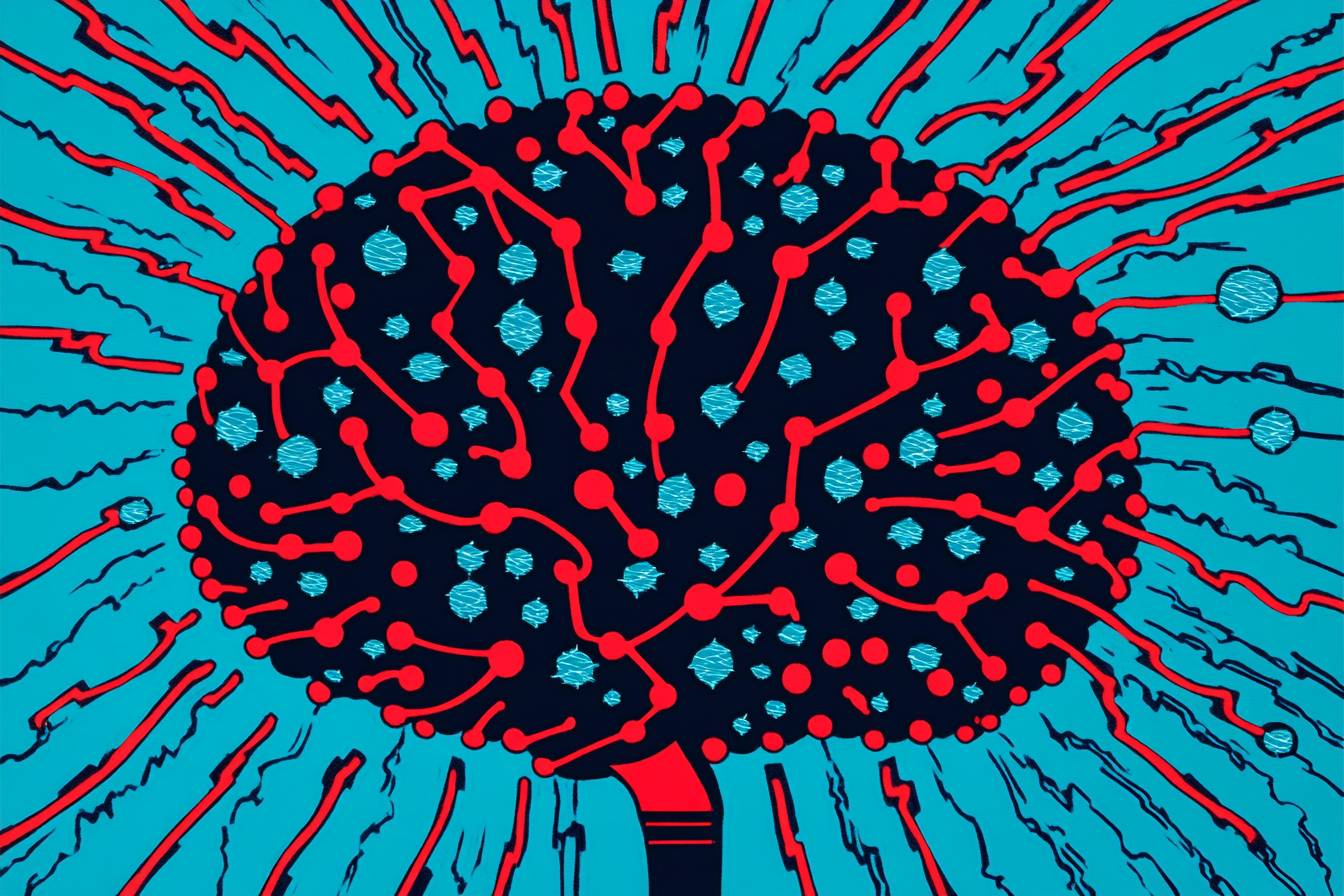
Is Science Compatible with Free Will?
Exploring Free Will and Consciousness in the Light of Quantum Physics and Neuroscience
Antoine Suarez and Peter Adams (Editors)
In Is Science Compatible with Free Will?, Antoine Suarez and Peter Adams argue that modern science, particularly quantum physics and neuroscience, may accommodate the existence of free will and consciousness. They explore whether these phenomena challenge deterministic or materialist views and whether nonmaterial principles could influence the physical world. The book is structured into three parts. Part I, 'Quantum Physics and Free Will,' examines how quantum phenomena such as nonlocality and randomness may support the existence of free will. Part II, 'Neuroscience and Free Will,' investigates the neurological basis of voluntary behavior and consciousness, including critiques of deterministic interpretations of brain activity. Part III, 'Attempts to Reconcile Science and Free Will,' presents philosophical and scientific models that aim to bridge the gap between determinism and libertarian free will, featuring contributions from various experts. This book is relevant today as it addresses fundamental questions about human agency in an era dominated by scientific inquiry. It brings together diverse perspectives from physicists, neuroscientists, philosophers, and economists, making it a valuable resource for those interested in the intersection of science, philosophy, and free will. The discussions reflect ongoing debates about the nature of consciousness and the implications of scientific advancements for our understanding of human behavior.

Knowledge and Decisions
Thomas Sowell
In Knowledge and Decisions, Thomas Sowell argues that human beings face severe limits on knowledge, making it crucial for societies to effectively mobilize and coordinate dispersed fragments of knowledge through various decision-making processes and institutions. He emphasizes that the effectiveness of social institutions—such as markets, families, courts, and governments—determines how well knowledge is processed and how decisions are made, ultimately affecting economic performance, social outcomes, and individual freedom. The book is divided into two main parts. Part I, Social Institutions, builds the analytical framework by explaining the role of knowledge, examining different decision-making processes, and exploring economic, social, and political trade-offs. It concludes with an integrative overview. Part II, Trends and Issues, applies this framework to real-world developments, tracing historical patterns and contemporary trends in economics, law, and politics. It highlights how the location of decision authority has shifted and what those changes mean for efficiency and liberty. Knowledge and Decisions remains relevant today as it sheds light on the ongoing debates about the role of government versus markets, the importance of decentralized decision-making, and the consequences of centralizing authority. Sowell's insights into how institutions process knowledge and make decisions are essential for understanding current economic and political challenges, emphasizing the need for feedback-rich environments that respect individual freedom.

Learn to Earn
A Beginner's Guide to the Basics of Investing and Business
Peter Lynch and John Rothchild
In Learn to Earn, Peter Lynch and John Rothchild argue that investing is a vital life skill that should be taught early. Understanding how capitalism and public companies work empowers individuals to build wealth and contribute to economic growth. The authors stress that financial literacy is essential for navigating today's complex economy. The book is structured into four main chapters and two appendices. Chapter 1 provides a historical overview of capitalism. Chapter 2 introduces the fundamentals of investing. Chapter 3 explains the lifecycle of companies. Chapter 4 discusses the broader economic forces that influence markets. Appendix 1 offers practical tools for stock picking, and Appendix 2 teaches how to read a balance sheet. This book is an accessible introduction to capitalism, business, and investing, aimed at beginners of all ages. It explains how companies operate, why investing matters, and how individuals can participate in the economy by owning shares in public companies. Using everyday examples, the authors demystify the stock market and make a compelling case for financial literacy as a cornerstone of personal and national prosperity.

Letter to a Christian Nation
Sam Harris
In Letter to a Christian Nation, Sam Harris argues that conservative Christianity is intellectually and morally indefensible, and its influence on American public life poses a serious threat to rational discourse, science, and the future of civilization. He critiques various aspects of Christian doctrine, including intelligent design and creationism, asserting that even moderate religious belief can enable extremism. The book is structured as a direct letter to a Christian, yet it targets a broader audience of secularists, moderates, and liberals. It does not follow a traditional chapter format but instead presents a continuous argumentative structure. Harris systematically addresses common Christian claims, countering them with scientific reasoning, moral philosophy, and social critique. This book remains relevant today as it confronts the ongoing influence of religious belief in public policy and education. In a time when science and rational thought face challenges from dogmatic ideologies, Harris's work equips secular readers with arguments against religious dogma and highlights the moral and intellectual costs of faith-based thinking in modern society.

Liberalism and Its Discontents
Francis Fukuyama
In Liberalism and Its Discontents, Francis Fukuyama argues that classical liberalism faces threats from both the populist right and the progressive left. He asserts that these challenges do not stem from its core principles but from distortions and excesses in its recent evolution, particularly through neoliberalism and an overemphasis on personal autonomy. Fukuyama contends that liberalism remains the best framework for political order and calls for its defense and moderation rather than abandonment. The book is structured into ten chapters. Chapter 1 defines classical liberalism and its historical justifications. Chapters 2 and 3 examine the shift from economic liberalism to neoliberalism and its social consequences. Chapters 4 and 5 explore how liberalism’s emphasis on autonomy has been taken to extremes, undermining its foundations. Chapter 6 critiques the rejection of rationality and science. Chapter 7 discusses how modern technology challenges liberal values like free speech. Chapter 8 evaluates whether the left or right offer viable alternatives to liberalism. Chapter 9 addresses the role of national identity in liberal societies. Chapter 10 proposes principles to renew and strengthen liberalism. This book is particularly relevant today as liberalism faces increasing criticism and scrutiny. Fukuyama addresses the populist right's attacks on liberal institutions and the progressive left's cultural challenges to liberal principles. Rather than advocating for the abandonment of liberalism, he emphasizes the need to return to its foundational ideas and moderate its excesses, making a compelling case for a balanced approach to modern governance.

Lives of Boulton and Watt
Principally from the Original Soho Mss. Comprising also a history of the invention and introduction of the steam engine
Samuel Smiles
In Lives of Boulton and Watt, Samuel Smiles argues that the steam engine was not invented in isolation, but emerged from a long lineage of inventors and innovations. The partnership of James Watt and Matthew Boulton was pivotal in transforming the steam engine from a scientific curiosity into a powerful force that drove the Industrial Revolution. The book is divided into three main sections. The first covers the early history of steam power and its inventors, including the Marquis of Worcester, Papin, Savery, and Newcomen. The second focuses on James Watt’s early life, his work as a mathematical instrument maker, and his key innovations in steam technology. The third section details the partnership between Watt and Boulton, their business challenges, technical breakthroughs, and the broader impact of their work on industry and society. The book ends with their later years and legacy. This dual biography sheds light on the collaborative nature of invention and the challenges faced by pioneers in technology. In today's rapidly evolving world, understanding the roots of innovation and the importance of partnerships can inspire modern entrepreneurs. The story of Boulton and Watt serves as a reminder that great achievements often arise from teamwork and perseverance.

Main Currents in Sociological Thought
Montesquieu, Comte, Marx, Tocqueville, The Sociologists and the Revolution of 1848
Raymond Aron
In Main Currents in Sociological Thought, Raymond Aron argues that the foundational thinkers of sociology—Montesquieu, Comte, Marx, and Tocqueville—along with the sociological implications of the 1848 Revolution, shaped the discipline of sociology. Aron explores how their ideas continue to influence modern sociological thought and the ways in which they address the complexities of society. The book begins with an introduction discussing the challenges of defining sociology and its historical development. It then presents chapters on individual thinkers—Montesquieu, Comte, Marx, and Tocqueville—analyzing their contributions to sociology. The final chapter examines the sociologists and the Revolution of 1848. The book concludes with bibliographies and an index, providing a comprehensive resource for readers. This book remains relevant today as it offers an intellectual history of sociology, highlighting the contributions of key figures who shaped the discipline. Aron contrasts different schools of sociological thought, particularly the empirical-analytical approach of American sociology and the synthetic-historical approach of Marxist sociology. By understanding these foundational ideas, readers can better grasp the evolution of sociology and its role in analyzing contemporary societies.

Main Currents in Sociological Thought (Volume 2)
Durkheim, Pareto, Weber
Raymond Aron
In Main Currents in Sociological Thought (Volume 2), Raymond Aron argues that the sociological theories of Emile Durkheim, Vilfredo Pareto, and Max Weber reveal essential insights into modern society. He explores their contributions regarding the tension between science and religion, social cohesion, and the evolution of social structures. Through this examination, Aron highlights how these thinkers address the complexities of social life in a rapidly changing world. The book is structured into a preface, an introduction, and three main sections that focus on Durkheim, Pareto, and Weber. Each section provides a detailed intellectual portrait of the thinker, analyzing their key contributions to sociology. The conclusion summarizes the insights gained and their relevance to contemporary sociology, while the bibliographies and index support further exploration of the topics discussed. This book remains relevant today as it engages with foundational ideas that continue to shape sociological thought. Aron's critical analysis of the methodologies and intellectual traditions of these three thinkers sheds light on ongoing discussions about social cohesion, the role of beliefs, and the impact of rationalization in society. Understanding their perspectives helps us navigate the complexities of modernity and the challenges it presents.

Master of The Senate (The Years of Lyndon Johnson, Vol. III)
Robert A. Caro
In Master of the Senate, Robert A. Caro argues that Lyndon B. Johnson’s rare gift for understanding, collecting, and exercising legislative power allowed him to dominate the U.S. Senate, reshape its traditions, and break an 87-year impasse to pass the 1957 Civil Rights Act—demonstrating both the mechanics and the moral consequences of power in a democracy. Caro reveals how Johnson’s ascent from junior senator to Majority Leader showcases the intricate workings of legislative authority and its profound implications.\n\nThe book is structured with an introduction followed by six parts containing 43 chronological chapters. Part I provides the historical context of the Senate; Part II details Johnson’s apprenticeship under Southern leaders; Part III explores his search for independent power bases; Part IV highlights the techniques he created to control the chamber as Majority Leader; Part V covers the fight for the 1957 Civil Rights Bill; and Part VI discusses the aftermath and Johnson’s consolidation of authority. The backmatter includes sources, notes, and photographs, enriching the reader's understanding of the narrative.\n\nMaster of the Senate remains relevant today as it examines the nature of power and its ethical dimensions. In an era where political polarization and legislative gridlock persist, Caro's insights into Johnson's mastery of process serve as a reminder that effective leadership can drive significant social change. The book not only chronicles a pivotal moment in American history but also offers lessons on the use and abuse of political power, making it essential reading for those engaged in contemporary politics.

Mastering ’Metrics
The Path from Cause to Effect
Joshua D. Angrist, Jörn-Steffen Pischke
In Mastering ’Metrics, Joshua D. Angrist and Jörn-Steffen Pischke argue that understanding causal relationships is crucial in economic and social science research. The book introduces five core econometric methods—randomized trials, regression, instrumental variables, regression discontinuity designs, and differences-in-differences—through real-world examples, making these complex techniques accessible to readers. The book is structured into six chapters, with an introduction that emphasizes the importance of causal inference. Each chapter focuses on a specific econometric method, detailing its application and providing engaging real-world examples. The final chapter synthesizes all five methods in the context of education and earnings, while appendices offer additional theoretical insights. Mastering ’Metrics is relevant today as data-driven decision-making becomes increasingly vital across industries. The authors' engaging style, incorporating humor and references to Kung Fu, helps demystify econometric techniques, equipping readers with the tools to analyze and interpret data effectively in a world where understanding cause and effect is paramount.

Meaning in Technology
Arnold Pacey
In Meaning in Technology, Arnold Pacey argues that technology is not just about functionality and efficiency; it carries personal, social, and cultural meanings. Understanding technology requires acknowledging personal experience, imagination, and values, not just political or economic factors. Pacey critiques reductionist views that ignore the subjective and creative aspects of technological practice. The book is structured into three parts. The introduction sets up the argument that technology has personal and cultural meanings beyond its functional role. Part I explores how practitioners experience technology through music, visual thinking, and hands-on practice. Part II examines the broader contexts of technology, including its relationship with nature, society, gender, and ethics. The conclusion advocates for a people-centered approach to technology. Pacey's insights are particularly relevant today as society grapples with the rapid advancement of technology. As technology increasingly shapes our lives, understanding its deeper meanings becomes crucial. This book encourages a shift from viewing technology as mere tools to recognizing its role in human creativity and social context, fostering a more holistic approach to technological development.

Meditations on First Philosophy
With Selections from the Objections and Replies
René Descartes
In *Meditations on First Philosophy*, René Descartes argues that establishing a foundation for certain knowledge requires systematic doubt of all beliefs that can be questioned. Through this process, he arrives at the famous 'Cogito, ergo sum' ('I think, therefore I am') and constructs a rationalist framework for knowledge. He proves the existence of God and delineates the distinction between mind and body, offering a profound shift in philosophical thought. The book is structured into a frontmatter section with acknowledgments, an introduction, and explanatory notes. The main text features a Letter of Dedication, a Preface to the Reader, and a Synopsis of the Six Meditations. Each meditation builds on the previous one, progressing from radical doubt to the establishment of metaphysical truths. The text concludes with Objections and Replies, where Descartes addresses critiques from contemporary philosophers. Today, *Meditations on First Philosophy* remains a cornerstone of Western philosophy, introducing methodological skepticism that encourages critical thinking and inquiry. Its exploration of the nature of existence, knowledge, and the mind-body relationship resonates in discussions across philosophy, science, and ethics, making it essential reading for anyone engaged in the pursuit of understanding.

Money Changes Everything
How Finance Made Civilization Possible
William N. Goetzmann
In Money Changes Everything, William N. Goetzmann argues that finance is a foundational technology that enabled the development of civilization by allowing societies to reallocate value, risk, and capital through time. It is not inherently good or bad, but a powerful tool that has shaped human history, from the first cities to modern global markets. The book is divided into four parts, each covering a major phase in the history of finance. Part I explores the origins of finance in Mesopotamia, Greece, and Rome. Part II examines the independent development of financial systems in China. Part III focuses on the evolution of finance in Europe, including the rise of corporations and financial markets. Part IV discusses the emergence of global markets and modern financial theory. Each part contains multiple chapters that highlight key innovations, institutions, and historical episodes. This book is relevant today as it sheds light on how financial systems have shaped our societies and economies. Understanding the historical context of finance can help us navigate current challenges like economic inequality, debt crises, and market speculation. Goetzmann's exploration of finance as a driver of human progress encourages readers to reflect on the dual nature of finance—its potential to both solve problems and create new ones.

Myth and Meaning
Claude Lévi-Strauss
In Myth and Meaning, Claude Lévi-Strauss argues that mythology, often dismissed as primitive or superstitious, plays a critical role in human understanding and shares deep connections with modern science, music, and thought. He challenges the notion that myths are relics of a bygone era, asserting their importance in shaping human cognition and culture. The book is based on five lectures delivered as part of the 1977 Massey Lectures. Each chapter corresponds to a lecture, exploring themes like the relationship between myth and science, the comparison of 'primitive' and 'civilized' thought, the transformation of myths into history, and the parallels between myth and music. This structure allows Lévi-Strauss to delve deeply into each theme while maintaining a cohesive narrative. In today's fast-paced world, where science and rationality often overshadow other forms of expression, Lévi-Strauss's work remains relevant. It invites readers to reconsider the role of myth in contemporary thought, highlighting its enduring significance and structural connections to various aspects of human experience, including art and science.
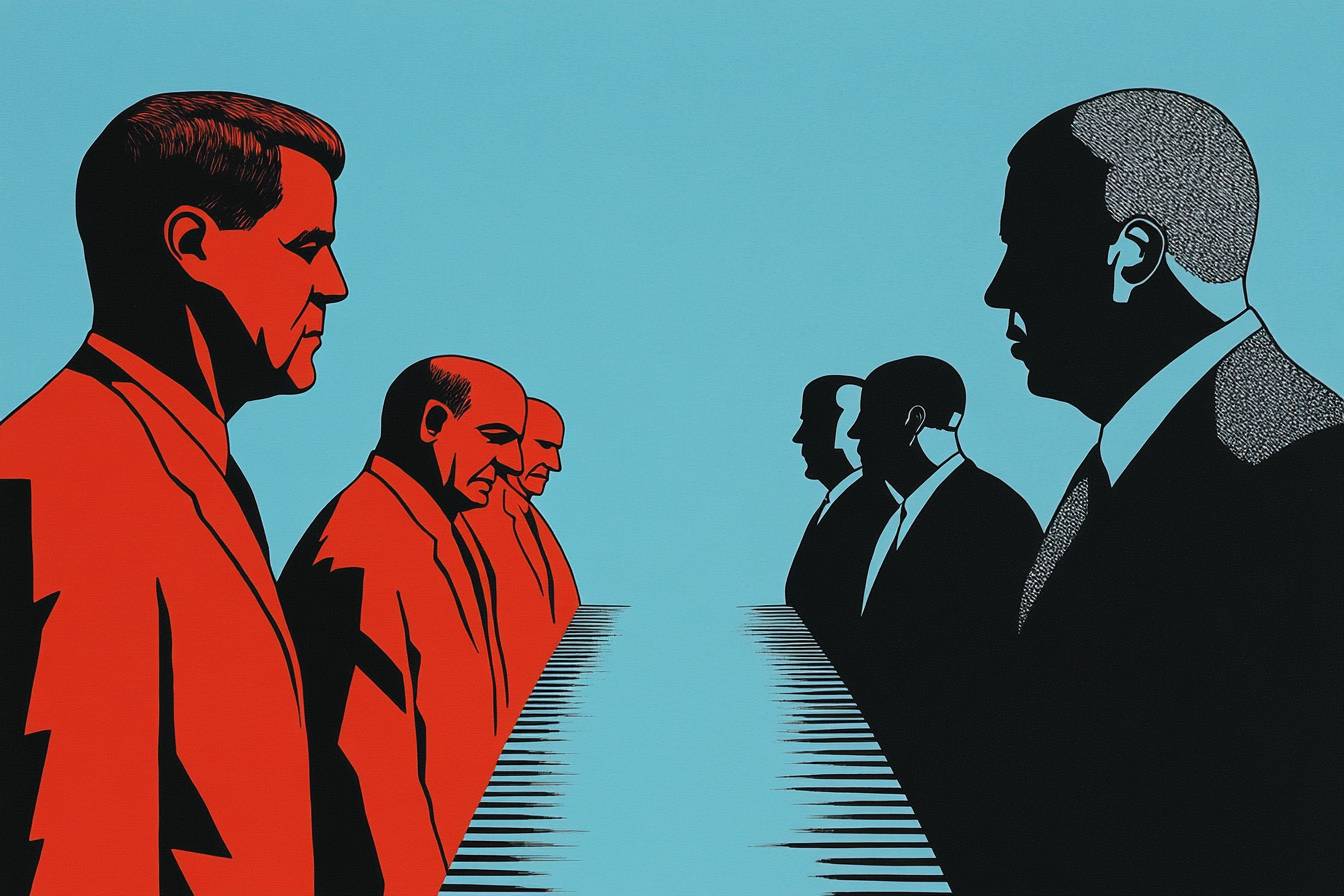
Nuclear Folly
A History of the Cuban Missile Crisis
Serhii Plokhy
In Nuclear Folly, Serhii Plokhy argues that the Cuban Missile Crisis was not a calculated success of diplomacy, but a near-catastrophic series of misjudgments, miscommunications, and accidents. It was resolved not by strategic brilliance but by the shared fear of nuclear war between Kennedy and Khrushchev. This perspective challenges the traditional U.S.-centric narrative and highlights the role of luck and misjudgment in avoiding disaster. The book is divided into seven parts, each representing a phase of the crisis. Part I ('Nemeses') introduces the key players and their backgrounds. Part II ('Red Gamble') covers the Soviet decision to place missiles in Cuba. Part III ('Agony of Decision') details the U.S. discovery and internal debates. Part IV ('Moment of Truth') shows the escalation and brinkmanship. Part V ('Black Saturday') focuses on the most dangerous day of the crisis. Part VI ('Rising from the Dead') describes the de-escalation. Part VII ('Settlement') covers the final negotiations and resolution. The book includes a Preface, Prologue, Epilogue, Acknowledgments, Notes, and Index. Nuclear Folly is a deeply researched, multi-perspective account that draws on newly released Soviet and Cuban sources. It reveals how close the world came to nuclear war due to a cascade of errors and misread intentions. Plokhy's work serves as a warning for today’s world, where nuclear threats are rising, and the lessons of the past are increasingly overlooked. By understanding the complexities and fears that shaped the crisis, we can better navigate current global tensions.

Object-Oriented Ontology: A New Theory of Everything
A New Theory of Everything
Graham Harman
In Object-Oriented Ontology: A New Theory of Everything, Graham Harman argues that reality consists of objects that exist independently of human perception. This perspective challenges dominant philosophical traditions that prioritize human access to knowledge. Instead, Harman posits that objects interact indirectly and withdraw from direct access, reshaping our understanding of existence. The book is structured into seven chapters. The introduction sets the stage by discussing the relevance of OOO in contemporary discourse, particularly in response to post-truth politics. Chapter 1 introduces the core concepts of OOO, including the distinction between real and sensual objects. Chapter 2 argues that aesthetics, rather than science, is the foundation of philosophy. Chapter 3 explores the implications of OOO for society and politics. Chapter 4 discusses indirect relations between objects and critiques traditional notions of knowledge. Chapter 5 compares OOO with rival philosophical traditions, particularly Derrida and Foucault. Chapter 6 examines different approaches within OOO and its influence on various disciplines. Chapter 7 summarizes the key principles of OOO. This book is relevant today as it offers a radical alternative to human-centered views of reality, which dominate much of contemporary thought. In an age marked by post-truth politics and shifting perceptions of reality, Harman's exploration of how objects—whether human, non-human, real, or fictional—exist independently and interact in ways that are not directly accessible provides a fresh lens through which to view our world.

On Liberty
John Stuart Mill
In On Liberty, John Stuart Mill argues that individual liberty is paramount and should only be restricted to prevent harm to others. He warns against the 'tyranny of the majority' and emphasizes the need for safeguards to protect minority rights. The book likely begins with a philosophical foundation of liberty, followed by an analysis of the dangers of majoritarian rule, and concludes with a discussion on the role of government in protecting individual freedoms. On Liberty is a foundational work in political philosophy and classical liberalism. Mill explores the limits of government and societal interference in individual lives, arguing that personal freedom should only be restricted to prevent harm to others. His critiques of majoritarian oppression and advocacy for education and institutional safeguards remain relevant today, as societies grapple with balancing individual rights against collective decision-making.
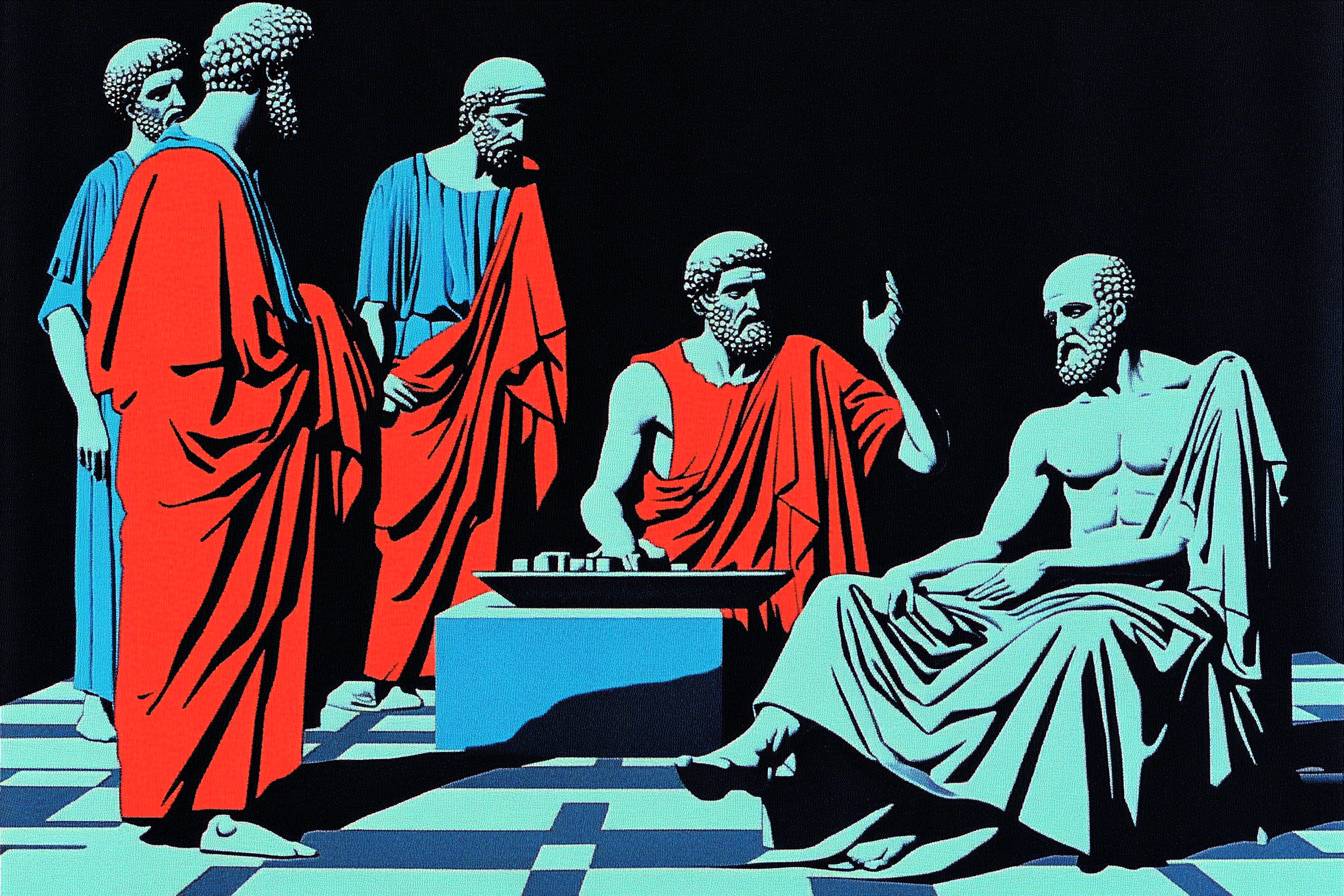
On Reasoning and Argument
Essays in Informal Logic and on Critical Thinking
David Hitchcock
In On Reasoning and Argument, David Hitchcock argues that reasoning and argumentation are nuanced processes that extend beyond traditional deductive and inductive frameworks. He critiques conventional approaches, such as the teaching of fallacies, and provides a comprehensive exploration of informal logic and critical thinking. The book is divided into seven thematic parts, each addressing a specific aspect of reasoning and argumentation. Each part contains a collection of essays written over four decades, presented in chronological order within the theme. At the end of each part, Hitchcock includes a postscript to update his views. The parts cover topics such as deduction, material consequence, patterns of reasoning, interpersonal discussion, evaluation of reasoning, fallacies, and the relationship between informal logic and critical thinking. This book is relevant today as it challenges traditional views and encourages a deeper understanding of reasoning processes. In an age where critical thinking is vital for navigating complex information, Hitchcock's insights offer a valuable resource for educators, students, and anyone interested in enhancing their reasoning skills.

On the Origin of Species
By Means of Natural Selection or the Preservation of Favoured Races in the Struggle for Life
Charles Darwin
In On the Origin of Species, Charles Darwin argues that species evolve over time through natural selection, where advantageous traits become more common in populations due to survival and reproduction advantages. This process leads to the adaptation of species to their environments and challenges the notion of fixed, independently created species. The book begins with an introduction explaining Darwin’s journey, observations, and the development of his theory. It then progresses through chapters covering variation in domesticated and wild species, the struggle for existence, natural selection, laws of variation, difficulties with the theory, instinct, hybridism, geological records, species succession, geographical distribution, classification, and concludes with a summary of the argument and its implications. Today, Darwin's work remains relevant as it lays the foundation for evolutionary biology and informs our understanding of biodiversity. It challenges us to consider the complex interplay of factors that shape life on Earth and encourages ongoing inquiry into the mechanisms of evolution, a topic that continues to resonate in fields such as genetics, ecology, and conservation.

One Up on Wall Street
How to Use What You Already Know to Make Money in the Market
Peter Lynch with John Rothchild
In One Up on Wall Street, Peter Lynch argues that individual investors can outperform professional fund managers by leveraging their everyday knowledge and observations. He believes that amateurs can identify promising stocks before Wall Street catches on, giving them a unique advantage in the market. The book is structured into three parts. Part I, 'Preparing to Invest,' helps readers assess their financial goals and risk tolerance. Part II, 'Picking Winners,' provides a framework for identifying promising stocks and analyzing financials. Part III, 'The Long-Term View,' covers portfolio management, when to buy and sell, and broader market insights. Additionally, the book includes an introduction to the millennium edition, a prologue with a personal anecdote from Lynch, and an introduction explaining why individual investors have an edge over professionals. This book remains relevant today as individual investors increasingly engage in the stock market, often through online platforms. Lynch's insights empower them to use their everyday experiences to spot investment opportunities. In a world where information is abundant yet often overwhelming, Lynch's straightforward approach offers clarity and practical strategies for navigating the market.

Paper Belt on Fire
How Renegade Investors Sparked a Revolt Against the University
Michael Gibson
In Paper Belt on Fire, Michael Gibson argues that scientific, technological, and philosophical progress has stalled due to the failure of traditional educational institutions. He contends that to reignite progress, we must support unconventional talent outside the university system and reform or replace the institutions that have failed us. Gibson and his colleagues at the Thiel Fellowship and 1517 Fund are actively working to challenge the status quo by investing in young, uncredentialed talent. The book opens with a prologue that sets the tone through a personal anecdote involving Bill Gates. It then unfolds over 16 chapters that blend memoir, philosophy, history, and reportage to tell the story of the Thiel Fellowship and 1517 Fund. The final section, a coda titled 'The Invisible College,' offers a more analytical reflection on the stagnation thesis and outlines unsolved problems that must be addressed to reignite progress. Paper Belt on Fire is relevant today as it critiques the stagnation of innovation and the failure of universities to foster real progress. It tells the story of how Gibson and Danielle Strachman backed unconventional talent like Vitalik Buterin and Laura Deming. Through memoir, philosophy, and sharp critique, Gibson emphasizes that the future depends on breaking free from failing institutions and rediscovering how to build, invent, and learn.

Paradise Lost
John Milton
In Paradise Lost, John Milton argues that the Fall of Man is a complex tale of free will, obedience, and redemption. He delves into Satan’s rebellion, the temptation of Adam and Eve, and their expulsion from Eden. Milton portrays Satan as a tragic figure, exploring the consequences of disobedience and the nature of divine justice. The book is an epic poem structured into twelve books. It begins in medias res, with Satan and his fallen angels in Hell, plotting to corrupt humanity. The narrative unfolds through debates among the fallen angels, Satan’s journey to Earth, the temptation of Adam and Eve, and their eventual expulsion from Paradise. Milton employs blank verse and rich imagery to convey his themes. Paradise Lost remains relevant today as it addresses timeless questions about free will, authority, and moral choice. Its exploration of rebellion and the pursuit of knowledge resonates in contemporary discussions about ethics and power. The poem's influence on literature and thought endures, making it a cornerstone of English literature and a profound commentary on human nature.
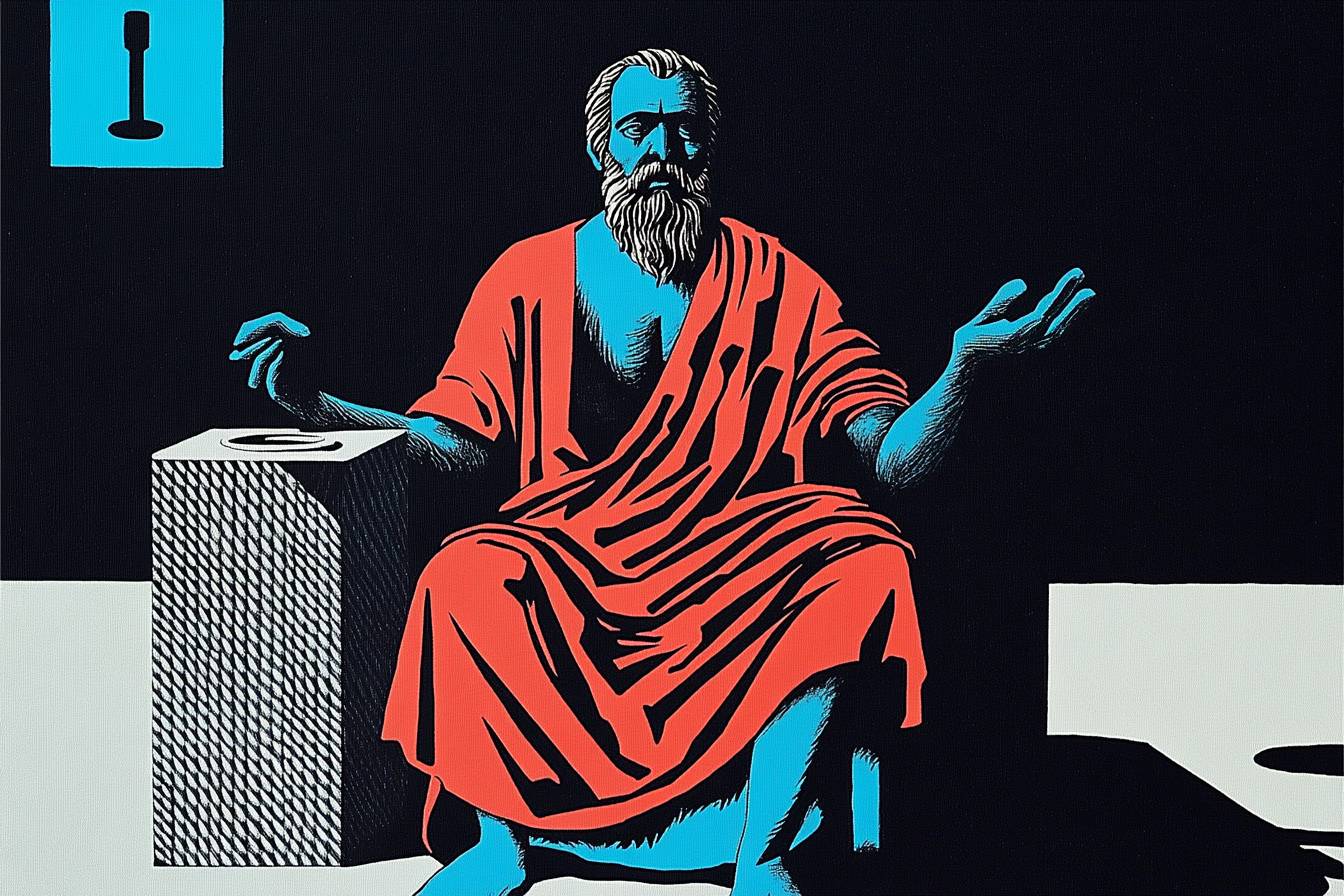
Philosophical Investigations
Ludwig Wittgenstein
In Philosophical Investigations, Ludwig Wittgenstein argues that meaning in language arises from its use in specific contexts, rather than from fixed definitions or logical structures. He critiques traditional philosophy and suggests that many philosophical problems stem from misunderstandings of how language works. This shift in perspective challenges the foundations of how we think about meaning and communication. The book consists of two parts. Part I, completed by 1945, is a series of remarks and short paragraphs exploring various philosophical topics. Part II, written between 1946 and 1949, was intended to be integrated into Part I but remains a separate section. The book does not follow a linear argument but instead presents interconnected reflections on language, meaning, and philosophy. This structure allows Wittgenstein to explore complex ideas in a more flexible way. Philosophical Investigations remains relevant today as it invites readers to reconsider their understanding of language and its role in shaping thought. In an age where communication is often mediated by technology, Wittgenstein's insights into how meaning is constructed through use in specific contexts resonate strongly. The book encourages a more nuanced view of language, urging us to recognize the practical, social, and contextual factors that influence our understanding.

Philosophy and History of Science: Beyond the Kuhnian Paradigm
Hans Radder
In Philosophy and History of Science: Beyond the Kuhnian Paradigm, Hans Radder argues that the Kuhnian paradigm, which tightly couples the philosophy and history of science, is insufficient for understanding scientific change. He explores alternative frameworks that recognize the relative autonomy of philosophy, allowing for a more nuanced interpretation of scientific development. This scholarly article is structured in five main sections. It begins with a summary of Kuhn’s approach, followed by a critique of the 'testing-theories-of-scientific-change' program. Radder then examines three alternative approaches: Ian Hacking’s concept of 'styles of reasoning,' Thomas Nickles’s reconstructionist interpretation and critique of Whig history, and finally his own proposal for philosophy as a theoretical, interpretive, and explanatory discipline. Radder's work is relevant today as it challenges the prevailing views in the philosophy of science, encouraging a more flexible and pluralistic understanding of scientific inquiry. By moving beyond Kuhn, Radder opens the door for new methodologies that can adapt to the complexities of contemporary scientific practice, which often defies rigid categorizations.

Plough, Sword and Book
The Structure of Human History
Ernest Gellner
In Plough, Sword and Book, Ernest Gellner argues that human history is shaped by the dynamic interaction of three core forces—production (plough), coercion (sword), and cognition (book). These elements define the structure of societies and explain their transformation from pre-modern to modern forms. Gellner offers a philosophical and sociological framework to understand how knowledge, power, and economic systems co-evolve. The book is divided into 10 chapters. The first chapters lay out the need for a philosophical approach to history and introduce the triadic framework of production, coercion, and cognition. Middle chapters trace the evolution of human societies through cognitive and institutional changes, including the rise of religion, philosophy, and the Enlightenment. Later chapters analyze the erosion of traditional power structures, the rise of modern economic and knowledge systems, and speculate on future developments. Each chapter builds on the last to form a cumulative argument about the structure and direction of human history. Plough, Sword and Book remains relevant today as it provides a lens to examine the ongoing transformations in our societies. In an age marked by rapid technological advancement and shifting power dynamics, Gellner's insights into the interplay of economics, governance, and knowledge offer valuable perspectives. Understanding these forces helps us navigate contemporary challenges and anticipate future developments in human organization and thought.

Power
A New Social Analysis
Bertrand Russell
In Power, Bertrand Russell argues that power is the fundamental concept of social science, akin to energy in physics. He examines its various forms, its role in human behavior and institutions, and how it can be ethically managed to prevent abuse and promote societal well-being. The book is divided into 18 chapters. It begins with an exploration of the impulse to power and the relationship between leaders and followers. It then categorizes different forms of power (priestly, kingly, revolutionary, economic, etc.) and examines their historical and social implications. Later chapters discuss the biology of organizations, the interplay between individuals and governments, and the ethical dimensions of power. The book concludes with a discussion on taming power and its role in education and world governance. Written in the shadow of rising totalitarian regimes, the book is both a warning and a guide to understanding the dynamics of power in a complex world. Russell's insights are particularly relevant today as societies grapple with issues of authority, governance, and the ethical use of power in an increasingly interconnected and unstable environment.

Private Truths, Public Lies
The Social Consequences of Preference Falsification
Timur Kuran
In *Private Truths, Public Lies*, Timur Kuran argues that people often misrepresent their true preferences due to social pressures, a phenomenon known as 'preference falsification.' This misrepresentation distorts public discourse, inhibits social change, and can lead to sudden, unexpected societal shifts. Kuran highlights how this behavior affects both individual beliefs and collective actions, shaping the course of societies. The book is structured into four parts. Part I introduces preference falsification and its impact on public and private opinion. Part II explores how it sustains outdated institutions and policies. Part III examines how it shapes ideology and limits what societies consider possible. Part IV discusses how suppressed preferences can lead to sudden revolutions and social transformations, illustrating the profound effects of this phenomenon across various contexts. Kuran's analysis is particularly relevant today as societies grapple with issues of authenticity, representation, and social change. His insights into how hidden beliefs can destabilize established norms resonate in contemporary discussions about political correctness, activism, and the dynamics of social movements. By applying his framework to historical and contemporary cases, Kuran sheds light on the complexities of social evolution and the potential for sudden change in the face of prevailing norms.

Public Choice Theory and the Illusion of Grand Strategy
How Generals, Weapons Manufacturers, and Foreign Governments Shape American Foreign Policy
Richard Hanania
In *Public Choice Theory and the Illusion of Grand Strategy*, Richard Hanania argues that American foreign policy is not the result of a coherent grand strategy but rather the outcome of political pressures and the influence of concentrated interests. These interests include government contractors, the national security bureaucracy, and foreign governments. Hanania posits that public choice theory provides a more effective framework for understanding U.S. foreign policy than traditional grand strategy models. The book is structured to first critique the idea of grand strategy in the introduction, followed by a detailed examination of various aspects of U.S. foreign policy across six chapters. Chapter 1 critiques the unitary actor model and the concept of American grand strategy. Chapter 2 introduces the public choice model, explaining how concentrated interests shape decisions. Subsequent chapters explore U.S. military interventions, policy toward rising powers, the effectiveness of economic sanctions, and the War on Terror, ultimately concluding with a summary of findings and implications for reforming U.S. foreign policy. This book is relevant today as it challenges the conventional wisdom that U.S. foreign policy is strategically coherent. In an era of complex global challenges, understanding the underlying political pressures and interests that shape policy decisions is crucial. Hanania's insights encourage readers to rethink how American foreign policy is formulated and the implications of these dynamics for future international relations.

Reprogramming the American Dream
Kevin Scott
In Reprogramming the American Dream, Kevin Scott argues that artificial intelligence, if developed and governed with the right principles and policies, can be a force for inclusive prosperity—revitalizing the American Dream by creating opportunity for all, especially in rural and underserved communities. He emphasizes that AI can empower workers and help solve major societal challenges rather than leading to mass unemployment or deepening inequality. The book is structured in two main parts. Part I, 'Where We’ve Been,' includes four chapters that explore the author’s personal background, the economic decline in rural America, and early examples of AI’s potential. Part II, 'Where We’re Headed, and How to Get There,' includes five chapters that explain what AI is, how it works, its implications for jobs, and the political and ethical considerations surrounding it. The book also features a foreword, an introduction, a conclusion, and backmatter such as acknowledgments, further reading, notes, and an index. Reprogramming the American Dream is timely as society grapples with the rapid advancement of AI technologies and their impact on the workforce. Scott, drawing from his upbringing in rural Virginia and experience in Silicon Valley, presents a nuanced, optimistic vision for the future. His call for a more inclusive and human-centered approach to AI resonates as communities seek to harness technology to foster growth and opportunity, particularly in areas that have been historically overlooked.

Revolusi
Indonesia and the Birth of the Modern World
David Van Reybrouck
In Revolusi, David Van Reybrouck argues that Indonesia’s fight for independence was not just a national revolution but a global turning point that helped shape the modern post-colonial world. The Indonesian revolution catalyzed decolonization movements worldwide and redefined international relations in the 20th century. The book is structured chronologically and thematically across 15 chapters, beginning with Dutch colonial expansion in Southeast Asia and ending with the global impact of Indonesia’s independence. It includes a prologue that sets the tone, followed by chapters that cover key historical phases: colonial rule, anti-colonial resistance, Japanese occupation, the revolution itself, and the international response. The book concludes with an epilogue and scholarly apparatus including a bibliographical essay, bibliography, notes, and index. Revolusi is relevant today as it sheds light on the ongoing struggles for independence and self-determination faced by many nations. By examining Indonesia's path, Van Reybrouck highlights the interconnectedness of global history and the importance of understanding past movements to navigate current geopolitical landscapes. This book serves as a reminder of the power of collective action and the impact of historical events on contemporary society.

SHOWSTOPPER!
The Breakneck Race to Create Windows NT and the Next Generation at Microsoft
G. Pascal Zachary
In SHOWSTOPPER!, G. Pascal Zachary argues that the creation of Windows NT at Microsoft was a high-risk, high-reward endeavor that reveals the intense human, technical, and organizational challenges of building complex software systems, and the personal costs of innovation in the modern workplace. The book chronicles the intense, high-stakes effort led by David Cutler and his team, highlighting the pressures of innovation and the sacrifices made in pursuit of a technological breakthrough. The book opens with an Introduction that sets the scene and introduces David Cutler, the central figure. It then unfolds over 10 chapters, each focusing on different aspects of the project—from team dynamics and leadership to technical hurdles and emotional toll. The book concludes with an Epilogue, a Note on Sources, Acknowledgements, and a New Afterward, providing a comprehensive view of the challenges faced during this monumental task. SHOWSTOPPER! remains relevant today as it explores the culture of software engineering and the relentless pursuit of innovation that defines the tech industry. As organizations continue to tackle complex projects, the lessons from Cutler's leadership and the team's experiences offer valuable insights into managing complexity, fostering collaboration, and understanding the human cost of progress.

Sapiens
A Brief History of Humankind
Yuval Noah Harari
In Sapiens, Yuval Noah Harari argues that Homo sapiens became the dominant species on Earth due to their unique ability to create and believe in shared myths, which enabled large-scale cooperation and societal development. This capacity for shared belief has driven the advancement of societies and cultures throughout human history. The book is structured into four parts: (1) The Cognitive Revolution, which explores how Homo sapiens developed unique cognitive abilities; (2) The Agricultural Revolution, examining the shift from hunter-gatherer societies to agriculture; (3) The Unification of Humankind, discussing the emergence of large-scale societies, money, empires, and religions; and (4) The Scientific Revolution, covering the rise of modern science, capitalism, and technological advancements. Each part highlights a pivotal moment in human history that shaped our species. Sapiens remains relevant today as it prompts reflection on our current trajectory. Harari's insights into shared myths and cooperation challenge us to consider how these forces continue to influence our societies amidst globalization and technological change. The book invites readers to think critically about the past and future of humanity, making it a significant read for anyone interested in understanding the complexities of human history.

Security Analysis
Principles and Technique
Benjamin Graham and David L. Dodd
In Security Analysis, Benjamin Graham and David L. Dodd argue that investment decisions should be based on rigorous analysis of intrinsic value, avoiding speculation and relying on a margin of safety to protect against uncertainty and market volatility. This approach helps investors make informed choices that withstand market fluctuations and economic changes. The book is structured into eight parts, each focusing on a specific aspect of security analysis. These include fixed-value investments, common-stock analysis, balance-sheet analysis, and global value investing. Each part begins with an introduction by a modern financial expert, linking the original principles to contemporary investing challenges, ensuring the text remains relevant. Security Analysis is a foundational text on value investing, essential for both novice and seasoned investors. Its blend of theoretical principles and practical techniques provides a timeless guide for disciplined investing. In an era of rapid market changes and increased speculation, the book's emphasis on intrinsic value and a margin of safety offers crucial insights for navigating today's financial landscape.

Seeing Like a State
How Certain Schemes to Improve the Human Condition Have Failed
James C. Scott
In Seeing Like a State, James C. Scott argues that large-scale state-led social engineering projects often fail due to their reliance on overly simplistic, high-modernist schemes that ignore local knowledge and practical experience. These failures are exacerbated when combined with authoritarian power and a weakened civil society. The book is structured into four parts. Part 1 examines how states attempt to make societies more 'legible' through standardization. Part 2 explores high-modernist ideology and its impact on urban planning and revolutionary movements. Part 3 analyzes large-scale agricultural and rural resettlement projects, including Soviet collectivization and Tanzanian villagization. Part 4 introduces the concept of 'metis' (practical knowledge) and contrasts it with state-imposed simplifications. The conclusion summarizes the argument and its broader implications. Scott's critique of state planning remains relevant today as governments continue to implement top-down policies that often overlook local contexts. His insights into the failures of high-modernism challenge policymakers to consider the complexities of human societies. By emphasizing the importance of practical knowledge, Scott advocates for a more grounded approach to social engineering that respects local customs and experiences.

Simple Rules for a Complex World
Richard A. Epstein
In Simple Rules for a Complex World, Richard A. Epstein argues that the modern legal system is overly complex and inefficient, driven by excessive regulation and litigation. He contends that a return to simple, general legal rules—centered on property rights, freedom of contract, and limited government—is essential for fostering social cooperation, economic productivity, and individual liberty in a complex world. The book is divided into three parts. Part I ('Cutting through Complexity') introduces the value of simplicity and the forces that undermine it. Part II ('The Simple Rules') lays out the foundational legal principles Epstein advocates: autonomy, property, contract, tort, and limited exceptions for coordination and compensation. Part III ('The Rules in Action') applies these principles to real-world legal domains such as labor law, discrimination, liability, corporate governance, and environmental regulation. The book concludes with a reflection on the challenges to implementing simple rules in a complex society. This book is a critique of the modern legal system’s complexity and its consequences for society. Richard Epstein argues that the proliferation of laws, regulations, and litigation has made legal compliance costly and inefficient, benefiting lawyers at the expense of broader social welfare. He proposes a return to simple, general legal rules—rooted in classical liberalism and the common law tradition—as a better foundation for managing the needs of a complex, modern society. Through both theoretical exposition and practical case studies, Epstein shows how simplicity in law can lead to more stable, predictable, and productive outcomes.

Skin in the Game
Hidden Asymmetries in Daily Life
Nassim Nicholas Taleb
In Skin in the Game, Nassim Nicholas Taleb argues that systems, decisions, and ethics are more robust and fair when individuals have 'skin in the game,' meaning they are exposed to the risks and consequences of their actions. This concept highlights the importance of personal accountability in decision-making and critiques those who make choices without facing the repercussions. Taleb's insights push for a reevaluation of how we assess risk and responsibility in various aspects of life. The structure of the book likely reflects Taleb's characteristic style, blending philosophical, historical, and scientific discussions with personal essays, stories, and parables. While the exact layout isn't detailed in the provided information, it is part of the 'Incerto' series, which allows for reading in any order. This flexibility complements Taleb's exploration of complex themes related to uncertainty and human behavior. In today's world, where decisions often come with hidden asymmetries and unequal risk distribution, Taleb's work is especially relevant. As individuals and organizations navigate complex systems, understanding the dynamics of risk and accountability becomes crucial. Skin in the Game encourages readers to consider the implications of their choices and the importance of personal investment in the outcomes of those choices.

Soldiers of Reason
The RAND Corporation and the Rise of the American Empire
Alex Abella
In Soldiers of Reason, Alex Abella argues that the RAND Corporation, founded to advise the U.S. Air Force, evolved into one of the most powerful and secretive think tanks in American history. Through its development and promotion of rational choice theory and systems analysis, RAND shaped U.S. military strategy, foreign policy, and domestic governance, effectively becoming the intellectual engine of the American empire. The book is divided into six parts, each covering a different era or theme in RAND’s history. Part 1 introduces RAND’s founding and early mission. Part 2 explores its Cold War role and internal culture. Part 3 focuses on RAND’s influence during the Vietnam War and its application of systems thinking. Part 4 examines RAND’s role in domestic policy and the rise of neoconservatism. Part 5 looks at RAND’s involvement in post-Cold War conflicts and counterterrorism. Part 6 reflects on RAND’s legacy and ongoing influence. Each part contains several chapters that follow a roughly chronological and thematic progression. This book is relevant today as it sheds light on how technocratic thinking and analytical frameworks have shaped modern governance and military strategy. Understanding RAND's impact on policy-making helps contextualize current global conflicts and the ideological battles that continue to define the American empire. Abella's exploration of RAND’s influence encourages readers to reflect on the balance between rational analysis and ethical considerations in shaping the future.

Special Providence
American Foreign Policy and How It Changed the World
Walter Russell Mead
In Special Providence, Walter Russell Mead argues that the United States has had an exceptionally successful foreign policy, contrary to conventional wisdom. This success stems from the interplay of four enduring schools of thought—Hamiltonian (commerce-focused), Jeffersonian (democracy-preserving), Jacksonian (populist and military-driven), and Wilsonian (moralistic and internationalist). These traditions have shaped U.S. foreign policy since the nation's founding. The book is divided into an introduction, nine chapters, and an afterword. The first three chapters set the stage by discussing the historical evolution of American foreign policy. The next four chapters analyze the four major schools of thought—Hamiltonian, Wilsonian, Jeffersonian, and Jacksonian. The final two chapters examine the post-Cold War world and the future of U.S. foreign policy. The book concludes with notes, acknowledgments, and an index. This book challenges the notion that American foreign policy has been amateurish or incoherent. Mead shows how the U.S. has been remarkably successful in global affairs due to the dynamic interaction of four distinct foreign policy traditions. He traces these traditions from the founding era to the present, revealing their impact on America's rise to global power. The book remains relevant as it explores how these schools of thought continue to influence contemporary debates and will shape future U.S. foreign policy.

Strategy Rules
Five Timeless Lessons from Bill Gates, Andy Grove, and Steve Jobs
Michael A. Cusumano and David B. Yoffie
In Strategy Rules, Michael A. Cusumano and David B. Yoffie argue that despite their different personalities and backgrounds, Bill Gates, Andy Grove, and Steve Jobs shared a common strategic framework that made them master strategists. These five strategy rules—developed through trial and error—can be learned and applied by other leaders to drive long-term success. The book is structured around five core strategy rules, each explored in a dedicated chapter. It begins with a preface and an introduction that sets the context and introduces the three CEOs. The five main chapters each focus on one rule, combining historical narrative with strategic analysis. A concluding chapter distills lessons for the next generation of leaders. Supporting materials include notes, an index, and author bios. This book examines how Bill Gates, Andy Grove, and Steve Jobs became master strategists by developing and applying five key rules of strategy. Drawing on decades of research, interviews, and firsthand experience, the authors show how these leaders navigated fast-changing technology markets, built dominant platforms, and shaped their organizations around their unique strengths. The book offers a practical framework for current and aspiring leaders to think more strategically and execute more effectively in any industry.

Stubborn Attachments
A Vision for a Society of Free, Prosperous, and Responsible Individuals
Tyler Cowen
In Stubborn Attachments, Tyler Cowen argues that sustained economic growth is not just beneficial but morally essential. It leads to longer, healthier, and more fulfilling lives, and should be a central goal of public policy. To achieve this, we must adopt a long-term perspective that values future generations, respects individual liberty, and embraces responsible decision-making. The book begins with an introduction that frames the moral case for economic growth. It then unfolds over five chapters, each tackling a key philosophical or practical challenge to this thesis: the importance of wealth, how to handle disagreement, the ethics of time, the role of redistribution, and how to act under uncertainty. A conclusion ties the arguments together. Two appendices and a reference section provide additional depth and support. Stubborn Attachments is relevant today as societies face pressing issues like inequality, economic stagnation, and political polarization. Cowen’s insights encourage readers to rethink common objections to growth and to embrace a framework that prioritizes liberty, prosperity, and long-term thinking. In a world where short-term gains often overshadow long-term benefits, Cowen’s call for 'stubborn attachments' to key values offers a refreshing perspective on how to navigate the complexities of modern life.

Surfaces and Essences
Analogy as the Fuel and Fire of Thinking
Douglas Hofstadter & Emmanuel Sander
In Surfaces and Essences, Douglas Hofstadter and Emmanuel Sander argue that analogy is the core mechanism of human cognition. All concepts are formed and enriched through analogies, and all acts of thinking—from perception to language to scientific discovery—are driven by analogy-making. The book begins with a prologue that lays out the central thesis: analogy is the foundation of thought. Chapters 1–3 explore how analogies shape our concepts, from single words to phrases to unlabeled mental categories. Chapter 4 discusses abstraction and how we fluidly move between categories. Chapters 5 and 6 examine how analogies influence us (often invisibly) and how we use them deliberately in reasoning and communication. Chapters 7 and 8 explore analogies in scientific thinking, from naïve student misconceptions to revolutionary insights. The book ends with an 'epidialogue'—a fictional debate that concludes analogy and categorization are one and the same. This book is relevant today as it challenges conventional views on cognition and emphasizes the role of analogy in understanding complex ideas. In an age where information overload is common, recognizing the power of analogy can enhance our ability to learn and innovate. Hofstadter and Sander's insights encourage readers to rethink how they approach problem-solving, communication, and creativity, making this work a vital contribution to both cognitive science and everyday thinking.

THINK
A Biography of the Watsons and IBM
William Rodgers
In THINK, William Rodgers argues that IBM’s rise to global dominance was driven by the vision, will, and personality of Thomas J. Watson, who built a corporate empire that shaped modern business and technology. The book explores how Watson’s leadership style, values, and legacy molded IBM into a powerful institution, and how his sons carried on that legacy. The book is divided into 16 chapters. It begins with the origins of IBM and the early life of Thomas J. Watson, then follows the company’s growth under his leadership. It covers the development of computing, the internal culture of IBM, the transition to Watson’s sons, and ends with a forward-looking view of IBM’s future. The structure blends biography, corporate history, and analysis of organizational culture and technological impact. THINK remains relevant today as it sheds light on the interplay between leadership and corporate culture in shaping technology firms. In an era where technology companies wield significant influence over society, understanding the foundational principles that guided IBM under Watson can inform current and future leaders. The lessons from Watson’s approach to business and ethics resonate in today’s rapidly evolving corporate landscape.

Technology and the Rise of Great Powers
How Diffusion Shapes Economic Competition
Jeffrey Ding
In Technology and the Rise of Great Powers, Jeffrey Ding argues that the diffusion of general-purpose technologies (GPTs), rather than their invention alone, is the key driver of economic power transitions among nations. Countries that build the capacity to absorb and apply these technologies gain long-term economic advantages and rise as global powers. The book begins with an introduction to the problem of economic power transitions. Chapter 2 lays out the theoretical framework, introducing GPT Diffusion Theory. Chapters 3 through 5 present historical case studies of Britain, the U.S., and Japan across the first three industrial revolutions. Chapter 6 provides a statistical analysis of software engineering infrastructure and computerization. Chapter 7 examines the current U.S.-China competition in artificial intelligence as part of the Fourth Industrial Revolution. Chapter 8 concludes with broader implications. Two appendices provide qualitative and quantitative methodological details. This book examines how the spread of general-purpose technologies—like steam power, electricity, and artificial intelligence—shapes the rise and fall of great powers. Jeffrey Ding argues that the ability to absorb and apply these technologies, not just invent them, determines which nations gain economic dominance. Through historical case studies and modern data analysis, the book shows how Britain, the U.S., Japan, and China have navigated different waves of technological change. It offers a new theory of power transitions rooted in technological diffusion, with lessons for understanding today’s global competition.

The Age of Revolution
1789–1848
Eric Hobsbawm
In The Age of Revolution, Eric Hobsbawm argues that the period from 1789 to 1848 was defined by a 'dual revolution'—the French Revolution and the British Industrial Revolution—which together reshaped the world by establishing bourgeois liberal capitalism and setting the stage for modern global society. These revolutions transformed social, political, and economic structures, marking a pivotal shift in human history. The book is divided into two parts. Part I, 'Developments,' covers the key transformative events and forces of the era, including the Industrial and French Revolutions, war, peace, nationalism, and other political and social upheavals. Part II, 'Results,' examines the societal consequences of these revolutions, such as changes in land ownership, the rise of industrial society, shifts in class structure, labor conditions, religious and secular ideologies, and developments in the arts and sciences. The book concludes with a chapter that sets the stage for the revolutions of 1848. Hobsbawm’s analysis remains relevant today as it helps us understand the roots of modern capitalism and the ideological conflicts that arose from these revolutions. The interplay of economic forces and social change during this period laid the groundwork for contemporary global dynamics. By exploring the emergence of ideologies like socialism and communism, Hobsbawm sheds light on the ongoing debates about inequality, governance, and the role of the state in society.

The American Way of Strategy
Michael Lind
In The American Way of Strategy, Michael Lind argues that the United States has pursued a consistent grand strategy aimed at defending and promoting the American way of life by shaping a global order favorable to its values and interests. This strategy, rooted in liberal nationalism, has driven U.S. foreign, military, and economic policy from the founding era through the Cold War and into the 21st century. The book is divided into three parts. Part I, 'America’s Purpose,' introduces the concept of the American way of life and its strategic implications. Part II, 'A World Safe for American Democracy,' traces the historical evolution of U.S. strategy from the founding through major wars and the Cold War. Part III, 'The Future of the American Way of Strategy,' explores contemporary and future challenges, including U.S. hegemony, power dynamics in Asia, military and trade strategy, and visions for global order. This book is relevant today as it provides a framework for understanding America's role in the world and the future of its global leadership. In an era marked by rising powers, shifting alliances, and complex global challenges, Lind's analysis sheds light on the historical context of U.S. strategy and the implications for future policy decisions.

The Archaeology of Knowledge
Michel Foucault
In The Archaeology of Knowledge, Michel Foucault argues that traditional historical methods often emphasize continuity and the centrality of the subject. He critiques this approach and proposes an 'archaeological' method to analyze history, focusing on the underlying structures, rules, and discontinuities that shape knowledge systems and discourses. This shift challenges the notion of linear progress in history and highlights the complexities of how knowledge is constructed and understood. The book is structured into five parts. Part I introduces the objectives and critiques traditional historical methods. Part II examines the regularities of discourse, focusing on the formation of objects, concepts, and strategies. Part III explores the nature of statements and their role in historical analysis. Part IV outlines the methodology of 'archaeological' analysis in studying historical ideas and knowledge systems. Finally, Part V concludes by summarizing the arguments and situating Foucault's approach within broader intellectual debates. Foucault's work remains relevant today as it invites readers to rethink how we understand history and knowledge. In an era of rapid change and information overload, his insights into the discontinuities and complexities of knowledge production encourage a critical examination of how narratives are formed and the power dynamics involved. By applying Foucault's archaeological method, contemporary scholars and thinkers can uncover hidden structures that shape our understanding of the past and present.

The Ascent of Money
A Financial History of the World
Niall Ferguson
In The Ascent of Money, Niall Ferguson argues that finance is the foundation of human progress. The evolution of money, credit, and financial institutions has been as important as any technological innovation in shaping civilization. Understanding financial history is essential to understanding history itself. The book is structured into an introduction, six main chapters, and an afterword. Each chapter focuses on a key financial innovation or institution—money and credit, bonds, stocks, insurance, real estate, and global finance. The afterword reflects on the 2007–2008 financial crisis. The book uses historical case studies to show how finance has shaped major events and civilizations. The Ascent of Money is relevant today as it highlights the crucial role of financial systems in our lives. In an increasingly complex and globalized world, financial ignorance can lead to disaster. Ferguson’s work serves as a reminder that understanding finance is not just beneficial but essential for navigating modern challenges.

The Awakening
A History of the Western Mind AD 500–1700
Charles Freeman
In The Awakening, Charles Freeman argues that the intellectual revival of the Western mind from the fall of the Roman Empire to the 17th century was not a straightforward or inevitable process, but a complex and contested reawakening shaped by the rediscovery of classical knowledge, the influence of Arab scholarship, the evolution of Christian thought, and the eventual rise of scientific reasoning. This nuanced perspective challenges the common notion of a linear progression toward modernity, emphasizing the conflicts and reinterpretations that shaped ideas over more than a millennium. The book is divided into a Prologue and 32 chapters, followed by two appendices, acknowledgements, bibliography, and notes. The chapters are arranged chronologically and thematically, beginning with the collapse of Roman learning and ending with a critical reflection on whether a true reawakening of the Western mind occurred. Each chapter explores a key moment, figure, or theme in the intellectual history of Europe, including the preservation of classical texts, the role of the Church, the rise of universities, the Renaissance, the Reformation, and the Scientific Revolution. Freeman's exploration of the Western mind's evolution is relevant today as it sheds light on the ongoing debates about the nature of progress and the role of cultural exchange in shaping knowledge. In an era marked by rapid technological advancement and globalization, understanding the historical complexities of intellectual development can inform our perspectives on contemporary issues in education, science, and society.

The Basic Writings of Bertrand Russell
Bertrand Russell (Edited by Robert E. Egner and Lester E. Denonn)
In The Basic Writings of Bertrand Russell, Bertrand Russell argues that his writings across various disciplines provide a comprehensive view of his contributions to philosophy, logic, mathematics, politics, education, history, and social thought. This collection highlights his intellectual evolution and the lasting impact of his ideas on modern philosophy and public discourse. The book is structured into seventeen parts, each focusing on a distinct aspect of Russell’s thought. It includes autobiographical reflections, philosophical essays, discussions on logic and mathematics, and explorations of ethics, political theory, economics, history, science, and international affairs. Each part contains multiple chapters, often featuring full essays or excerpts from Russell’s extensive body of work. Russell's insights remain relevant today as they address fundamental questions about knowledge, ethics, and governance. His critiques of dogma and advocacy for reasoned dialogue resonate in our current climate of polarized views. By engaging with Russell’s writings, readers can gain a deeper understanding of the philosophical foundations that underpin contemporary debates in society.

The Big Change
America Transforms Itself 1900–1950
Frederick Lewis Allen
In The Big Change, Frederick Lewis Allen argues that the United States underwent a profound transformation between 1900 and 1950, driven by the democratization of its economic system and the adaptation of capitalism to serve democratic ends. This shift reshaped American life, raised living standards, and altered the role and mindset of the average citizen. The book is divided into three parts. Part One, 'The Old Order,' describes the state of America at the beginning of the 20th century. Part Two, 'The Momentum of Change,' explores the key forces and events—such as mass production, the automobile, the Great Depression, and World War II—that drove transformation. Part Three, 'The New America,' examines the outcomes of these changes, including shifts in corporate structure, social norms, and the American standard of living. The book also includes a foreword, an appendix of sources, and an index. The Big Change remains relevant today as it provides insights into the ongoing evolution of American society and economy. As we navigate modern challenges such as income inequality, corporate influence, and social justice, Allen's exploration of how capitalism can adapt to serve democratic ideals offers valuable lessons. Understanding this historical context can inform current debates about the future of American democracy and the economy.

The Black Swan
The Impact of the Highly Improbable
Nassim Nicholas Taleb
In The Black Swan, Nassim Nicholas Taleb argues that Black Swans—rare, high-impact, and unpredictable events—shape history, markets, and personal lives far more than we acknowledge. Humans are blind to these events due to cognitive biases, overreliance on past data, and a tendency to create narratives that falsely explain randomness. The book is divided into four parts. Part One ('Umberto Eco’s Antilibrary') explores how humans perceive knowledge and why we fail to anticipate Black Swans. Part Two ('We Just Can’t Predict') discusses the limits of prediction and the failures of experts. Part Three ('Those Gray Swans of Extremistan') explains the difference between predictable and unpredictable domains, critiques the bell curve, and explores complexity. Part Four ('The End') summarizes key takeaways and implications. The relevance of The Black Swan grows as we face an increasingly complex world. In an era where data-driven models dominate decision-making, Taleb's insights remind us of the limitations of prediction and the importance of embracing uncertainty. As unpredictable events continue to disrupt markets and societies, understanding Black Swans becomes essential for both individuals and organizations.

The Business of Platforms
Strategy in the Age of Digital Competition, Innovation, and Power
Michael A. Cusumano, Annabelle Gawer, David B. Yoffie
In The Business of Platforms, Michael A. Cusumano, Annabelle Gawer, and David B. Yoffie argue that platforms represent a distinct and dominant business model in the digital economy. To succeed, entrepreneurs and managers must grasp the strategic differences between innovation and transaction platforms, avoid common pitfalls, and navigate the complex dynamics of ecosystems, competition, and regulation. The authors emphasize the importance of understanding how these platforms operate to harness their full potential. The book is structured into seven chapters. Chapter 1 introduces platform thinking and key concepts. Chapter 2 explores market dynamics that lead to 'winner take all' outcomes, going beyond mere network effects. Chapter 3 presents a four-step framework for building platforms and distinguishes between innovation, transaction, and hybrid models. Chapter 4 analyzes common mistakes that lead to platform failure. Chapter 5 discusses how traditional firms can respond to platform competition by building, buying, or joining platforms. Chapter 6 addresses the ethical and regulatory challenges of platform power, while Chapter 7 looks ahead to the future of platforms and emerging battlegrounds. Each chapter concludes with key takeaways for practitioners, enhancing its practical value. This book is highly relevant in today's economy, where digital platforms dominate markets and reshape industries. Drawing on decades of research and new data, the authors provide a comprehensive guide to understanding and building digital platforms. They explain how platforms differ from traditional businesses, why they hold market power, and how to design, launch, and scale them effectively. The insights offered are crucial for entrepreneurs, executives, and policymakers navigating the complexities of the platform economy.

The Cathedral and the Bazaar
Musings on Linux and Open Source by an Accidental Revolutionary
Eric S. Raymond
In The Cathedral and the Bazaar, Eric S. Raymond argues that open-source software development, characterized by decentralized collaboration and peer review, is a superior model for creating reliable, high-quality software. This approach challenges traditional proprietary methods and has profound implications for business, economics, and culture. The book is structured into a foreword, a preface, five main essays, an afterword, and two appendices. The essays explore the history, philosophy, and economics of open-source software, while the appendices provide practical advice and data analysis. Each section builds on the last, creating a comprehensive view of the open-source movement. This book remains relevant today as the open-source model continues to influence technology, innovation, and business practices. As more companies adopt open-source strategies, understanding its principles and implications becomes crucial for entrepreneurs and technologists alike.

The Confessions
St. Augustine
In The Confessions, St. Augustine argues that his journey from sin to salvation highlights the transformative power of divine grace. He reflects on his struggles, choices, and the guiding hand of God in his life. Augustine's narrative serves as a profound exploration of the human condition and the search for truth. The book is structured into 13 books, each focusing on different aspects of Augustine's life. The first nine books detail his early experiences, battles with sin, and eventual conversion to Christianity. The final four books transition into deeper philosophical and theological reflections, addressing themes like memory, time, and creation. This division allows readers to witness Augustine's growth and understanding over time. The Confessions remains relevant today as it offers insights into personal transformation and the quest for meaning. Its introspective nature invites readers to reflect on their lives and the role of faith in personal change. As one of the earliest examples of autobiography, it has influenced countless thinkers and continues to resonate with those exploring spirituality and self-discovery.

The Corporate Life Cycle
Business, Investment, and Management Implications
Aswath Damodaran
In The Corporate Life Cycle, Aswath Damodaran argues that the corporate life cycle—birth, growth, maturity, and decline—offers a powerful framework to understand how businesses behave, how investors should value and invest in them, and how managers should adapt their strategies. Companies that fail to act their age often make costly mistakes. The book is divided into five parts. Part 1 introduces the corporate life cycle, its stages, and transitions. Part 2 applies the life cycle to corporate finance decisions, including investment, financing, and dividend policy. Part 3 explores valuation and pricing challenges across different life cycle stages. Part 4 connects the life cycle to investment philosophies, especially the divide between value and growth investing. Part 5 offers management insights, showing how leadership and strategy must evolve with a company's age and how some firms attempt to rejuvenate. This book presents the corporate life cycle as a unifying lens to understand how companies evolve—from birth to decline—and how this evolution affects financial decisions, valuation, investment strategies, and management practices. Damodaran's insights are particularly relevant today as businesses navigate rapid changes in technology and market dynamics. By recognizing where a company stands in its journey, investors and managers can make better decisions and avoid strategic missteps.

The Crisis of Culture
Identity Politics and the Empire of Norms
Olivier Roy
In The Crisis of Culture, Olivier Roy argues that Western societies are experiencing a cultural crisis marked by the collapse of shared implicit understandings and the rise of identity politics and normative systems. This is not the birth of a new culture, but the erosion of culture itself as a shared framework for meaning. The book begins with an introduction that uses cultural anecdotes to illustrate the breakdown of shared norms. It then unfolds across eight chapters, each addressing a different facet of the cultural crisis—from the loss of implicit understandings and the fragility of cultural transmission, to the rise of identity-based claims, the redefinition of suffering, and the proliferation of norms. The conclusion reflects on the implications of this shift for our understanding of what it means to be human. The Crisis of Culture explores how Western societies have moved from a shared cultural framework to a fragmented landscape dominated by identity politics and normative claims. Olivier Roy examines how this shift affects our understanding of identity, communication, morality, and the human condition. The book is a philosophical and sociological inquiry into how norms have replaced culture as the organizing principle of society.

The Culture of Narcissism
American Life in an Age of Diminishing Expectations
Christopher Lasch
In The Culture of Narcissism, Christopher Lasch argues that American society has become increasingly narcissistic, prioritizing self-gratification, personal survival, and image over deeper social and moral commitments. This shift has resulted in a decline in historical awareness, a weakening of traditional institutions, and a pervasive sense of anxiety and dissatisfaction. Lasch critiques this cultural evolution as detrimental to the fabric of society. The book is structured into multiple parts, each examining a different facet of narcissism in American culture. It begins with the decline of historical awareness and the rise of self-obsession. Subsequent sections explore the traits of the modern narcissist, the transformation of achievement into image-based success, and the roles of media and advertising. Lasch also critiques the education system, family structures, and the commodification of personal relationships, culminating in a discussion on the rise of managerial elites and bureaucratic control in contemporary society. Lasch's insights remain highly relevant today as we navigate a world increasingly dominated by social media, consumerism, and a culture of self-promotion. The erosion of traditional values such as community and self-restraint continues to shape our experiences and relationships. By highlighting the consequences of a society focused on personal gratification, Lasch's work serves as both a critique and a cautionary tale, urging readers to reflect on the implications of this cultural shift for collective well-being.

The Dark Forest Anthology of the Internet
The Dark Forest Collective
In The Dark Forest Anthology of the Internet, The Dark Forest Collective argues that as the internet has become more adversarial, people have retreated from public spaces into private, semi-hidden online communities—what the authors call the 'Dark Forest.' This anthology explores how these spaces function, why they are necessary, and how they shape digital culture. The book is divided into three main sections. The first section introduces the origins of the 'Dark Forest' concept, including foundational essays by Yancey Strickler, Venkatesh Rao, and Maggie Appleton. The second section, 'Into the Dark Forest,' explores how digital spaces evolved, especially during COVID, and how people adapted. The third section, 'The Dark Forest Era,' examines the post-COVID internet, the rise of AI, and the future of online culture. Additional sections include a glossary and an excerpt from Cixin Liu's 'The Dark Forest.' This book is relevant today as it addresses the shift from open, public forums to more private, hidden communities. As digital spaces become increasingly hostile, understanding these 'Dark Forest' areas helps us navigate the evolving landscape of online culture. The anthology sheds light on how these communities offer refuge and allow for freer expression, particularly in the context of the growing influence of AI and new media forms.

The Decadent Society
How We Became the Victims of Our Own Success
Ross Douthat
In The Decadent Society, Ross Douthat argues that the modern West, especially the United States, has entered a period of decadence—marked by economic stagnation, institutional decay, cultural repetition, and intellectual exhaustion—despite high levels of wealth and technological advancement. This decadence is sustainable, but it leaves society vulnerable to collapse, renewal, or divine intervention. The book is divided into three parts. Part 1, 'The Four Horsemen,' outlines the core symptoms of decadence: stagnation, sterility, sclerosis, and repetition. Part 2, 'Sustainable Decadence,' explores how this condition can persist without collapse, through comfort, soft authoritarianism, and cultural stasis. Part 3, 'The Deaths of Decadence,' considers how decadence might end—through catastrophe, renaissance, or providence. The introduction sets the historical and conceptual frame, using the moon landing as a symbolic peak of modernity and the beginning of stagnation. Douthat's exploration is particularly relevant today as societies grapple with the consequences of their own success. The illusion of constant progress has led to complacency, and the challenges we face require a critical examination of our trajectory. By blending history, economics, politics, and cultural criticism, Douthat provides a sobering but nuanced portrait of a civilization that has stopped moving forward.

The Dream Machine
J. C. R. Licklider and the revolution that made computing personal
M. Mitchell Waldrop
In The Dream Machine, M. Mitchell Waldrop argues that J.C.R. Licklider’s vision of human-computer symbiosis laid the intellectual and institutional groundwork for personal computing and the internet. His ideas, leadership, and funding decisions catalyzed a revolution in how we interact with computers. The book opens with a prologue that introduces Licklider through the eyes of his son, setting the tone for a personal and historical narrative. It then unfolds across nine chapters, each exploring a different phase of Licklider’s life, the evolution of computing, and the people and institutions he influenced. The book concludes with acknowledgments, notes, a bibliography, an index, and an addendum. The Dream Machine is relevant today as it highlights the foundational ideas that shaped our current digital landscape. Understanding Licklider's contributions helps us appreciate the evolution of technology and the importance of visionary thinking in driving innovation. Waldrop's narrative not only commemorates Licklider's legacy but also serves as a reminder of the potential for future breakthroughs in human-computer interaction.

The Eastern Front
A History of the First World War
Nick Lloyd
In The Eastern Front, Nick Lloyd argues that the Eastern Front was the true core of the First World War, a vast and brutal theater that shaped the collapse of empires and the future of Europe, yet has been largely neglected in English-language histories. This book restores its centrality by telling the story of the war in the East through the eyes of generals and political leaders, integrating the Balkans, Italy, and Macedonia into a single strategic narrative. The book is divided into three parts, each covering a major phase of the war on the Eastern Front. Part 1 spans from the outbreak of war in July 1914 to the fall of Serbia in November 1915. Part 2 covers the period from the Third Battle of the Isonzo to the abdication of the Tsar (October 1915–March 1917). Part 3 follows the war from the First Battle of Dojran to the final battles and armistice in November 1918. Each part contains multiple chapters with thematic titles. The book begins with a Preface and Prologue and ends with an Epilogue, Cast of Characters, Abbreviations, References, Select Bibliography, and Index. This book is relevant today as it sheds light on a crucial yet often overlooked aspect of World War I, offering insights into the political and military dynamics that shaped modern Europe. By using primary sources and recent scholarship, Lloyd provides a comprehensive narrative that enhances our understanding of the war's impact on civilians and the roots of revolution. The Eastern Front serves as a reminder of the complexities of war and its lasting effects on societies.

The Emperor of All Maladies
A Biography of Cancer
Siddhartha Mukherjee
In The Emperor of All Maladies, Siddhartha Mukherjee argues that cancer is not just a disease but a complex biological, historical, and cultural phenomenon. Understanding its past is essential to confronting its future. The book explores whether cancer can ever be cured or eradicated, and what that struggle reveals about science, medicine, and humanity. The book is structured into six parts, each exploring a different dimension of cancer: its ancient history, the development of treatments like chemotherapy, the patient experience, the role of prevention, the molecular biology of cancer, and the modern era of targeted therapies. It begins with a prologue and ends with an epilogue titled 'Atossa’s War'. Supporting materials include a glossary, notes, bibliography, and index. This book remains relevant today as cancer continues to challenge medical science and society. Mukherjee weaves together personal stories and scientific insights, reflecting the ongoing battle against this disease. His exploration of cancer's history and future invites readers to consider the broader implications of our understanding of illness and healing.

The End of Faith
Religion, Terror, and the Future of Reason
Sam Harris
In The End of Faith, Sam Harris argues that religious faith, especially when uncritical and dogmatic, poses a grave threat to modern civilization. It fuels violence, obstructs rational discourse, and undermines moral progress. Harris contends that society must abandon faith-based thinking and embrace reason, science, and secular ethics to ensure a peaceful and sustainable future. The book is divided into seven chapters, followed by an epilogue and an afterword. Each chapter tackles a different aspect of the conflict between religion and reason. The first chapter sets the stage by describing the exile of reason in public discourse. The second explores the psychological nature of belief. The third and fourth critique religious dogma, with a focus on Islam. The fifth examines the failure of religious moderation. The sixth proposes a science-based approach to morality. The seventh explores consciousness and spirituality outside of religious frameworks. The epilogue and afterword reinforce the book’s call for a rational, secular worldview. The End of Faith is relevant today as the world grapples with rising extremism and the impact of dogmatic beliefs on society. Harris challenges the notion that religious moderation can solve these issues and advocates for a shift towards a reasoned approach to ethics and meaning. His insights encourage readers to rethink the role of faith in public life and consider the implications of a rational, secular future.

The End of History and the Last Man
Francis Fukuyama
In The End of History and the Last Man, Francis Fukuyama argues that liberal democracy, driven by the twin forces of modern science and the human struggle for recognition, may represent the final form of human government—the 'end of history.' However, this end state may not fully satisfy the human spirit, potentially leading to new forms of conflict or regression. Fukuyama posits that the evolution of human governance has reached a point where liberal democracy stands as the ultimate ideological endpoint, shaped by economic development and the quest for personal recognition. The book is divided into five parts. Part I ('An Old Question Asked Anew') reintroduces the idea of a directional history. Part II ('The Old Age of Mankind') explores how modern science and economics drive historical development. Part III ('The Struggle for Recognition') introduces Hegel's concept of thymos as the true motor of history. Part IV ('Leaping Over Rhodes') applies the recognition framework to nationalism, culture, and international relations. Part V ('The Last Man') examines the implications of reaching the end of history, including the risk of spiritual stagnation and the return of conflict. Fukuyama's work remains relevant today as societies grapple with the challenges posed by globalization, populism, and rising authoritarianism. His exploration of liberal democracy's triumph and its potential shortcomings prompts critical reflection on the nature of human fulfillment in a world increasingly defined by technological advancement and ideological polarization. As we navigate contemporary political landscapes, Fukuyama's insights challenge us to consider whether our democratic ideals can sustain the human spirit or if they will ultimately lead to discontent.

The Fabric of Reality
The Science of Parallel Universes—and Its Implications
David Deutsch
In The Fabric of Reality, David Deutsch argues that to understand reality, we must take our best scientific theories seriously—not just as tools, but as literal explanations of the world. He proposes a unified worldview built from four key strands: quantum physics (especially the many-worlds interpretation), epistemology (Popperian), computation (Turing), and evolution (Dawkins). The book is structured into 14 chapters, preceded by a Preface and Acknowledgements. Each chapter explores a key concept—ranging from quantum theory and computation to epistemology and evolution—and builds toward a unified theory of reality. The final chapters synthesize these ideas into a coherent worldview. The Fabric of Reality is relevant today as it challenges conventional thinking and invites readers to rethink the nature of existence, knowledge, and the universe itself. In an age where scientific understanding shapes technology and society, Deutsch's exploration of how these foundational theories interlock offers a deeper insight into our place in the multiverse.

The Four Steps to the Epiphany
Successful Strategies for Products that Win
Steven G. Blank
In The Four Steps to the Epiphany, Steven G. Blank argues that the traditional product development model leads to failure in most startups. Instead, successful startups follow a repeatable process called 'Customer Development,' which focuses on discovering and validating customers before scaling the business. This approach helps entrepreneurs avoid common pitfalls and increases their chances of success. The book is divided into six chapters. The first two chapters contrast the traditional product development model with the Customer Development model. The next four chapters outline the four steps of Customer Development: Customer Discovery, Customer Validation, Customer Creation, and Company Building. The book also includes appendices with practical tools and checklists, making it a comprehensive guide for entrepreneurs. In today's fast-paced tech landscape, startups face intense competition and high failure rates. The insights in this book are crucial for entrepreneurs who must validate their ideas quickly and efficiently. By emphasizing customer engagement and systematic testing of assumptions, Blank provides a roadmap for building scalable businesses that meet real market needs.

The Future of War
Lawrence Freedman
In The Future of War, Lawrence Freedman argues that visions of future war have shaped how wars are fought, but these visions often fail to predict the true nature of conflict. War evolves through a complex interplay of technology, politics, and human behavior, making it difficult to forecast. Understanding how people have imagined future wars helps us grasp the assumptions, fears, and strategies that have influenced real conflicts. The book is divided into three parts. Part One covers the period from the mid-19th century to the end of the Cold War, focusing on decisive battles, total war, and nuclear deterrence. Part Two examines the post-Cold War era, highlighting civil wars, failed states, interventions, and the shift from counter-insurgency to counter-terrorism. Part Three explores emerging and speculative forms of warfare, including cyberwar, drones, climate-related conflict, and the return of great-power competition. Each chapter addresses a specific theme or transformation in the nature of war. Freedman's exploration is timely, as the landscape of conflict continues to evolve. With the rise of new technologies and shifting geopolitical dynamics, understanding the past helps us navigate the complexities of modern warfare. The book challenges overly optimistic views that suggest war is in decline, reaffirming that conflict remains unpredictable and deeply influenced by political, social, and technological forces.

The Gene
An Intimate History
Siddhartha Mukherjee
In The Gene, Siddhartha Mukherjee argues that the gene is the fundamental unit of heredity and biological information. Understanding its history, function, and potential for manipulation is essential to understanding human identity, disease, and the future of biology. As we gain the power to read and write genes, we face profound ethical and societal questions about what it means to be human. The book is structured chronologically and thematically in six parts, each covering a major era in the history of genetics. Part One (1865–1935) covers the early discoveries of heredity, including Mendel and Darwin. Part Two (1930–1970) explores the rise of molecular biology and the discovery of DNA. Part Three (1970–2001) focuses on genetic engineering and the mapping of disease genes. Part Four (1970–2005) examines the ethical implications of genetic knowledge. Part Five (2001–2015) discusses the post-genome era and the understanding of human variation. Part Six (2015–...) looks at the future of gene editing and the societal impact of genetic technologies. The book begins with a personal prologue and ends with a philosophical epilogue. The Gene: An Intimate History is relevant today as society grapples with the implications of genetic advancements. Mukherjee weaves personal family stories of mental illness with the broader scientific quest to understand heredity. From Mendel’s pea plants to the Human Genome Project and CRISPR, the book traces how the concept of the gene evolved. Mukherjee explores the scientific breakthroughs, ethical dilemmas, and cultural consequences of genetic knowledge, arguing that our growing power over genes will redefine what it means to be human.

The General Theory of Employment, Interest and Money
John Maynard Keynes
In The General Theory of Employment, Interest and Money, John Maynard Keynes argues that aggregate demand—not supply—determines the level of economic activity. He challenges classical economics by showing that economies can settle into underemployment equilibria and that government intervention is necessary to achieve full employment. Keynes introduces key concepts like effective demand, the propensity to consume, and liquidity preference, reshaping our understanding of unemployment and economic stability. The book is structured into six parts. Book I critiques classical economics and introduces effective demand. Book II defines crucial concepts such as income, saving, and investment. Book III explores consumption behavior and the multiplier effect. Book IV analyzes investment, interest rates, and liquidity preference. Book V examines wage and price dynamics, while Book VI applies the theory to real-world issues like trade cycles and social philosophy. Appendices provide corrections and empirical data, ensuring a comprehensive understanding of Keynes's ideas. The General Theory remains relevant today as it laid the groundwork for modern macroeconomic theory and policy. In an era marked by economic uncertainty and fluctuating employment levels, Keynes's insights into the importance of aggregate demand and government intervention continue to inform policymakers and economists. His work encourages a proactive approach to economic management, emphasizing the need for fiscal and monetary policies to stabilize economies and promote full employment.

The God Delusion
Richard Dawkins
In The God Delusion, Richard Dawkins argues that religious belief is a delusion—a false belief held despite strong evidence to the contrary. He posits that atheism is a rational, moral, and fulfilling alternative, urging people to reject religion in favor of reason and evidence-based thinking. The book is structured into a preface, ten chapters, and an appendix. The early chapters (1–4) present a case against the existence of God, critiquing religious arguments and offering scientific explanations. The middle chapters (5–7) delve into the evolutionary and psychological roots of religion and morality. The later chapters (8–10) examine the social harms of religion, its impact on children, and how atheism can provide meaning and inspiration. The appendix offers resources for those leaving religion, followed by notes and an index. The God Delusion remains relevant today as it challenges the growing influence of religion in public life and encourages critical thinking. Dawkins' passionate defense of atheism resonates with those questioning their faith and seeking a rational understanding of the world. His work empowers atheists to voice their beliefs and confront religious privilege, making it a significant contribution to contemporary discourse on faith and reason.

The Great A&P and the Struggle for Small Business in America
Marc Levinson
In The Great A&P and the Struggle for Small Business in America, Marc Levinson argues that the story of A&P illustrates how a single company revolutionized American retail through innovation and scale, becoming a dominant force in the grocery industry, only to decline under regulatory pressures, political opposition, and changing market dynamics. The book also highlights the ongoing tension between large corporations and small businesses within the American economic landscape. The book is structured into 22 chapters, each focusing on a key phase or theme in the rise and fall of A&P. It begins with a verdict—likely a legal or public judgment—then moves into the company's founding, growth, strategic innovations, political battles, and eventual decline. The structure is chronological and thematic, blending biography, business history, and political economy. This book is relevant today as it sheds light on the historical context of big business in America and the challenges it faces from regulation and competition. As debates around monopolies, market power, and the role of large corporations in society continue, A&P's story serves as a critical case study in understanding the complexities of capitalism and the delicate balance between innovation and regulation.

The Gutenberg Parenthesis
The Age of Print and Its Lessons for the Age of the Internet
Jeff Jarvis
In The Gutenberg Parenthesis, Jeff Jarvis argues that the 500-year age of print was an exceptional 'parenthesis' between two networked eras—pre-print oral culture and today's digital internet. Studying how print transformed society reveals lessons for managing the equally radical transition now underway as we exit the Gutenberg Parenthesis. The book is structured in three parts. Part I introduces the idea of the Gutenberg Parenthesis, the assumptions print imposed, and early fears. Part II offers a historical tour inside the parenthesis: the technologies, people, industries, and cultural forms print created, from Gutenberg's Bible through mechanized, electrified mass media. Part III explores how the internet dismantles print-era presumptions about content, mass audiences, creativity, and institutions, and suggests new models. An afterword considers the future of the book, followed by notes, bibliography, and index. Jarvis recounts how Gutenberg’s invention reshaped knowledge, religion, politics, and commerce and birthed concepts like authorship, copyright, and mass media. He then shows how the internet revives conversational, collaborative norms that print had suppressed. By comparing the two revolutions, the book offers guidance for entrepreneurs, policymakers, and citizens grappling with power shifts in the digital age.

The History of the Peloponnesian War
Thucydides
In The History of the Peloponnesian War, Thucydides argues that he aims to provide a precise, eyewitness account of the Peloponnesian War in order to uncover its real causes and enduring lessons. He contends that war springs from the constant motives of human nature—fear, honor, and self-interest—rather than from divine whim, and that careful, evidence-based inquiry can reveal these motives. The work is divided into eight large sections called Books. Each Book advances the chronology of the war and is broken into consecutively numbered chapters. Books I–II set the background and the outbreak of war. Books III–IV narrate the early campaigns, the plague at Athens, civil strife at Corcyra, and the capture of Sphacteria. Book V moves through the uneasy Peace of Nicias and the Melian Dialogue. Books VI–VII cover the Sicilian Expedition and Athens’s catastrophic defeat. Book VIII describes the final phase, Persian involvement, and the oligarchic coup in Athens. The chapter numerals run from I to XXVI across the eight Books. Thucydides' work remains relevant today as it offers insights into the nature of power politics and human behavior. Its analytical approach to history laid the groundwork for modern political science and international relations. By stripping away myth and focusing on empirical evidence, Thucydides provides a timeless exploration of conflict, strategy, and the complexities of human motivations that continue to resonate in contemporary discussions of war and diplomacy.

The Hour Between Dog and Wolf
How Risk-Taking Transforms Us, Body and Mind
John Coates
In The Hour Between Dog and Wolf, John Coates argues that risk-taking is not just a mental process but a deeply physiological one. The body and brain act as a unified system when we take risks, and the biological responses—especially in high-stakes environments like financial markets—can profoundly alter our behavior, decision-making, and health. The book is divided into four parts. Part I introduces the idea that financial risk-taking is a biological activity and explores how the body and brain respond to risk. Part II focuses on 'gut thinking'—how fast, unconscious processes and bodily signals guide decision-making. Part III examines how biological cycles of euphoria and stress play out over market seasons, contributing to bubbles and crashes. Part IV looks at resilience, exploring how we might train the body to better handle stress and risk. This book explores the biology of risk-taking, especially in financial markets. John Coates, a former Wall Street trader turned neuroscientist, shows how hormones like testosterone and cortisol shape our behavior during moments of risk, success, and failure. In today's volatile market environment, understanding these biological influences is crucial for making informed decisions and fostering resilience against the psychological toll of high-stakes situations.

The Industrious Revolution
Consumer Behavior and the Household Economy, 1650 to the Present
Jan de Vries
In The Industrious Revolution, Jan de Vries argues that a major shift in household behavior—marked by increased labor effort and evolving consumer aspirations—preceded and enabled the Industrial Revolution. This 'industrious revolution' transformed the household economy, increasing both labor supply and demand for consumer goods, and laid the groundwork for modern economic growth. The book is divided into six chapters. The first chapter explores the transformation of consumer desire in the long eighteenth century. The second traces the origins of the industrious revolution. Chapters three and four analyze the supply of labor and consumer demand, respectively, during this period. Chapter five examines the transition to the breadwinner–homemaker household model in the 19th century. The final chapter considers whether a second industrious revolution occurred in the modern era. The book also includes a preface, bibliography, and index. This book reinterprets the roots of modern economic growth by focusing on the household as the key unit of analysis. Jan de Vries introduces the concept of the 'industrious revolution' to describe a period from 1650 to 1850 when households in northwestern Europe and North America began working more and consuming differently. Rather than seeing the Industrial Revolution as a sudden break driven by technological innovation, de Vries argues that it was preceded by a transformation in consumer behavior and labor allocation within households. The book challenges traditional economic models by emphasizing demand-side changes and the historical evolution of consumer aspirations. It also extends the analysis into the modern era, questioning whether a second industrious revolution is underway.

The Infinite Staircase
What the Universe Tells Us About Life, Ethics, and Mortality
Geoffrey A. Moore
In The Infinite Staircase, Geoffrey A. Moore argues that in a secular age where religion no longer provides a shared framework for meaning and morality, we need a new way to understand our place in the universe. He constructs a metaphorical 'infinite staircase'—a layered, emergent model of reality that spans from physics to culture—to demonstrate how science can guide us in living ethically and meaningfully. The book is divided into two parts. Part One, 'Metaphysics,' builds a metaphorical staircase of emergent complexity, starting from physics and entropy, moving through chemistry, biology, Darwinism, and memes, and culminating in a bridge to ethics. Each chapter introduces a new 'stair' or level in this hierarchy. Part Two, 'Ethics,' shifts from describing how the universe works to prescribing how we should live. It explores concepts like goodness, ego, moral action, and mortality, aiming to provide a secular foundation for ethical living. The Infinite Staircase is relevant today as it addresses two timeless questions: 'Where do I fit in the grand scheme of things?' and 'How should I behave?' In a world where traditional narratives often fall short, Moore's framework offers a philosophical inquiry and practical guide for navigating life with integrity, purpose, and moral clarity. By drawing from various scientific disciplines, he provides a coherent strategy for understanding and acting within a secular context.

The Intelligent Investor
A Book of Practical Counsel
Benjamin Graham (with commentary by Jason Zweig)
In The Intelligent Investor, Benjamin Graham argues that successful investing is not about beating the market but about minimizing losses, achieving sustainable gains, and controlling emotional behavior. He emphasizes the importance of a disciplined, value-oriented approach to investing, distinguishing between speculation and investment. The book is structured into 20 chapters, each followed by commentary from Jason Zweig. It begins with a preface by Warren Buffett and an introduction by Graham. The chapters cover investment principles, historical market behavior, and practical strategies for both defensive and enterprising investors. Key chapters include Chapter 8 on market fluctuations and Chapter 20 on the margin of safety. The book concludes with appendices that provide historical examples, tax considerations, and case studies. The Intelligent Investor remains relevant today as it provides timeless principles for navigating complex financial markets. In an era of rapid market changes and emotional trading, Graham's focus on discipline and value helps investors avoid common pitfalls and make informed decisions. The book serves as a foundational text for both novice and experienced investors seeking to build a sustainable investment strategy.

The Knowing-Doing Gap
How Smart Companies Turn Knowledge into Action
Jeffrey Pfeffer and Robert I. Sutton
In The Knowing-Doing Gap, Jeffrey Pfeffer and Robert I. Sutton argue that organizations often fail not because they lack knowledge, but because they fail to act on what they know. The key challenge is turning knowledge into action, not acquiring more knowledge. This gap between knowing and doing can hinder a company's performance and growth, making it critical for leaders to understand and address these barriers. The book is structured into eight chapters, each addressing a specific barrier to turning knowledge into action. It begins with a foundational chapter explaining the knowing-doing gap, followed by chapters that explore specific organizational behaviors and mindsets that prevent action. The final chapters highlight companies that have successfully closed the gap and offer guidance on how others can do the same. The book also includes a preface, an appendix with a survey, notes, an index, and author bios. This book tackles a central paradox in modern organizations: despite having access to vast knowledge, many companies fail to act on it. Pfeffer and Sutton explore why smart people and firms often don't do what they know they should. By identifying key barriers—like substituting talk for action and fostering destructive internal competition—this book serves as a practical guide for leaders who want to close the gap between knowing and doing.

The Little Book That Beats the Market
Joel Greenblatt
In The Little Book That Beats the Market, Joel Greenblatt argues that individual investors can outperform the market by using a simple, systematic approach called the 'Magic Formula.' This method helps identify good companies that are selling at low valuations, making it accessible for anyone to invest successfully. The book is structured as a step-by-step guide with 13 chapters. Each chapter builds on the previous one, explaining the Magic Formula and its application. It includes clear, step-by-step instructions for implementation, along with an appendix for readers with advanced financial knowledge, ensuring that the concepts are easy to grasp for beginners while still valuable for seasoned investors. In today's fast-paced financial landscape, many professionals struggle to beat the market. Greenblatt's book demystifies investing and empowers readers to take control of their financial futures. By simplifying complex concepts, it provides a practical roadmap for anyone looking to achieve long-term investment success, making it a relevant resource for both novice and experienced investors.

The Logic of Scientific Discovery
Karl Popper
In The Logic of Scientific Discovery, Karl Popper argues that scientific theories cannot be conclusively proven but can be falsified. He introduces falsifiability as the criterion that distinguishes science from non-science, challenging the traditional reliance on induction in scientific reasoning. This shift emphasizes that scientific knowledge grows through conjectures and rigorous attempts to refute them. The book is structured into two main parts. Part I introduces fundamental philosophical problems in science, such as induction, demarcation, and falsifiability. Part II delves into the structural components of scientific theories, exploring topics like testability, simplicity, probability, and quantum theory. Appendices provide technical elaborations and updates, enriching the reader's understanding of the subject. The relevance of Popper's work endures in today's scientific landscape. As debates about the nature of scientific inquiry and the validity of scientific claims continue, Popper's emphasis on falsifiability offers a robust framework for evaluating theories. In an age of rapid technological advancement and complex scientific challenges, understanding how knowledge progresses through conjectures and refutations remains crucial.

The Looming Tower
Al-Qaeda and the Road to 9/11
Lawrence Wright
In The Looming Tower, Lawrence Wright argues that the 9/11 attacks were the result of a long, complex buildup of Islamic extremism, internal U.S. intelligence failures, and missed opportunities to stop al-Qaeda before it struck. Wright details how these factors combined to create an environment where the attacks could occur, highlighting the systemic issues within U.S. intelligence agencies that hindered their ability to respond effectively to the emerging threat. The book is structured as a narrative history, beginning with a prologue that introduces the early investigation into Osama bin Laden. It then unfolds over 20 chapters that trace the ideological, political, and operational development of al-Qaeda, the lives of key figures, and the institutional dysfunction within the CIA and FBI. The chapters are followed by reference sections including character lists, notes, interviews, and a bibliography. The Looming Tower remains relevant today as it sheds light on the roots of modern terrorism and the ongoing challenges of global security. In an era marked by rising extremism and complex geopolitical dynamics, understanding the historical context of al-Qaeda's rise and the failures of intelligence agencies can inform current policies and strategies. Wright's thorough investigation not only recounts past events but also serves as a cautionary tale about the consequences of underestimating threats and the importance of effective communication in national security.

The Making of Strategy
Rulers, States, and War
Edited by Williamson Murray, MacGregor Knox, Alvin Bernstein
In The Making of Strategy, Williamson Murray, MacGregor Knox, and Alvin Bernstein argue that rulers and states have historically formulated strategy by analyzing the broader strategic process rather than focusing solely on individual theorists and military leaders. The book examines how these entities have balanced ends and means in conflict across various historical contexts, providing insights into the complexities of strategy-making. The book is structured with an introduction that discusses constants in strategy, followed by 17 case studies that cover different historical periods and states. Each case study illustrates unique strategic challenges and decisions, culminating in a conclusion that analyzes the transformation of strategy over time. This comprehensive approach allows readers to see the evolution of strategic thought and practice. The relevance of this book today lies in its comparative framework, which helps readers understand the historical roots of modern strategic dilemmas. As global conflicts become increasingly complex, the lessons drawn from history can inform contemporary strategy-making. Understanding how past rulers navigated their challenges can provide valuable insights for today's leaders in both military and political arenas.

The Man from the Future
The Visionary Life of John von Neumann
Ananyo Bhattacharya
In The Man from the Future, Ananyo Bhattacharya argues that John von Neumann was one of the most brilliant and influential minds of the 20th century. His mathematical genius and wide-ranging contributions—from quantum mechanics to game theory, computing, and artificial intelligence—shaped the modern world and continue to influence our future. Von Neumann's work laid the groundwork for many of the technologies and theories that define our lives today. The book begins with an introduction that sets the stage for von Neumann’s life and intellectual legacy. It then unfolds across eight chapters, each focusing on a different domain of his work or period of his life—from his early years in Budapest to his foundational work in quantum mechanics, his role in the Manhattan Project, the invention of the modern computer, the development of game theory, and his influence on artificial intelligence. The book ends with an epilogue that reflects on von Neumann’s enduring relevance, along with supplementary materials such as a bibliography, notes, image credits, acknowledgements, and an index. Understanding von Neumann is essential to grasping the intellectual architecture of the 21st century. His ideas were not only ahead of their time but continue to shape our present and future. This biography offers vivid storytelling and clear exposition, making the case that von Neumann's legacy is crucial for anyone looking to understand the forces that drive modern technology and thought.

The Master Algorithm
How the Quest for the Ultimate Learning Machine Will Remake Our World
Pedro Domingos
In The Master Algorithm, Pedro Domingos argues that machine learning is transforming the world by automating discovery and decision-making. The ultimate goal is to develop a 'Master Algorithm'—a single, universal learning algorithm capable of deriving all knowledge from data. The book is structured into ten chapters, plus a prologue and an epilogue. It explores five major schools of thought in machine learning: Symbolists, Connectionists, Evolutionaries, Bayesians, and Analogizers. The book builds towards the idea of a unifying 'Master Algorithm' that integrates the strengths of all five approaches. This book is relevant today as machine learning impacts various aspects of life, from business to healthcare. It introduces essential concepts and approaches that can shape the future of science, technology, and society. Written for a broad audience, it appeals to business professionals, policymakers, scientists, and students alike.

The Master Switch
The Rise and Fall of Information Empires
Tim Wu
In The Master Switch, Tim Wu argues that information industries follow a recurring pattern he calls 'the Cycle': they begin as open, innovative platforms, but over time become closed, centralized, and monopolistic. This pattern has repeated across telephony, radio, film, television, and now threatens the Internet. The book is divided into five parts, each tracing a phase in the life cycle of information industries. Part I ('The Rise') covers the birth of telephony, radio, and film. Part II ('Beneath the All-Seeing Eye') explores how these industries became centralized and monopolized. Part III ('The Rebels, the Challengers, and the Fall') examines how these monopolies were challenged and broken. Part IV ('Reborn Without a Soul') shows how new monopolies emerged in the form of conglomerates. Part V ('The Internet Against Everyone') focuses on the Internet as the latest open platform at risk of being closed. Each part contains several chapters that focus on key figures, technologies, and turning points. The Master Switch is relevant today as it highlights the ongoing struggle for openness in the digital age. The Internet, once a beacon of innovation and free expression, faces threats from powerful corporate interests seeking to control content and limit competition. Wu's historical analysis serves as a warning and a call to action for policymakers and citizens alike to protect the principles of openness and innovation that have defined information industries throughout history.

The Maverick and His Machine
Thomas Watson, Sr. and the Making of IBM
Kevin Maney
In The Maverick and His Machine, Kevin Maney argues that Thomas J. Watson Sr. built IBM into a global business icon through a mix of personal charisma, strict values, and visionary leadership. His approach to corporate culture and resilience laid the foundation for IBM’s long-term success, even as his flaws and authoritarian style sowed seeds of future challenges. The book is structured into a Foreword, Introduction, Prologue, and 14 chapters. It follows a chronological narrative, beginning with Watson’s early life and career, moving through the formation and growth of IBM, and ending with his legacy and the impact on future generations. Each chapter focuses on a key phase or theme in Watson’s life and leadership, supported by rich historical detail and primary sources. This book is relevant today as it sheds light on the complexities of leadership and corporate culture. Watson's story reflects the challenges leaders face in balancing ambition and ethics. In an era where businesses navigate rapid change, understanding the lessons from Watson’s life can provide valuable insights into building resilient organizations that thrive in a competitive landscape.

The Model Thinker
What You Need to Know to Make Data Work for You
Scott E. Page
In The Model Thinker, Scott E. Page argues that no single model can capture the complexity of the real world. By learning, comparing, and combining many models drawn from statistics, networks, dynamics, game theory, and machine learning, we can reason, predict, design, and act far better than by relying on any one framework. Page guides readers through nearly thirty canonical models, demonstrating how a diverse portfolio of models can enhance understanding and improve decision-making in various contexts. The book is structured into a Prologue followed by 29 concise chapters. The first three chapters introduce the importance of modeling and the rationale behind using multiple models. Subsequent chapters cover foundational statistical models, network dynamics, and strategic interactions, culminating in a final chapter that applies these concepts to pressing social issues like opioids and inequality. In today's data-rich and interconnected environment, mastering multiple models is essential for effective leadership and decision-making. Page's work equips readers with the tools to navigate complexity and uncertainty, revealing hidden structures in data and improving outcomes in business, policy, and everyday life. By embracing a many-model approach, individuals can enhance their judgment and adaptability in a rapidly changing world.

The Money Masters
Nine Great Investors: Their Winning Strategies and How You Can Apply Them
John Train
In The Money Masters, John Train argues that the most successful investors, despite using different styles, share common principles rooted in discipline, realism, and deep understanding. Their success is not based on luck or market timing, but on repeatable, thoughtful strategies that can be studied and applied. The book begins with a foreword and an introduction that sets the stage for a deep dive into the minds and methods of nine legendary investors. Each of the first nine chapters profiles one investor, exploring their philosophy, strategy, and track record. Chapter 10 compares the investors, highlighting common themes and differences. Chapter 11 draws conclusions and lessons for readers. The book ends with extensive appendices that include investment data, fund portfolios, and analysis tools. In today's fast-paced market, where information is abundant but clarity is scarce, The Money Masters remains relevant. It debunks popular myths about investing—like the value of market timing or technical analysis—and instead shows that long-term success comes from clear thinking, discipline, and a deep understanding of businesses. This book serves as a guide to learning from the best by studying their methods, not just their results.

The Moral Landscape
How Science Can Determine Human Values
Sam Harris
In The Moral Landscape, Sam Harris argues that moral questions are fundamentally about the well-being of conscious creatures. He asserts that these questions have right and wrong answers that science can determine. By challenging the traditional divide between facts and values, Harris posits that values are grounded in facts about human flourishing, making a case for a science-based approach to morality. The book is structured to first introduce its central argument, followed by five chapters that delve deeper into specific aspects of morality. Chapter 1, 'Moral Truth,' confronts the fact/value distinction. Chapter 2, 'Good and Evil,' examines moral concepts related to human well-being. Chapter 3, 'Belief,' explores the formation of beliefs and their impact on moral reasoning. Chapter 4, 'Religion,' critiques religious moral frameworks in light of scientific reasoning. Chapter 5, 'The Future of Happiness,' discusses the future implications of adopting a science-based morality. The book concludes with acknowledgments, notes, references, and an index. The relevance of Harris's work in today's world cannot be overstated. In a time marked by moral confusion and polarized beliefs, The Moral Landscape offers a clear framework for understanding ethics through the lens of science. Harris's critique of both religious dogma and secular moral relativism provides a compelling argument for a rational basis in ethics, encouraging a dialogue that bridges the gap between science and morality.

The Mythical Man-Month
Essays on Software Engineering
Frederick P. Brooks, Jr.
In The Mythical Man-Month, Frederick P. Brooks, Jr. argues that large software projects suffer from unique management challenges due to the division of labor. He famously states that adding more people to a late project makes it later (Brooks' Law). Conceptual integrity is crucial for successful software design, as it ensures that the overall vision and coherence of the project are maintained amidst the complexities of development. The book is structured as a collection of essays on software engineering. Chapters 2-7 form a central argument about managing large software projects, while later chapters delve into other aspects of software engineering management. Chapter 16 features 'No Silver Bullet,' which posits that no single breakthrough will dramatically improve software productivity. Chapter 17 addresses critiques of 'No Silver Bullet,' Chapter 18 presents key propositions for further debate, and Chapter 19 offers an update on the book’s ideas after 20 years. The relevance of The Mythical Man-Month persists in today's fast-paced tech landscape. As software projects continue to grow in scale and complexity, Brooks' insights into management challenges remain vital. The book's reflections on the nature of software development and the importance of maintaining conceptual integrity resonate with modern practices. The 20th-anniversary edition further highlights the lasting impact of Brooks' ideas, making it essential reading for anyone involved in software engineering.

The Nature of Technology
What It Is and How It Evolves
W. Brian Arthur
In The Nature of Technology, W. Brian Arthur argues that technology is a self-creating, evolving system. New technologies arise from combinations of existing ones and from the exploitation of natural phenomena. This recursive process drives technological evolution and, in turn, shapes the economy. The book begins with foundational questions about the nature of technology, then explores how technologies are built from combinations of existing ones and how they exploit natural phenomena. It introduces key concepts like domains, structural deepening, and redomainings. Later chapters explain the mechanisms of technological evolution and how this evolution drives economic change. The book ends with a reflection on the implications of this self-creating system. It includes 11 chapters, a preface, notes, bibliography, acknowledgments, and an index. In today's fast-changing world, understanding the nature of technology is crucial. As new technologies emerge and reshape our lives, grasping how they evolve and influence the economy can help entrepreneurs and policymakers navigate the complexities of innovation. Arthur’s insights provide a framework for comprehending these dynamics, making this book relevant for anyone engaged in technology or economic development.

The New Class War
Not explicitly stated in the frontmatter, but the theme is clear from the introduction and chapter titles.
Michael Lind
In The New Class War, Michael Lind argues that Western democracies are in the midst of a new class war between a technocratic, university-educated managerial elite and a disempowered working-class majority. The rise of populism is a backlash against the elite-driven neoliberal order. Lind posits that the solution lies in a return to democratic pluralism, where power is shared across classes in the realms of government, economy, and culture. The book opens with an introduction that frames recent populist uprisings (e.g., Brexit, Trump, Yellow Vests) as symptoms of a deeper class conflict. It then unfolds over nine chapters. Chapter 1 defines the new class war. Chapter 2 explores the geographic and cultural divide between elite urban hubs and working-class heartlands. Chapter 3 provides historical context, focusing on the post-WWII democratic pluralist order. Chapter 4 explains how neoliberalism dismantled that order. Chapter 5 examines the populist backlash. Chapter 6 critiques how elites demonize populists. Chapter 7 argues that neoliberal reforms are inadequate. Chapter 8 proposes a return to democratic pluralism. Chapter 9 discusses how to implement this model globally. The book ends with an epilogue, acknowledgments, notes, and an index. This book is relevant today as it addresses the growing discontent among working-class voters and the rise of populism in response to elite governance. Lind's analysis provides a framework for understanding the societal divides that have emerged in contemporary politics. He emphasizes the need to rebuild the social contract and restore working-class influence in all spheres of power, making it a crucial read for anyone seeking to understand the dynamics of modern democracy.

The New Right
Michael Malice
In The New Right, Michael Malice argues that the New Right is a diverse, loosely connected movement united by opposition to mainstream progressive culture ('the Cathedral'). This movement has deep ideological roots that predate its public emergence. It is not a monolith but a collection of different groups with different goals, each contributing to the broader resistance against prevailing norms. The book is structured into 15 chapters, each focusing on different aspects of the New Right movement, including its origins, key figures, ideas, and major events. There are no explicit parts or sections; the narrative flows chronologically and thematically, providing a comprehensive understanding of the movement's evolution and its various factions. The New Right is relevant in today's political climate as it sheds light on a significant force that challenges the mainstream progressive consensus in America. Malice offers a firsthand account that corrects misconceptions and provides a clear, engaging portrait of a misunderstood political phenomenon. By exploring the diverse groups within the New Right, from internet trolls to techno-anarchists, the book invites readers to reconsider what drives this movement and its impact on modern American politics.

The Open Society and Its Enemies
Complete: Volumes I and II
Karl R. Popper
In *The Open Society and Its Enemies*, Karl R. Popper argues that historicism—the belief that history follows predetermined laws—undermines individual freedom and democracy. He critiques the totalitarian tendencies in the philosophies of Plato, Hegel, and Marx, revealing how their ideas have been used to justify authoritarian regimes. Popper defends the open society, which values reason, critical thinking, and democratic reform, contrasting it with the closed society, which relies on rigid hierarchies and dogmatic beliefs. The book is structured in two volumes. Volume I, 'The Spell of Plato,' examines Plato’s political philosophy, arguing that it supports totalitarianism. Volume II, 'The High Tide of Prophecy,' critiques Hegel and Marx, demonstrating how their historicist views influence modern totalitarian ideologies. The work includes an introduction, a conclusion, and additional notes and addenda, providing a comprehensive exploration of its themes. Popper's insights remain relevant today as societies grapple with authoritarianism and the tension between freedom and control. His critique of historicism encourages readers to question deterministic views of history and to embrace a more open, democratic approach to governance. In an age where dogmatic beliefs can resurface, Popper's defense of the open society serves as a crucial reminder of the importance of reason and individual liberty.

The Origin of Wealth
Evolution, Complexity, and the Radical Remaking of Economics
Eric D. Beinhocker
In The Origin of Wealth, Eric D. Beinhocker argues that traditional economics, rooted in equilibrium and rational agents, is outdated. He introduces a new paradigm—Complexity Economics—that views the economy as a complex adaptive system evolving over time. Wealth emerges through an evolutionary process that acts on physical and social technologies, reshaping our understanding of business, finance, and policy. The book is structured into four parts. Part I, 'A Paradigm Shift,' critiques traditional economic theory and poses the central question of wealth creation. Part II, 'Complexity Economics,' lays the groundwork for the new paradigm, examining dynamics, agents, networks, emergence, and evolution. Part III, 'How Evolution Creates Wealth,' details how wealth is generated through evolutionary processes affecting design spaces, technologies, and institutions. Finally, Part IV, 'What It Means for Business and Society,' applies these concepts to strategy, organization, finance, and policy. The Origin of Wealth is relevant today as it reflects a scientific revolution in economics. Beinhocker's insights challenge the static view of the economy, presenting it instead as a dynamic, evolving system akin to ecosystems or the Internet. By integrating principles from biology, complexity science, and computational modeling, he illustrates how this new understanding can transform our approach to strategy, financial markets, and public policy.

The Phoenix Project
A Novel About IT, DevOps, and Helping Your Business Win
Gene Kim, Kevin Behr & George Spafford
In The Phoenix Project, Gene Kim, Kevin Behr, and George Spafford argue that IT organizations must adopt DevOps principles to improve efficiency, reduce bottlenecks, and drive business success. The book presents these ideas through a novel format, following a struggling IT department as it transforms. The book is structured as a novel, following the story of Parts Unlimited, a company in crisis. It introduces key characters in the company’s leadership and IT teams. The story revolves around the 'Phoenix' project, a critical IT initiative that is failing. The narrative explores DevOps principles through the protagonist’s journey to turn the project around. The relevance of this book lies in its timely exploration of how IT can evolve from a support function to a strategic asset. In today's fast-paced business environment, organizations face constant pressure to innovate and deliver value. The lessons from Bill Palmer's journey resonate with leaders aiming to harness technology for competitive advantage.

The Power Broker
Robert Moses and the Fall of New York
Robert A. Caro
In The Power Broker, Robert A. Caro argues that through the life and career of Robert Moses, immense, largely unchecked power can be accumulated and exercised by an unelected individual in a democratic society. Caro explores how that power can both build great public works and inflict lasting social, political, and urban damage. Moses' legacy serves as a cautionary tale of the complexities of power and its consequences in a modern democracy. The book is structured into seven parts, each tracking different phases of Moses' life and career. It begins with an introduction and then moves through his youth as an idealist, his early career as a reformer, his rise to power in Albany, and his transformative impact on New York City. The narrative culminates in his peak and eventual decline. Each section highlights significant events and relationships that shaped Moses' influence, while photographs, notes, and an index enrich the reader's understanding. The relevance of The Power Broker in today's context lies in its examination of the intersection of power, politics, and urban development. As cities grapple with issues of infrastructure, equity, and governance, Caro's insights into the methods and motivations behind powerful figures like Moses resonate. The book prompts readers to reflect on the balance between authority and democracy, making it a vital read for anyone interested in the dynamics of power in urban settings.

The Price of Time
The Real Story of Interest
Edward Chancellor
In The Price of Time, Edward Chancellor argues that interest is fundamental to capitalism, and ultra-low interest rates have led to economic distortions, financial instability, and rising inequality. He highlights how artificially low rates create financial bubbles and misallocate capital, ultimately hindering economic growth. The book is structured into three parts. Part One ('Of Historical Interest') traces the history of interest from ancient Babylon to modern capitalism. Part Two ('How Low Rates Begot Lower Rates') examines the unintended consequences of ultra-low interest rates, including financial bubbles and economic stagnation. Part Three ('The Game of Marbles') explores the impact of low interest rates on emerging markets. The book concludes by warning about the dangers of manipulated interest rates and their broader economic consequences. Chancellor's insights are particularly relevant today as central banks grapple with the effects of prolonged low interest rates. The book critiques modern monetary policy, suggesting that these rates exacerbate inequality and distort economic incentives. By contrasting historical perspectives on interest, Chancellor provides a framework for understanding current economic challenges and the potential risks of continuing down this path.

The Prince
Niccolò Machiavelli
In *The Prince*, Niccolò Machiavelli argues that a ruler, especially a new prince, must understand power dynamics, human nature, and the necessity of pragmatic, sometimes ruthless, decision-making to maintain control and stability. He emphasizes that effective leadership often requires actions that may be deemed immoral, reflecting the self-interested nature of humanity. The book begins with a dedicatory letter to Lorenzo de' Medici, framing the work as a gift of political wisdom. It is divided into sections: types of princedoms and how they are acquired (Chapters 1-11), military strategy and the importance of a ruler’s own army (Chapters 12-14), the qualities of a prince, including the balance between virtue and pragmatism (Chapters 15-23), and a call for a strong leader to unify Italy (Chapters 24-26). *The Prince* remains relevant today as it provides insights into leadership, power, and human behavior. In an era where political maneuvering and strategic decision-making are crucial, Machiavelli's ideas challenge leaders to navigate complex situations with a focus on effectiveness rather than morality. The book serves as a timeless guide for those in positions of authority and influence.

The Protestant Ethic and the Spirit of Capitalism
Max Weber
In The Protestant Ethic and the Spirit of Capitalism, Max Weber argues that the Protestant ethic, particularly the ascetic values of Calvinism, played a critical role in shaping the 'spirit' of modern capitalism by fostering a disciplined, rational approach to economic activity and wealth accumulation. Weber highlights how the emphasis on hard work, frugality, and a sense of calling among Protestant groups created a cultural framework conducive to the rise of rational capitalism. The book is structured into two main parts. Part I introduces the problem, discussing the relationship between religious affiliation and social stratification, the concept of the 'spirit of capitalism,' and Luther's idea of the calling. Part II delves into the practical ethics of ascetic Protestantism, examining Calvinism, Pietism, Methodism, and Baptist sects. It concludes with a synthesis of how asceticism influenced the capitalist spirit. The book also includes an introduction by Anthony Giddens, a translator's preface by Talcott Parsons, and extensive notes and an index. Weber's analysis remains relevant today as it sheds light on the cultural underpinnings of economic systems. In a world where capitalism continues to dominate, understanding the historical and ethical foundations of this system can inform current debates about work, ethics, and economic behavior. The insights from Weber's work encourage reflection on how cultural values shape economic practices and how different religious and ethical systems interact with the pursuit of wealth.

The Republic
Concerning Justice
Plato
In The Republic, Plato argues that justice is the proper ordering of the soul and the state, where each part performs its appropriate role. He proposes that a just society is one ruled by philosopher-kings, and that justice in the individual mirrors justice in the state. This exploration of justice serves as a foundation for understanding ethics and governance in both personal and political realms. The Republic is divided into ten books, often grouped into five or two major parts. The first part introduces the question of justice and constructs a city based on Hellenic ideals. The second part transforms this city into an ideal philosophical state ruled by philosopher-kings. The dialogue explores education, the nature of the soul, the theory of forms, the decline of political systems, and the role of poetry and myth. This structure blends dramatic and philosophical elements, with characters representing various moral and intellectual positions. The relevance of The Republic endures in today's world as it addresses fundamental questions about justice, governance, and the role of philosophy in society. In an era marked by political unrest and ethical dilemmas, Plato's insights into the nature of justice and the ideal ruler prompt reflection on how we organize our communities and the qualities we seek in our leaders. The dialogue's themes of education, moral responsibility, and the pursuit of the good life resonate with contemporary discussions on civic duty and social justice.

The Revolt of the Elites
and the Betrayal of Democracy
Christopher Lasch
In The Revolt of the Elites, Christopher Lasch argues that modern elites have abandoned their civic responsibilities and detached themselves from the rest of society, deepening social divisions and undermining the moral and cultural foundations of democracy. He critiques the elite class—professionals, managers, and cultural leaders—for prioritizing personal advancement and global mobility over civic duty and national solidarity, leading to a fragmented society and degraded public discourse. The book is structured into three parts. Part I, 'The Intensification of Social Divisions,' explores how elites have separated themselves from the broader public and the consequences for democratic life. Part II, 'Democratic Discourse in Decline,' examines the erosion of civic conversation, education, and public debate. Part III, 'The Dark Night of the Soul,' addresses the cultural and spiritual consequences of secularism and the loss of shared moral frameworks. The book begins with an introduction and includes thirteen chapters in total. Lasch's critique remains relevant today as society grapples with increasing polarization, declining civic engagement, and a crisis of trust in institutions. His call for a return to moral seriousness and respect for the common good challenges readers to reflect on their role in fostering a more inclusive and vibrant democracy.
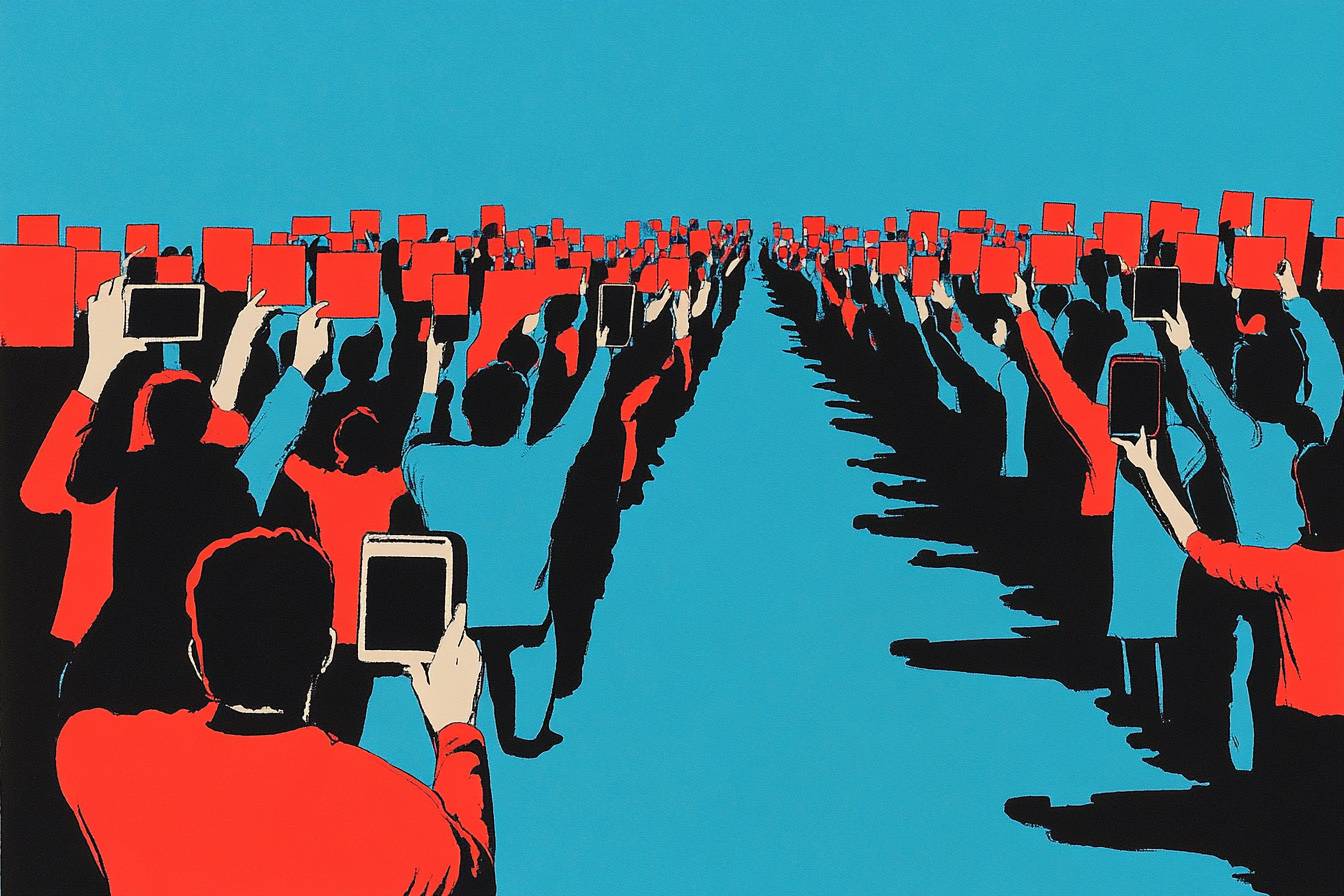
The Revolt of the Public
and the Crisis of Authority in the New Millennium
Martin Gurri
In The Revolt of the Public, Martin Gurri argues that the digital revolution has shattered the elite's control over information, empowering a global public that is increasingly skeptical, defiant, and capable of disrupting authority—but lacking a coherent vision to replace the old order, this revolt risks descending into nihilism and chaos. The book opens with a prelude that sets the stage for the current age of turbulence. It then presents case studies (Chapter 2), followed by the author's thesis (Chapter 3). Subsequent chapters analyze the nature of the public, the pivotal events of 2011, the erosion of institutional authority, and the rise of nihilism. The final chapters explore systemic choices and conclude with reflections on recent political upheavals like Trump and Brexit. The 2018 edition includes a new chapter, 'Reconsiderations,' which revisits the thesis in light of recent global events. The Revolt of the Public is relevant today as it connects the dots between various political disruptions—from the Arab Spring to the rise of populism in the West. Gurri's insights shed light on the challenges faced by both elites and the public in adapting to a rapidly changing information landscape. As society grapples with increasing polarization and distrust, the book serves as a crucial examination of how the balance of power has shifted and what it means for the future of democracy.

The Rise and Fall of American Growth
The U.S. Standard of Living Since the Civil War
Robert J. Gordon
In The Rise and Fall of American Growth, Robert J. Gordon argues that American economic growth was not steady or continuous. It peaked between 1920 and 1970 due to a unique set of transformative inventions and structural changes that dramatically improved the standard of living. Since then, growth has slowed due to diminishing returns from innovation and structural headwinds such as inequality, education stagnation, demographic shifts, and fiscal constraints. The book is divided into three parts. Part I (1870–1940) explores how 'great inventions' like electricity, the internal combustion engine, and communication technologies transformed American life and work. Part II (1940–2015) examines the postwar boom, the slowing pace of innovation, and the early signs of stagnation. Part III analyzes the causes of both the mid-century growth surge and the subsequent slowdown, including the limits of modern innovation and structural headwinds. Two 'Entr’acte' sections bridge the major parts, and a postscript reflects on the implications for future growth. This book is a deep economic and historical analysis of how the American standard of living evolved from 1870 to 2015. Gordon blends economic data with vivid historical detail, showing how technology, policy, and social change shaped the lives of ordinary Americans—and why such growth may not return. In an era of rising inequality and stagnant wages, this book offers critical insights into the challenges facing the American economy today.

The Road Ahead
Bill Gates, with Nathan Myhrvold and Peter Rinearson
In The Road Ahead, Bill Gates argues that the next major revolution after the personal computer will be in digital communication—what he calls the 'information highway.' This transformation will reshape how people communicate, work, and live. Gates emphasizes the importance of understanding and shaping this future, advocating for broad participation—not just from technologists. The book blends personal history, lessons from the rise of the personal computer, and a forward-looking analysis of the coming digital communication revolution. It is written for a general audience, not as a technical manual or autobiography. Gates uses his experience in the PC industry to draw parallels and offer insights into the future of the information highway. The book aims to stimulate debate and understanding about the choices ahead. The Road Ahead remains relevant today as society stands on the brink of further digital transformation. As technology continues to evolve, understanding the implications of digital communication is crucial for governments, companies, and individuals. Gates's call for broad engagement in shaping the digital world highlights the need for collective action to navigate the challenges and opportunities that lie ahead.

The Road to Serfdom
F. A. Hayek
In The Road to Serfdom, F. A. Hayek argues that centralized economic planning and socialism, even when pursued with good intentions, inevitably lead to the erosion of individual freedoms and the rise of totalitarian regimes. He warns that these systems, while often motivated by noble ideals, create dangerous paths that undermine democracy and personal liberty. The book is structured into 15 chapters, each addressing specific aspects of the dangers of central planning and socialism. It begins with an introduction to the historical and intellectual context, followed by chapters that explore the philosophical and practical consequences of collectivism. The book concludes with a summary of the argument and a call to preserve individual freedom. The relevance of The Road to Serfdom persists today as many societies grapple with the balance between state intervention and personal liberty. Hayek's insights serve as a cautionary tale against the allure of collectivist policies, reminding us of the potential consequences of sacrificing freedom for security. His defense of classical liberalism and free-market principles remains a vital part of the ongoing debate about the role of government in economic life.

The Road to Unfreedom
Timothy Snyder
In The Road to Unfreedom, Timothy Snyder argues that the collapse of the 'politics of inevitability'—the belief in inevitable progress—has given rise to the 'politics of eternity,' a cyclical narrative of victimhood and crisis that undermines democracy and fosters authoritarianism. Snyder examines how these dynamics have shaped Russia, Europe, and the United States, particularly in the 2010s. The book is divided into a prologue, six chapters, and an epilogue. Each chapter focuses on a specific year and theme, exploring the interplay of historical events, political ideologies, and societal changes. The prologue sets the stage with personal and historical reflections, while the epilogue offers a call to action for reclaiming history and virtues to counter authoritarianism. Additional sections include acknowledgments and endnotes. The Road to Unfreedom examines the rise of authoritarianism and the decline of democracy in the 21st century, with a focus on Russia's role in shaping global politics, the spread of disinformation, and the weakening of democratic norms in Europe and the United States. Timothy Snyder connects these developments to broader historical and philosophical trends, offering a framework for understanding and resisting the forces that threaten freedom and democracy.

The Scapegoat
René Girard
In The Scapegoat, René Girard argues that human societies maintain order by channeling collective violence onto a scapegoat—an innocent victim whose persecution unites the community. Myths and religious texts often conceal this mechanism, but the Gospels uniquely reveal and denounce it, especially through the Passion of Christ. The book is divided into 15 chapters. The first chapters analyze historical and literary examples of persecution. The middle chapters develop a theoretical framework for understanding myth, violence, and scapegoating. The final chapters interpret the Gospel narratives, showing how they expose and reject the scapegoat mechanism. The structure moves from historical case studies to theoretical exposition to theological analysis. The relevance of Girard's work resonates today as societies grapple with division and conflict. Understanding scapegoating can illuminate current social dynamics, revealing how communities often target innocent individuals to alleviate their own tensions. Girard's insights challenge readers to reconsider narratives of guilt and innocence, and to seek paths toward reconciliation rather than violence.

The Score Takes Care of Itself
Leadership Lessons from Bill Walsh
Bill Walsh, with Craig Walsh and Steve Jamison
In The Score Takes Care of Itself, Bill Walsh argues that success is not guaranteed. However, by establishing and adhering to a high standard of performance—focused on preparation, discipline, and leadership—you increase the probability of success. He emphasizes that if you do the right things the right way, the score will take care of itself. Walsh's insights stem from his experience as the head coach of the San Francisco 49ers, where he built a winning culture that transcended the sport. The book is structured into five parts, each addressing a different aspect of leadership and team building. Part I introduces Walsh’s Standard of Performance and the culture he built. Part II explores innovation, planning, and strategic thinking. Part III covers core leadership principles and habits. Part IV focuses on team dynamics, people management, and performance. Part V offers personal reflections and lessons. Each part concludes with a 'The Walsh Way' essay, providing additional perspectives on Walsh’s leadership style. This book remains relevant today as it offers a blueprint for leaders in any field. In a fast-paced and competitive environment, the principles of preparation, discipline, and effective teaching apply beyond football. Walsh’s blend of memoir, leadership manual, and coaching philosophy serves as a guide for those aiming to build high-performing teams and organizations, making it a valuable read for entrepreneurs and leaders alike.

The Secret of Our Success
How Culture Is Driving Human Evolution, Domesticating Our Species, and Making Us Smarter
Joseph Henrich
In The Secret of Our Success, Joseph Henrich argues that human success stems not from individual intelligence or genetic evolution alone, but from our unique capacity for culture. Culture acts as an evolutionary force that shapes our psychology, behavior, and biology, enabling cumulative knowledge, cooperation, and adaptation across generations. The book is structured into 17 chapters, preceded by a preface. It begins by framing the puzzle of human uniqueness and challenges the idea that intelligence alone explains our evolutionary success. It then introduces the concept of humans as a cultural species and explores how culture shapes our biology, psychology, and social systems. The chapters build a cumulative argument, using examples from anthropology, psychology, and evolutionary biology. The final chapters synthesize the argument, showing how culture has made us a new kind of animal. The relevance of this book today lies in its exploration of how culture influences our behavior and societal structures. In an age marked by rapid technological change and globalization, understanding the role of culture in shaping human interactions and cooperation is crucial. Henrich's insights can help us navigate contemporary challenges, from social cohesion to the development of new technologies, by emphasizing the importance of cultural evolution in our collective future.

The Selfish Gene
Richard Dawkins
In The Selfish Gene, Richard Dawkins argues that genes are the fundamental units of natural selection, and organisms—including humans—are survival machines built by genes to ensure their own replication. What appears to be altruism in nature is often a strategy that ultimately serves the selfish interests of genes. This perspective shifts our understanding of evolution from individuals and species to the genes that drive behavior and survival. The book is structured into 13 chapters. The first 11 chapters were part of the original 1976 edition and lay out the gene-centered view of evolution, exploring topics such as replication, aggression, kin selection, and cultural evolution. Chapters 12 and 13 were added in the 1989 edition to address new developments and ideas, including game theory and the extended influence of genes. The book is written in a non-technical, metaphor-rich style aimed at lay readers, students, and experts. The Selfish Gene remains relevant today as it challenges traditional views on altruism and cooperation. In an age where genetics and evolutionary theory inform fields like psychology, sociology, and even economics, Dawkins' insights encourage readers to reconsider the motivations behind behavior. The book's exploration of memes also resonates in our digital world, where ideas replicate and evolve much like genes, shaping culture and communication.

The Sense of Style
The Thinking Person's Guide to Writing in the 21st Century
Steven Pinker
In The Sense of Style, Steven Pinker argues that writing well is not just about following traditional style rules but understanding how language works in the mind. He combines insights from linguistics, cognitive science, and psychology to offer a modern guide to writing with clarity, coherence, and flair. The book begins with a prologue that critiques traditional style guides and introduces the need for a modern approach. It is divided into six chapters that explore the principles of good writing, the cognitive science of language, the pitfalls of outdated advice, and the mechanics of coherence and style. The book concludes with notes, a glossary, references, and acknowledgments. The Sense of Style is relevant in today's fast-paced, information-rich environment. As communication becomes increasingly essential across various platforms, understanding the science behind effective writing helps individuals convey their ideas clearly and persuasively. Pinker's blend of science and art empowers writers, from students to professionals, to enhance their craft in the 21st century.

The Song of the Cell
An Exploration of Medicine and the New Human
Siddhartha Mukherjee
In The Song of the Cell, Siddhartha Mukherjee argues that the cell is the fundamental unit of life, and our deepening understanding of its biology has sparked a revolution in medicine—enabling therapies that manipulate, repair, and reengineer cells, thereby transforming human health and identity. This transformation opens new avenues for treating diseases and reshaping our understanding of what it means to be human. The book is structured into six parts, each exploring a different dimension of cell biology and its impact on medicine. Part One (Discovery) traces the historical origins of cell theory. Part Two (The One and the Many) explores how cells organize, divide, and develop into complex organisms. Part Three (Blood) focuses on the immune system and its cellular components. Part Four (Knowledge) addresses the COVID-19 pandemic and its cellular implications. Part Five (Organs) examines how cells form and regulate organs. Part Six (Rebirth) discusses stem cells, regeneration, and cancer. The book includes a Prelude, Introduction, and Epilogue, along with notes, bibliography, and index. Mukherjee's exploration is timely as we navigate a world increasingly shaped by advances in cellular therapies, especially in light of recent global health crises. Understanding cells is critical not only for medical advancements but also for grappling with ethical questions surrounding biotechnology and human enhancement. This book invites readers to consider the promise and perils of the cellular revolution, making it a vital contribution to contemporary discussions in medicine and human identity.

The Soul of a New Machine
Tracy Kidder
In The Soul of a New Machine, Tracy Kidder argues that the soul of a computer lies not in its circuits or code, but in the people who build it—their passion, obsession, and ingenuity. This perspective emphasizes the human element in technology, showcasing how the dedication and creativity of engineers shape the tools that define our modern world. The book is structured as a narrative nonfiction account, following the development of a new high-performance computer at Data General Corporation in the late 1970s. It centers on the engineers and managers who drive the project, especially Tom West. The story unfolds like a novel, with character development, tension, and resolution, but is grounded in real events. The prologue introduces West through a sailing trip, setting the tone for his role in the story. The rest of the book likely follows the technical and human challenges of building the machine, though chapter titles are not provided in the frontmatter. The Soul of a New Machine remains relevant today as it highlights the intersection of technology and human experience. In an era where innovation drives industries, understanding the culture of engineering and the psychology behind technological creation is crucial. Kidder’s vivid storytelling not only captures the drama of building a computer but also serves as a reminder of the passion and teamwork that fuel advancements in technology.

The Strange Death of Europe
Immigration, Identity, Islam
Douglas Murray
In The Strange Death of Europe, Douglas Murray argues that Europe is undergoing a process of self-destruction due to mass immigration, loss of cultural confidence, and a failure to integrate new arrivals. This transformation is irreversible and will lead to the end of Europe as it has historically existed. Murray presents a compelling case that the continent's identity is at stake and highlights the consequences of ignoring these issues. The book is structured into 19 chapters, plus an introduction and concluding sections. It begins by outlining the premise that Europe is committing cultural suicide. It then explores the history of immigration, the justifications for it, and the consequences. Later chapters discuss multiculturalism, the failure of integration, and the political and social responses. The final chapters examine Europe's existential crisis, its inability to reverse course, and possible future scenarios. Murray's work is timely and relevant as Europe grapples with rising immigration and cultural shifts. The book sheds light on the ideological justifications for immigration and the challenges of integration. It also addresses the rise of populist movements and the suppression of dissenting views, making it essential reading for anyone seeking to understand the current political landscape in Europe.

The Technical and Social History of Software Engineering
Capers Jones
In The Technical and Social History of Software Engineering, Capers Jones argues that software engineering has evolved from a craft into a critical global profession, shaped by both technical innovation and social forces. Understanding this evolution helps us grasp how software became central to modern life and what challenges lie ahead. The book is structured chronologically, beginning with a prelude on the ancient roots of computation and continuing decade by decade from the 1930s through the 2010s. Each chapter explores key technical innovations, major companies, and social developments of the era. The final two chapters focus on modern software failures and the rise of cybercrime and cyberwarfare. This book is relevant today as it provides a comprehensive history of software engineering, tracing its evolution from early mathematical tools to the modern digital age. It examines how software has transformed from a niche technical pursuit into a foundational element of global society. This context offers valuable insights for both practitioners and historians as they navigate the ongoing challenges in the software industry.

The True Believer
Thoughts on the Nature of Mass Movements
Eric Hoffer
In The True Believer, Eric Hoffer argues that all mass movements—whether religious, political, or social—share core psychological and structural traits. They attract the frustrated, demand blind allegiance, and foster fanaticism and self-sacrifice. The book explores the nature of the 'true believer' and how mass movements form, grow, and operate. The book is divided into four parts. Part 1, 'The Appeal of Mass Movements,' explores why people are drawn to mass movements. Part 2, 'The Potential Converts,' examines the types of individuals who join these movements, focusing on the frustrated and marginalized. Part 3, 'United Action and Self-Sacrifice,' analyzes how movements create unity and demand personal sacrifice. Part 4, 'Beginning and End,' looks at the lifecycle of movements and the roles of ideologues, fanatics, and pragmatists. Each part contains several chapters that build on the central thesis. The True Believer remains relevant today as mass movements continue to shape societies around the world. Understanding the psychological mechanisms behind these movements helps us navigate the complexities of modern political and social landscapes. Hoffer's insights into fanaticism and the allure of collective identity provide valuable lessons for individuals and leaders alike in an era marked by polarization and unrest.

The Unbound Prometheus
Technological Change and Industrial Development in Western Europe from 1750 to the Present
David S. Landes
In The Unbound Prometheus, David S. Landes argues that technological change played a crucial role in driving industrial development in Western Europe from 1750 onward. He posits that industrialization was not solely a British phenomenon but a broader European process, with various countries adopting and adapting technologies at different rates. This perspective challenges the notion that Britain was the only leader in industrial advancement, highlighting a more complex and interconnected narrative of technological progress across Europe. The book is structured into eight chapters. It begins with an introduction to the topic of industrialization, followed by a detailed analysis of Britain's Industrial Revolution. Subsequent chapters discuss how other European nations emulated British advancements, the challenges they faced in closing the technological gap, and the impact of the interwar years. The later chapters examine post-World War II reconstruction and long-term economic growth, culminating in a conclusion that summarizes the key findings and implications of the research. The relevance of The Unbound Prometheus in today's context lies in its comprehensive historical analysis of industrialization, which offers insights into the dynamics of technological change and economic development. As we navigate the challenges of the modern economy, understanding the historical patterns of industrial growth and the adaptation of technology can inform current strategies for innovation and economic resilience. Landes' work serves as a reminder of the interconnectedness of nations in the face of technological advancement and economic transformation.

The Unmaking of IBM
Big Blues: The Unmaking of IBM
Paul Carroll
In The Unmaking of IBM, Paul Carroll argues that IBM, once the most powerful and admired company in the world, collapsed under the weight of its own bureaucracy, cultural rigidity, and inability to adapt to the fast-changing computer industry—especially in the personal computer and software markets. The book examines how internal dysfunction and missed opportunities led to IBM's decline, despite executives recognizing the need for change. The book is structured as a narrative history, beginning with IBM's early struggles to enter the personal computer market, its explosive success in the early 1980s, and its eventual decline. It uses a mix of chronological storytelling and thematic analysis, drawing on interviews with former IBM executives, industry insiders, and the author's own reporting. The preface sets the stage for a story of rise and fall, likening IBM's trajectory to a Greek tragedy. The book likely proceeds through key episodes in IBM's history, including the development of the PC, the rise of Microsoft, internal cultural dysfunction, and the broader implications for American business. This book is relevant today as it highlights the dangers of bureaucracy and cultural inertia in organizations. As the tech industry continues to evolve rapidly, companies must remain agile and responsive to change. Carroll's insights serve as a cautionary tale for modern businesses, emphasizing the importance of adaptability and foresight in maintaining competitive advantage.

The WEIRDest People in the World
How the West Became Psychologically Peculiar and Particularly Prosperous
Joseph Henrich
In The WEIRDest People in the World, Joseph Henrich argues that Western societies are psychologically unusual—more individualistic, analytical, and impersonal—compared to most human societies past and present. This psychological distinctiveness, which underpins Western prosperity, emerged from historical changes in family structure and religion, especially the Catholic Church’s policies on marriage and kinship, which reshaped social norms, cognition, and institutions over centuries. The book is divided into four parts. Part I (Chapters 1–4) introduces the concept of WEIRD psychology and explores how societies and minds co-evolve through culture, kinship, and religion. Part II (Chapters 5–8) traces the historical roots of WEIRD psychology to changes in family structure and the influence of the Catholic Church, with comparisons to Asia. Part III (Chapters 9–11) examines how new institutions like markets, cities, and warfare further shaped Western minds. Part IV (Chapters 12–14) connects these psychological changes to the rise of modern institutions like science, democracy, and law. The book includes a preface, a prelude, and three appendices. This book is relevant today as it sheds light on the cultural foundations of Western thought and behavior. Understanding these psychological differences can help navigate global interactions and foster better communication across diverse cultures. Henrich's insights challenge the notion of universal human psychology, emphasizing the role of history and culture in shaping our minds and societies.

Theory and Applications of Ontology: Computer Applications
Volume 2 of the Theory and Applications of Ontology series
Edited by Roberto Poli, Michael Healy, and Achilles Kameas
In Theory and Applications of Ontology: Computer Applications, the editors argue that ontology in philosophy and ontology in computer science are not separate disciplines but share common problems and goals. Bridging the gap between philosophical ontology (categorial analysis) and technological ontology (knowledge engineering) can lead to better tools, models, and understanding in both fields. The book is structured into four parts. Part 1 introduces theoretical perspectives and foundational issues in ontology. Part 2 presents foundational ontologies and tools for ontology engineering. Part 3 explores domain-specific applications of ontologies in fields like biology, medicine, business, and e-government. Part 4 focuses on formal and mathematical approaches to ontology, including logic, algebra, and category theory. Each chapter is written by a different expert and can be read independently, though the parts are thematically grouped to guide the reader from general to specific and from applied to formal. This book is relevant in today's world as it addresses the increasing need for semantic interoperability, data integration, and knowledge representation in complex systems. As technology evolves, the demand for clearer communication between philosophical concepts and technological applications grows. This volume serves as a roadmap for fostering dialogue between philosophers and engineers, ultimately enhancing the understanding and application of ontologies in various domains.

Thinking in Systems
A Primer
Donella H. Meadows
In Thinking in Systems, Donella H. Meadows argues that systems thinking is a powerful way to understand and influence the complex, interconnected systems that shape our world. By learning to see systems and their structures, we can better understand persistent problems and identify leverage points for change. The book is divided into three parts. Part One introduces the basics of systems and their behavior, including feedback loops and system archetypes. Part Two explores how systems interact with human behavior, why they often surprise us, and how they can be both resilient and fragile. Part Three focuses on how to intervene in systems effectively and how to live more wisely within them. The book concludes with an appendix that includes a glossary, summary of principles, and model equations. Thinking in Systems remains relevant today as we face complex global challenges, such as climate change, economic instability, and social inequalities. Meadows' insights into systems dynamics provide valuable tools for business leaders, policymakers, and citizens alike. By understanding the underlying structures of these systems, we can develop more effective strategies for creating lasting change.

Tools and Weapons
The Promise and the Peril of the Digital Age
Bradford L. Smith
In Tools and Weapons, Bradford L. Smith argues that technology has become both a powerful tool and a dangerous weapon. As it reshapes society, tech companies and governments must take shared responsibility to manage its impact. The book advocates for a new model of collaboration between the tech sector and democratic institutions to tackle the challenges of privacy, security, ethics, and regulation in the digital age. The book is structured into 16 chapters, each addressing a key issue at the intersection of technology and society. It begins with an introduction that frames the cloud as the modern world's filing cabinet and sets the stage for broader discussions. The chapters cover topics such as surveillance, privacy, cybersecurity, democracy, social media, AI, and geopolitics. The final chapter offers a conclusion and a call to action for responsible technology governance, blending historical context, real-world case studies, and insider perspectives from Microsoft to explore the ethical and societal implications of modern technology. Tools and Weapons is relevant today as digital technology plays a central role in our lives, bringing immense benefits alongside serious risks. Written by Microsoft President Brad Smith, the book provides an insider’s view of how one of the world’s largest tech companies navigates the ethical, legal, and societal challenges posed by innovations like AI and facial recognition. It emphasizes the need for tech companies to take greater responsibility and for governments to act swiftly to regulate technology in ways that uphold democratic values, serving as both a warning and a roadmap for managing technology's power in a way that benefits society.

Training & Development For Dummies
2nd Edition
Elaine Biech
In Training & Development For Dummies, Elaine Biech argues that effective training and talent development are essential for modern organizations. The book offers a practical guide that combines foundational training practices with broader responsibilities of talent development professionals. It emphasizes the importance of designing, delivering, and evaluating learning experiences while also addressing coaching, culture-building, and strategic alignment within organizations. The book is structured into six parts. Part 1 introduces training and talent development. Part 2 covers the ADDIE model, detailing the training process from analysis to evaluation. Part 3 explores practical aspects beyond ADDIE, including facilitation and media use. Part 4 focuses on talent development, highlighting the creation of a learning culture and employee growth. Part 5 discusses professional growth and certification, while Part 6 provides quick tips and best practices in a 'Part of Tens' format. This book is particularly relevant today as organizations face rapid changes in technology and workforce dynamics. It equips training and talent development professionals with the tools to adapt and thrive in a fast-paced environment. By fostering a learning culture and aligning development efforts with business strategies, professionals can ensure that their organizations remain competitive and agile in an ever-evolving landscape.

Violence and the Sacred
René Girard
In Violence and the Sacred, René Girard argues that violence lies at the root of the sacred. Human societies developed ritual sacrifice as a way to manage the destructive effects of mimetic desire—our tendency to imitate others' desires, which leads to rivalry and conflict. Sacrificial systems and myths serve to deflect communal violence onto a scapegoat, restoring social order. The book is divided into eleven chapters and a conclusion. It begins with an analysis of sacrifice and the role it plays in society. It then explores the concept of the 'sacrificial crisis' and how myths and rituals emerge to resolve it. Girard uses case studies from mythology (Oedipus, Dionysus), psychoanalysis (Freud), and anthropology (Levi-Strauss) to support his theory. The final chapters synthesize these insights into a unified theory of ritual and the sacred. Violence and the Sacred is a foundational work in anthropology, philosophy, and religious studies. René Girard explores how human societies use ritual, myth, and religion to manage the threat of internal violence. At the center of his theory is mimetic desire—the idea that we imitate others' desires, which leads to rivalry and conflict. To prevent chaos, societies develop sacrificial systems that channel violence onto a scapegoat. These rituals become the basis of the sacred. Girard draws on literature, myth, psychoanalysis, and structural anthropology to build a sweeping theory of culture and violence.

Who Says Elephants Can’t Dance?
Leading a Great Enterprise Through Dramatic Change
Louis V. Gerstner, Jr.
In Who Says Elephants Can’t Dance?, Louis V. Gerstner, Jr. argues that even the largest, most tradition-bound companies can be transformed through decisive leadership, cultural change, and strategic clarity. He uses his experience at IBM to illustrate how a massive, struggling enterprise can be turned around, highlighting the importance of strong leadership in times of crisis. The book is structured into four parts. Part I, 'Grabbing Hold,' covers Gerstner’s arrival at IBM and the initial steps to stabilize the company. Part II, 'Strategy,' details the strategic shifts that repositioned IBM, focusing on services, software, and e-business. Part III, 'Culture,' explores the internal cultural transformation necessary to support the new strategy. Finally, Part IV, 'Lessons Learned,' distills Gerstner’s key takeaways on leadership, execution, and business transformation, concluding with appendices on the future of e-business and a financial overview. This book remains relevant today as many organizations face rapid technological change and market disruption. Gerstner’s insights into leadership and strategic clarity provide valuable lessons for modern executives navigating complex business landscapes. His firsthand account of IBM’s turnaround serves as a powerful reminder that with the right vision and execution, even the most entrenched companies can adapt and thrive.

Working in Public
The Making and Maintenance of Open Source Software
Nadia Eghbal
In Working in Public, Nadia Eghbal argues that open source software has shifted from a collaborative model to a creator-centric one, where a small number of maintainers manage the bulk of the work. This mirrors broader trends in the creator economy and challenges the assumption that more participation is always beneficial. The book calls for a new understanding of open source as a system shaped by individual creators, not communities. The book is divided into an Introduction, two main parts, and a Conclusion. Part 1, 'How People Make,' explores the platforms, structures, and social dynamics of open source projects. Part 2, 'How People Maintain,' focuses on the ongoing work of maintaining software, the costs involved, and the challenges of managing attention and contributions. The book ends with a Conclusion, followed by Credits and Notes. Working in Public examines the changing nature of open source software development. Eghbal highlights that the traditional view of open source as a collaborative community effort no longer reflects reality. Instead, most projects are maintained by a small number of individuals who face overwhelming demands from users and contributors. The book explores how platforms like GitHub shape these dynamics and draws parallels between open source maintainers and online creators on platforms like YouTube or Twitter. It offers a new lens for understanding digital production, participation, and the economics of online work.

You Can Be a Stock Market Genius
(Even If You're Not Too Smart): Uncover the Secret Hiding Places of Stock Market Profits
Joel Greenblatt
In You Can Be a Stock Market Genius, Joel Greenblatt argues that individual investors can achieve outsized returns by focusing on overlooked and misunderstood areas of the stock market, such as spinoffs, restructurings, and other special situations. He emphasizes that these opportunities are often ignored by the broader market, allowing savvy investors to capitalize on mispriced stocks. The book is structured into eight chapters, each highlighting a specific investment strategy related to special situations. It begins with foundational investing principles, then delves into strategies like spinoffs, risk arbitrage, bankruptcies, and recapitalizations. The final chapters synthesize these strategies and stress the importance of independent research. Additionally, the book includes an appendix, glossary, and index for reference. In today's fast-paced financial landscape, this book remains relevant as it equips investors with the tools to identify hidden opportunities. With market volatility and uncertainty, Greenblatt's insights offer a roadmap for those willing to look beyond conventional wisdom. His practical approach encourages individual investors to take charge of their financial futures by seeking out unique investment prospects.

microserfs
Douglas Coupland
In microserfs, Douglas Coupland argues that the inner lives, relationships, and existential questions of young tech workers in the 1990s reveal the emotional cost of life inside the digital revolution. The novel captures the culture of early Silicon Valley, focusing on the struggles and aspirations of those navigating a rapidly changing world shaped by technology. The book is structured into seven chapters, each with a thematic title. These chapters likely follow a narrative arc while also exploring specific ideas or cultural phenomena related to technology, identity, and the future. The structure suggests a blend of character-driven storytelling and thematic exploration, allowing readers to engage with both the plot and the underlying commentary. Today, microserfs remains relevant as it reflects the ongoing tension between technology and human identity. As we continue to grapple with the impact of the digital age on our lives, Coupland's insights into the experiences of tech workers resonate with contemporary discussions about work, culture, and the quest for meaning in an increasingly digital world.